


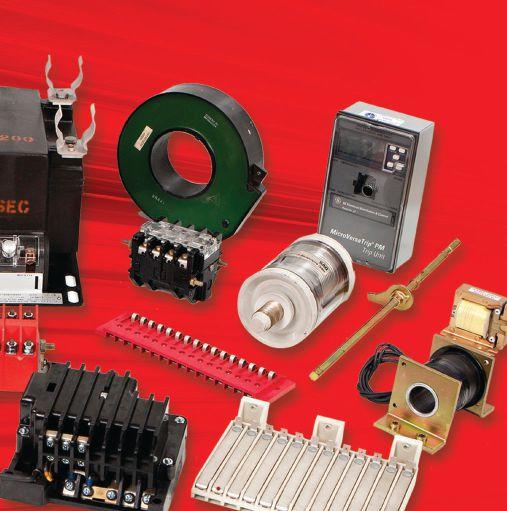




www.bcsswitchgear.com Call Toll Free: 888-598-0486








MOLDED CASE BREAKERS
MV SWITCHES
VACUUM CONTACTORS
AIR CIRCUIT BREAKERS
INSULATED CASE BREAKERS
SWITCHGEAR


VACUUM BREAKERS
MEDIUM VOLTAGE BREAKERS





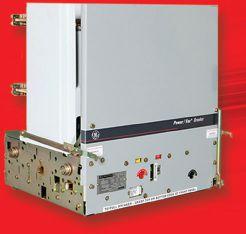

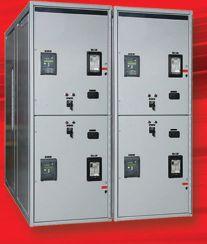

ABB
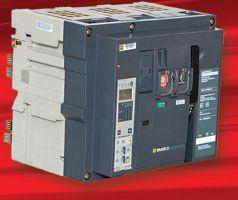
GENERAL ELECTRIC
ITE GOULD
WESTINGHOUSE
SIEMENS
SQUARED D
ALLIS CHALMERS
FEDERAL PACIFIC
EATON
CUTLER HAMMER
MERLIN GERIN
MULTILIN













WHEN YOU NEED EQUIPMENT BCS HAS YOUR SOLUTION NEW SURPLUS OBSOLETE RECONDITIONED BCS Switchgear, Inc. is one of the largest industrial suppliers and repair facilities of Industrial Electrical Equipment www.bcsswitchgear.com Call Toll Free: 888-598-0486



Take Charge of Your Testing Needs




The addition of the Power Diagnostix brand brings a leader in the development and manufacturing of partial discharge detection equipment to the Megger family of testing solutions.
Partial discharge testing allows for early warning of potential failure, allowing time to plan maintenance. Tests can be conducted on-line, on a continuous basis or during maintenance to provide all around condition monitoring of the asset. Learn more about our partial discharge testing solutions at PowerTest 2020.
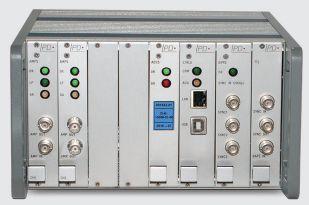
ICMsystem
1-800-723-2861 us.megger.com/powertest
We’ll
NETA PowerTEST 2020
Drop by BOOTH 219 for a breezy look at our newest products.
Partial Discharge Testing Solutions are now a part of the Megger family.
See You in The Windy City at
!
Power Diagnostix
High-end digital partial discharge detector that is a powerful, versatile instrument for evaluating the condition of medium and high voltage insulation. Learn more about the ICMsystem at the New Product Forum during NETA PowerTest!
COVER STORY

Troubleshooting a Circuit Breaker
To effectively troubleshoot a circuit breaker mechanism, the technician must understand what a mechanism does, how it does it, and why it does it. Without this knowledge, how do you know whether something is performing correctly? It may be performing exactly as designed; you just don’t understand what it is designed to do.
Troubleshooting requires information, knowledge and experience, persistence, and an open mind. Nearly every troubleshooting situation will take the technician on a slightly different journey than the last — and possibly the next. When a technician takes time to gather all available information and then applies knowledge, common sense, and a reasonable plan, troubleshooting can be done safely and efficiently.
By Steve Skinner, Doble Engineering Company
FEATURES
7 President’s Desk
Scott Blizard, American Electrical Testing Co., LLC
NETA President
56 VLF Tan Delta Cable Testing: Is It Right for Your Company?
Rick Youngblood, Electrical Maintenance and Testing
64
Categorizing Faults in Power Transformers via Dissolved Gas Analysis
Randy Cox, GE Grid Solutions
72 Bushing Condition Assessment and Troubleshooting
Daniel Carreño, Abel González, and Volney Naranjo, Megger
84
Advanced Moisture Assessment for Transformers
Oleg Roizman, Intellpower Pty. Ltd., and James J. Dukarm, Delta-X Research
TABLE OF CONTENTS TABLE OF CONTENTS NETAWORLD • 3
44
2020
VOLUME
COVER IMAGE COURTESY OF DOBLE ENGINEERING COMPANY
SPRING
·
42, NO. 1
10 NFPA 70E and NETA Is Troubleshooting Energized Work?
Ron Widup and James R. White, Shermco Industries
17 Relay Column
Aligning CT Polarity for Multi-Current Input
Differential Relays
Steve Turner, Arizona Public Service Company
22 In the Field
Post Time: A Troubleshooting Adventure
Don Genutis, Halco Testing Services
28 Tech Quiz
Troubleshooting
James R. White, Shermco Industries
32 Safety Corner
Troubleshooting Human Error to Ensure Safety
Paul Chamberlain, American Electrical
Testing Co., LLC
38 Tech Tips
Monitoring a Grounded System
Jeff Jowett, Megger INDUSTRY TOPICS
96 Is Your Arc-in-Oil Load Tap Changer Due for Maintenance?
Robert T. Rasor, SDMyers
ADVANCEMENTS IN INDUSTRY
102 A Reliable Plant Is a Safe Plant
Alan Ross, SDMyers
INSIGHTS & OBSERVATIONS — NETA CAP SPOTLIGHT
Doble: Ensuring Safe and Reliable Power for Nearly a Century
70B Committee Report David
Power Systems Testing Company
4 • SPRING 2020 TABLE OF CONTENTS TABLE OF CONTENTS
ISSUE
IN EVERY
110
114
118
NETA NEWS 122 New Product Forum IMPORTANT LISTS 127 NETA Accredited Companies 134
SPECIFICATIONS AND STANDARDS
ANSI/NETA Standards Update
NFPA
Huffman,
Advertiser List






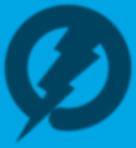


The Electrical Test Equipment Rental Experts t 866-352-5550 Dallas | Atlanta | Chicago Houston | New Jersey | Reno The number one choice for Nobody Works Harder For You Than Protec We understand that you need experienced people to align you with the proper equipment, and measurement equipment, with all Protec
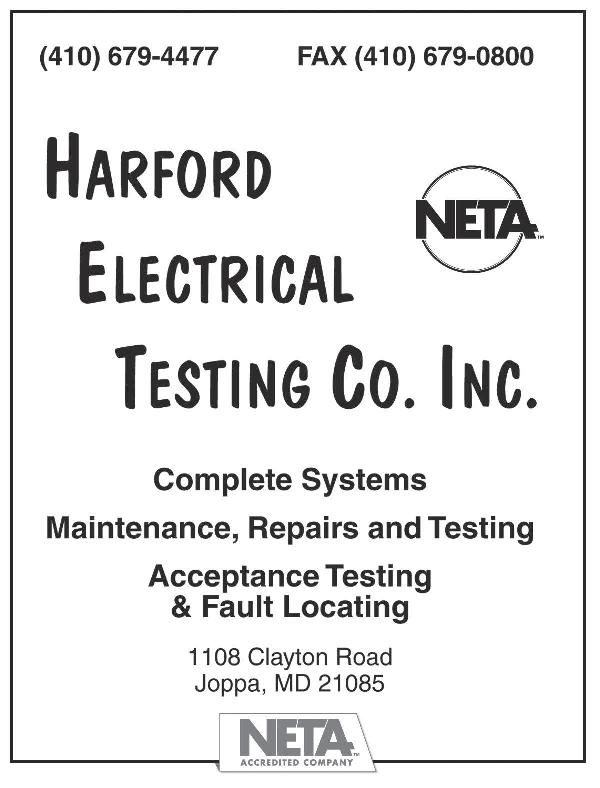
3050 Old Centre Road, Suite 101
Portage, MI 49024
Toll free: 888.300.NETA (6382)
Phone: 269.488.NETA (6382)
Fax: 269.488.6383 neta@netaworld.org www.netaworld.org
EXECUTIVE DIRECTOR: Missy Richard
NETA Officers
PRESIDENT: Scott Blizard, American Electrical Testing Co., Inc.
SECOND VICE PRESIDENT: Eric Beckman, National Field Services
SECRETARY: Scott Dude, Dude Electrical Testing, LLC
TREASURER: John White, Sigma Six Solutions, Inc.
NETA Board of Directors
Ken Bassett (Potomac Testing, Inc.)
Eric Beckman (National Field Services)
Scott Blizard (American Electrical Testing Co., Inc.)
Jim Cialdea (CE Power Engineered Services, LLC)
Scott Dude (Dude Electrical Testing LLC)
Dan Hook (Western Electrical Services, Inc.)
David Huffman (Power Systems Testing)
Alan Peterson (Utility Service Corporation)
Chasen Tedder, Hampton Tedder Technical Services
John White (Sigma Six Solutions)
Ron Widup (Shermco Industries)
NETA World Staff
TECHNICAL EDITORS: Roderic L. Hageman, Tim Cotter
ASSISTANT TECHNICAL EDITORS: Jim Cialdea, Dan Hook, Dave Huffman, Bob Sheppard
ASSOCIATE EDITOR: Resa Pickel
MANAGING EDITOR: Carla Kalogeridis
COPY EDITOR: Beverly Sturtevant
ADVERTISING MANAGER: Laura McDonald
DESIGN AND PRODUCTION: Moon Design
NETA Committee Chairs

#1 Great Lakes Electrical Testing Firm

CONFERENCE: Ron Widup; MEMBERSHIP: Ken Bassett; PROMOTIONS/MARKETING: Scott Blizard; SAFETY: Scott Blizard and Jim White; TECHNICAL: Alan Peterson; TECHNICAL EXAM: Dan Hook; CONTINUING TECHNICAL DEVELOPMENT: David Huffman; TRAINING: Eric Beckman; FINANCE: John White; NOMINATIONS: Alan Peterson; ALLIANCE PROGRAM: Jim Cialdea; ASSOCIATION DEVELOPMENT: Ken Bassett and John White
© Copyright 2020, NETA
NOTICE AND DISCLAIMER
NETA World is published quarterly by the InterNational Electrical Testing Association. Opinions, views and conclusions expressed in articles herein are those of the authors and not necessarily those of NETA. Publication herein does not constitute or imply endorsement of any opinion, product, or service by NETA, its directors, officers, members, employees or agents (herein “NETA”).
All technical data in this publication reflects the experience of individuals using specific tools, products, equipment and components under specific conditions and circumstances which may or may not be fully reported and over which NETA has neither exercised nor reserved control. Such data has not been independently tested or otherwise verified by NETA.
NETA MAKES NO ENDORSEMENT, REPRESENTATION OR WARRANTY AS TO ANY OPINION, PRODUCT OR SERVICE REFERENCED OR ADVERTISED IN THIS PUBLICATION. NETA EXPRESSLY DISCLAIMS ANY AND ALL LIABILITY TO ANY CONSUMER, PURCHASER OR ANY OTHER PERSON USING ANY PRODUCT OR SERVICE REFERENCED OR ADVERTISED HEREIN FOR ANY INJURIES OR DAMAGES OF ANY KIND WHATSOEVER, INCLUDING, BUT NOT LIMITED TO ANY CONSEQUENTIAL, PUNITIVE, SPECIAL, INCIDENTAL, DIRECT OR INDIRECT DAMAGES. NETA FURTHER DISCLAIMS ANY AND ALL WARRANTIES, EXPRESS OF IMPLIED, INCLUDING, BUT NOT LIMITED TO, ANY IMPLIED WARRANTY OF FITNESS FOR A PARTICULAR PURPOSE.
ELECTRICAL TESTING SHALL BE PERFORMED ONLY BY TRAINED ELECTRICAL PERSONNEL AND SHALL BE SUPERVISED BY NETA CERTIFIED TECHNICIANS/ LEVEL III OR IV OR BY NICET CERTIFIED TECHNICIANS
IN ELECTRICAL TESTING TECHNOLOGY/LEVEL III OR IV. FAILURE TO ADHERE TO ADEQUATE TRAINING, SAFETY REQUIREMENTS, AND APPLICABLE PROCEDURES MAY RESULT IN LOSS OF PRODUCTION, CATASTROPHIC EQUIPMENT FAILURE, SERIOUS INJURY OR DEATH.
Electrical Testing Association
•Acceptance Testing •Preventative
Predictive Maintenance •Technical Support•Protective Relays • Transformers• Switchgear • Breakers • Infrared & Ultrasonic Survey • Cable Locating • VLF & Tan Delta Testing• Partial Discharge• Meters• Grounding• Generator Controls• ATS• UPS• Battery Systems • Motor Control Centers • Switches• Capacitor Banks When downtime is not an option 734-216-7229 Ann Arbor, MI Dayton, OH www.uispowerservices.com Factor/Transient Studies & Corrections • Electrical Testing & Commissioning TM Stop by and see us at PowerTest 2020 Booth #239
• Full Member of the InterNational
(NETA) • Licensed Electricians (IBEW-JIW) • Member of the National Electrical Contractors Association (NECA) • ISO/IEC 17025 Accredited
and
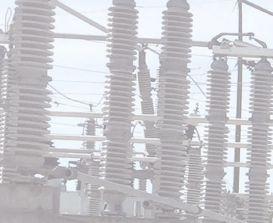

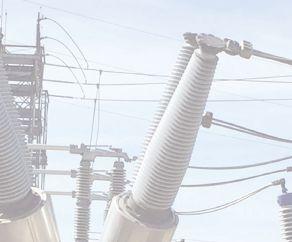

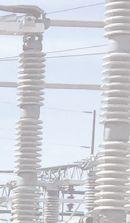
WELCOME TO POWERTEST 2020
As we leave winter and advance into spring, our industry is preparing for the spring outage season. This time of year, the return of daylight leads to longer work days and more deadlines to meet the expectations of our customers. Be sure to follow the safety policies of your company as well as those required by the facility where the work is being performed. Be safe when in doubt, and always err on the side of caution.
The theme for this issue of NETA World is troubleshooting the electrical power system and its equipment. Efficient troubleshooting requires attaining as much information as possible. Ask the right questions and help those giving the answers reflect about what happened and why. For example, has it happened before, and if so, were the surrounding conditions similar? Obtain the proper wiring diagrams for the systems as well as the manufacturer’s equipment manuals for the device(s) being investigated. Prepare and conduct a pre-job briefing outlining the process and addressing all safety concerns with personnel prior to starting work. At that point, the troubleshooter can start the process of eliminating those items that don’t fit with the known facts.
Check out these topics in this edition: analyzing transformer faults, moisture assessment, tan delta cable testing, bushing condition assessment, and circuit breaker troubleshooting.
I hope you are planning to join NETA in Chicago to take advantage of everything PowerTest 2020 has to offer. We have made some improvements and adjustments to this year’s PowerTest program to improve your experience. Please take some time to let the NETA staff what you like and what you don’t like. Give some in-depth thought while fi evaluation sheets within the mobile app at each of the presentations. Your feedback is greatly appreciated and important to the NETA organization as we move towards the future.
Mark your calendars! PowerTest 2021, the premier electrical maintenance and safety conference, will take place March 8–March 12, 2021, at the Rosen Shingle Creek in Orlando, Florida. We look forward to seeing you there.
Coach safe behavior … Living injury free every day!
 Scott A. Blizard, President International Electrical Testing Association
Scott A. Blizard, President International Electrical Testing Association
Safety First…No One Gets Hurt!

PRESIDENT’S DESK PRESIDENT’S DESK



The largest NETA Accredited technical group in the industry, that never compromises safety.
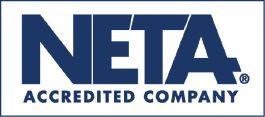
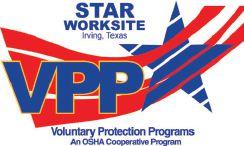
As North America’s largest independent electrical testing company, our most important Company core value should come as no surprise: assuring the safety of our people and our customer’s people. First and foremost.
Our service technicians are NETA-certified and trained to comply and understand electrical safety standards and regulations such as OSHA, NFPA 70E, CSA Z462, and other international guidelines. Our entire staff including technicians, engineers, administrators and management is involved and responsible for the safety of our co-workers, our customers, our contractors as well as our friends and families.
Our expertise goes well beyond that of most service companies. From new construction to maintenance services, acceptance testing and commissioning to power studies and rotating machinery service and repair, if it’s in the electrical power system, up and down the line, Shermco does it.
www.shermco.com 888-SHERMCO
One Line. One Company.
IS TROUBLESHOOTING ENERGIZED WORK?
 BY RON WIDUP and JIM WHITE, Shermco Industries
BY RON WIDUP and JIM WHITE, Shermco Industries
This issue’s theme brings up a question frequently asked by NETA technicians: “When does troubleshooting end and when does repair begin?” This question is often paired with “What does 70E say about troubleshooting and repair?” We hope to make things clear for everyone in the field.
To begin, look at the definition of “working on” (energized electrical conductors and circuit parts) from Article 100 of NFPA 70E:
Working On (energized electrical conductors or circuit parts).
Intentionally coming in contact with energized electrical conductors or circuit parts with the hands, feet, or other body parts, with tools, probes, or with test equipment, regardless of the
personal protective equipment (PPE) a person is wearing. There are two categories of “working on”: Diagnostic (testing) is taking readings or measurements of electrical equipment with approved test equipment that does not require making any physical change to the equipment; repair is any physical alteration of electrical equipment (such as making or tightening connections, removing or replacing components, etc.).
10 • SPRING 2020 IS TROUBLESHOOTING ENERGIZED WORK?
NFPA 70E AND NETA
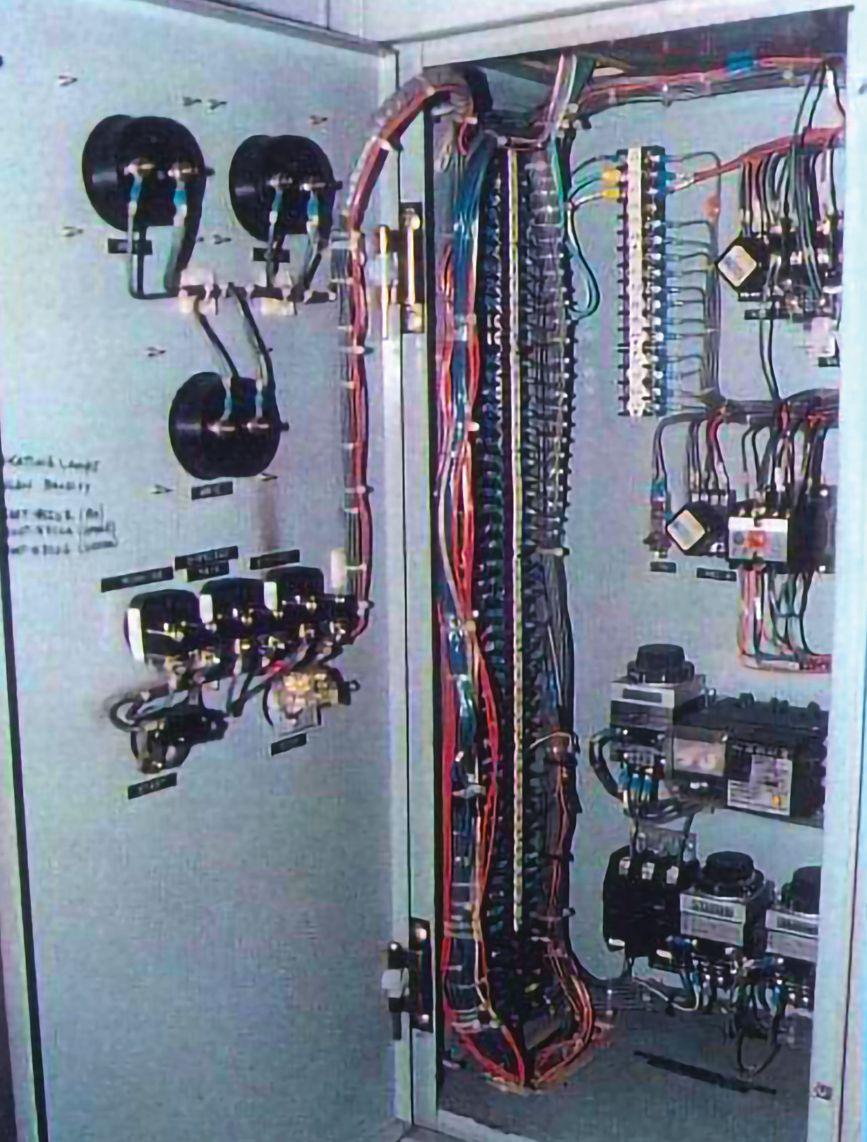
Figure 1: Work Area
There is a lot going on in this definition. The first sentence begins with “Intentionally coming in contact ….. with the hands, feet, or other body parts ….” So in this definition, contact is not accidental, but intentional with any part of the body. This separates it from unintentional
contact (incident) or any type of equipment failure. That sentence continues “with tools, probes, or with test equipment, regardless of the personal protective equipment (PPE) a person is wearing.” This makes it clear that using voltage testers or any other type of test equipment is
NETAWORLD • 11 IS TROUBLESHOOTING ENERGIZED WORK? NFPA 70E AND NETA


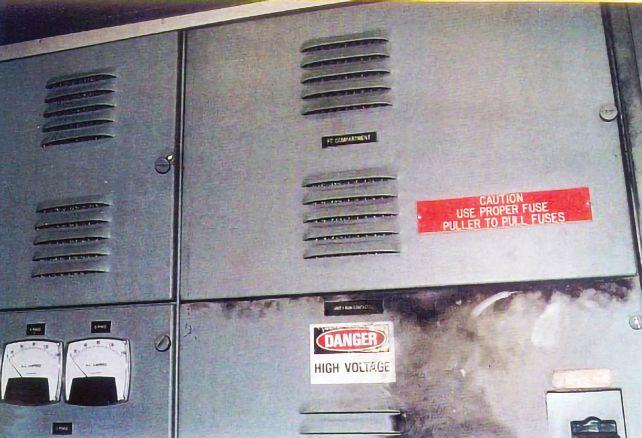
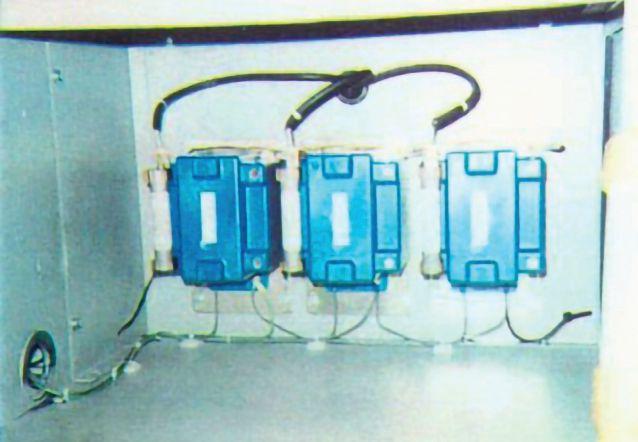


included, and PPE doesn’t change this; you’re still working on energized electrical conductors or circuit parts. Many technicians believe that troubleshooting is not “working on.” Clearly, it is, and appropriate PPE is necessary.
The second sentence states there are two categories of working on: diagnostic (testing) and repair. Diagnostic is defined as “taking readings or measurements of electrical equipment with approved test equipment that does not require making any physical change to the equipment.” This includes absence-of-voltage
testing, troubleshooting, calibration, or voltage testing. Again, PPE is mandatory because using voltage-rated probes on energized electrical equipment is not considered safe. There is an exception in Chapter 3 for laboratory work, but it would not apply to NETA-type work. Article 350 applies to this work where a specifically trained and responsible person known as the electrical safety authority (ESA) can make job-specific requirements that may be different than those found in Chapter 1.
The second category of working on (repair) is defined as “any physical alteration of electrical equipment (such as making or tightening connections, removing or replacing components, etc.). We have seen many instances where this is misunderstood or just violated, especially during maintenance-type activities.
True story: A job leader took an apprentice to a switchgear room where low- and high-voltage equipment was installed. He pointed out areas the apprentice was to avoid, such as the main incoming line compartment. He worked with the apprentice for some time cleaning lowvoltage connection strips and cleaning the inside of the panels. The job leader was called away to another part of the job. He told the apprentice, “Don’t work on anything that looks hot,” and walked away. The apprentice cleaned, tightened connections, and inspected the low-voltage control compartments. In each compartment, he used his voltmeter to determine whether the terminals were energized (Figure 1).
He came to the compartment containing 4160 V potential transformers. This compartment was marked PT Compartment, but it did not have a sign on it warning of high voltage. The compartment immediately below the PT compartment did have a DANGER HIGH VOLTAGE sign on the top of its compartment door (Figure 2).
The apprentice opened the door without the warning sign and attempted to test the terminals of the 4160 V PTs. There was no indication of danger to the technician (Figure 3).
12 • SPRING 2020
IS TROUBLESHOOTING ENERGIZED WORK?
NETA
NFPA 70E AND
Figure 2: PT Compartment
Figure 3: PTs Look Innocent
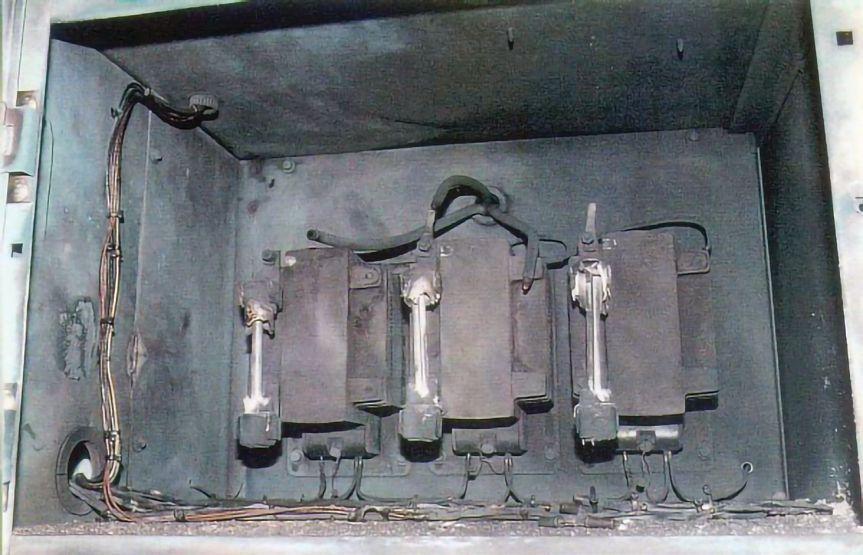
As soon as the test probes touched the PTs, an arc fl ash occurred. Th e apprentice was fortunate, as he survived the incident, but he spent several days in the hospital’s burn unit. He could have very well died, as he was not wearing any PPE. Figure 4 shows the aftermath of the PTs blowing up, while Figure 5 shows the low-voltage tester used to test 4160 V PTs. Not good. This case history, “Who’s at Fault — Owner or Contractor?” was presented to the 2002 IEEE Electrical Safety Workshop by Joseph Andrews.
This example shows why the 70E definitions are so critical. What people don’t know, they don’t know. Much useful information is contained in the definitions. You may feel there is no danger using an insulated (or uninsulated) screwdriver to tighten connections or in using a voltage tester to perform absence-of-voltage testing. but there could be danger lurking just around the corner.
Chapter 1, Article 130, Section 130.2(B)(3) provides exceptions to the use of an energized electrical work permit. The entire section is reproduced below:



Δ (3) Exemptions to Work Permit. Electrical work shall be permitted without an energized electrical work permit if a qualified person is provided with and uses appropriate safe work practices and PPE in accordance with Chapter 1 under any of the following conditions:
(1) Testing, troubleshooting, or voltage measuring


NETAWORLD • 13
IS TROUBLESHOOTING ENERGIZED WORK? NFPA 70E AND NETA
Figure 4: Remains of the PTs
Figure 5: Remains of the Incorrect Voltage Tester

NFPA 70E AND NETA
(2) Thermography, ultrasound, or visual inspections if the restricted approach boundary is not crossed
(3) Access to and egress from an area with energized electrical equipment if no electrical work is performed and the restricted approach boundary is not crossed
(4) General housekeeping and miscellaneous non-electrical tasks if the restricted approach boundary is not crossed



The triangle (Δ) indicates a change has taken place from the last 70E edition. Note that the fi rst sentence says, “ Electrical work shall be permitted without an energized electrical work permit if a qualifi ed person is provided with and uses appropriate safe work practices and PPE in accordance with Chapter 1 under any of the following conditions. ” Th e person must be qualified to begin with. Unqualified persons are not permitted to be near energized electrical conductors or circuit parts. Second, that qualified person must be provided with and use appropriate safe work practices and PPE. An unqualified person would not know
or be able to determine what is appropriate. The person in the case history above could not determine those two things.
CONCLUSION
Supervisors at any level — whether it’s in their title or not — must not make assumptions about what a person knows or doesn’t know. Th ey must ensure the technician’s safety. Troubleshooting, testing, and even tightening connections are considered by many to be safe. The previous example shows how wrong that assumption can be — and it is not just apprentices who make that mistake. Troubleshooting the control power transformer on a 4160 V motor starter has caused many incidents. One technician told me how the guts of his wiggy (he was pretty old) fl ew across a building, striking 15 feet high on the opposite wall. If that coil had hit him, he would have been severely injured or killed. With electricity, small mistakes can be painful or fatal.
Ron Widup and Jim White are NETA’s representatives to NFPA Technical Committee 70E, Electrical Safety Requirements for Employee Workplaces. Both gentlemen are employed by Shermco Industries in Dallas, Texas, a NETA Accredited Company.

Ron Widup, Shermco Industries Vice Chairman and Senior Advisor, Technical Services, has been with Shermco since 1983, and currently serves on the company’s board of directors. He is a member of Technical Committee on NFPA 70E, Electrical Safety in the Workplace; a Principal Member of National Electrical Code (NFPA 70) Code Panel 11; a Principal Member of the Technical Committee on NFPA 790, Standard for Competency of Third-Party Evaluation Bodies; a Principal Member of the Technical Committee on NFPA 791, Recommended Practice and Procedures for Unlabeled Electrical Equipment Evaluation; a member of the Technical Committee on NFPA 70B, Recommended Practice for Electrical Equipment Maintenance, and Vice Chair for IEEE Std. 3007.3, Recommended Practice for Electrical Safety in Industrial and Commercial Power Systems. Ron also serves on NETA’s board of directors and Standards Review Council. He is a NETA Certified Level 4 Senior Test Technician, a State of Texas Journeyman Electrician, an IEEE Standards Association member, an Inspector Member of the International Association of Electrical Inspectors, and an NFPA Certified Electrical Safety Compliance Professional (CESCP).

James (Jim) R. White, Vice President of Training Services, has worked for Shermco Industries since 2001. He is a NFPA Certified Electrical Safety Compliance Professional and a NETA Level 4 Senior Technician. Jim is NETA’s principal member on NFPA Technical Committee NFPA 70E®, Electrical Safety in the Workplace; NETA’s principal representative on National Electrical Code® Code-Making Panel (CMP) 13; and represents NETA on ASTM International Technical Committee F18, Electrical Protective Equipment for Workers. Jim is Shermco Industries’ principal member on NFPA Technical Committee for NFPA 70B, Recommended Practice for Electrical Equipment Maintenance and represents AWEA on the ANSI/ISEA Standard 203, Secondary Single-Use Flame Resistant Protective Clothing for Use Over Primary Flame Resistant Protective Clothing. An IEEE Senior Member, Jim was Chairman of the IEEE Electrical Safety Workshop in 2008 and is currently Vice Chair for the IEEE IAS/PCIC Safety Subcommittee.
14 • SPRING 2020 IS TROUBLESHOOTING ENERGIZED WORK?







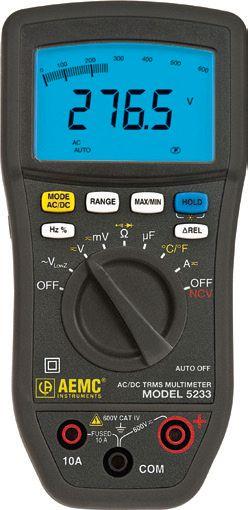






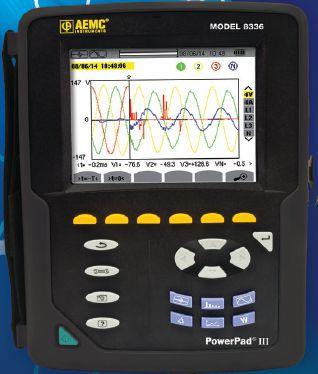
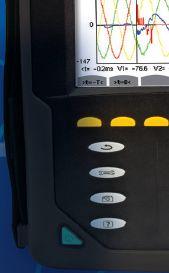








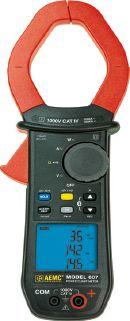



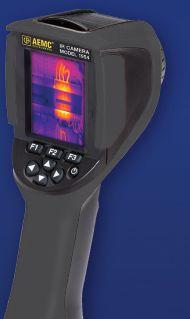


























Superior Service for Optimal Performance To learn more, visit HVMCorp.com or call 1-866-HVM-TEAM Experts Available Across Six Centers of Excellence: Commissioning | Electrical Engineering | DC Power Testing and Maintenance | Protection and Controls | Compliance © 2019 HVM CORP. All rights reserved. HVM and the HVM logo are trademarks or registered trademarks of HVM Corp. All other names and logos referred to are trade names, trademarks or registered trademarks of their respective owners. While every precaution Whether you need startup services, ongoing maintenance, or emergency response you need a partner you can trust. Rely on your High Voltage Maintenance team for expertise, responsiveness, and safety. • Consistent quality, service-delivery process • • National, regional, and local service center availability The ONE SOURCE For All Your Electrical Measurement Instruments www.aemc.com sales@aemc.com Cable Testers | Clamp-On Meters | Current Measurement Probes | Data Loggers | Digital Multimeters Electrical Test Tools | Environmental Testers | Ground Resistance Testers | Leakage Current Meters & Probes Megohmmeters | Micro-Ohmmeters | Oscilloscopes | Power Quality Analyzers, Meters & Loggers Test and Measurement (Lab) Instruments | Thermal Imaging Cameras | Transformer Ratiometers

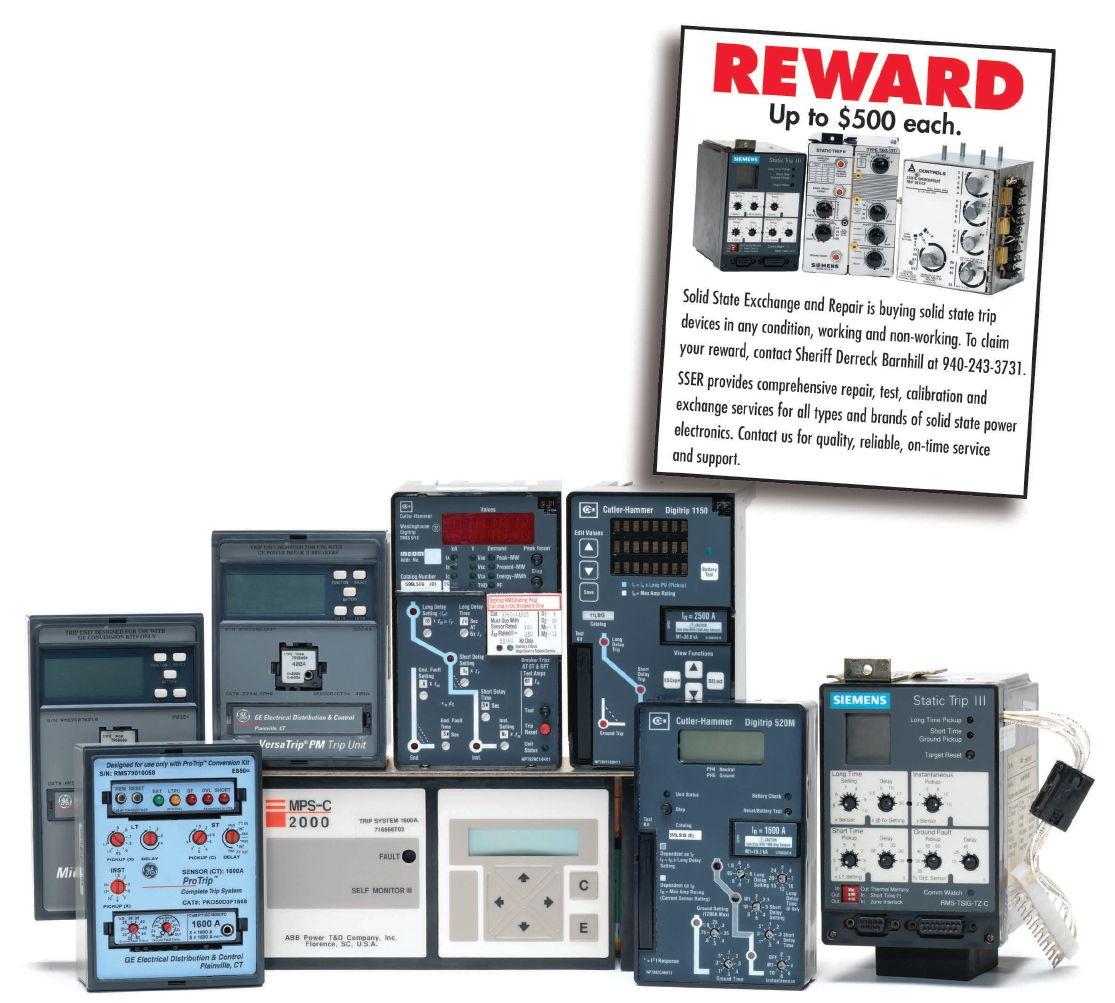
We Buy, Sell, Trade, Calibrate, Repair
Featuring quality, reliable, on-time service and support for all brands and types of solid state power electronics.
Power electronics are our business
Let us suppoort you with our quality repair, calibration and servicing of your solid state equipment. We also buy, sell and trade:
•Communications devices for power equipment
•Protective relays
•Circuit breaker trip devices
•Motor overload relays
•Rating plugs
4701 Spartan Drive • Denton, TX 76207 (877-874-7349) • Phone: 940-243-3731 • Fax: 940-387-8277 Email: info@solidstaterepair.com • Web: www.solidstaterepair.com
“SOLID STATE” INDUSTRIAL ELECTRONICS “SOLID STATE” INDUSTRIAL ELECTRONICS Toll Free 877-TRIP-FIX NOWRENTING TESTEQUIPMENT
ALIGNING CT POLARITY FOR MULTI-CURRENT INPUT DIFFERENTIAL RELAYS
BY STEVE TURNER, Arizona Public Service
Differential relays operate on three or more sets of three-phase current inputs. These relays can be older electromechanical relays with current transformers (CTs) connected in parallel to the three-phase current inputs or newer numerical relays that have more than two sets of three-phase current inputs. Note that it is poor practice to connect CTs in parallel to a single three-phase current input; if one CT should saturate during a condition such as transformer inrush or an external fault, all the other CTs will saturate as well since they have the same voltage drop across their secondary. The relay is in turn much more likely to misoperate since it sees the sum total excitation current as differential current.
Figure 1 is a simple one-line diagram illustrating the differential circuit for a two-winding transformer (T1) protected by four sets of CTs. The polarity for each individual CT is not shown as they may not all be connected in the same exact convention; however, doing so is the best practice. If the CT polarities are not consistent, testing the differential protection can be much more difficult, and unwanted operations are more likely to occur because of unfound errors.
CT POLARITY
Figure 2 shows the current flow for both standard and non-standard CT polarities. Current flows into the primary polarity and out of the secondary polarity as illustrated at the top. The relay current input is connected in reverse as illustrated at the bottom, which is another poor practice.
NON-STANDARD CT CONNECTIONS
Figure 3 shows the current flow for one branch of a differential relay three-phase current input. Current is flowing out of the zone of protection (e.g., transformer), which is above the dashed line. Secondary current flows into the nonpolarity terminal of the differential relay current inputs (shown for A-Phase) during normal load flow and external faults located below the dashed line. This is also poor practice and even more so
NETAWORLD • 17 ALIGNING CT POLARITY FOR MULTI-CURRENT INPUT DIFFERENTIAL RELAYS
RELAY COLUMN
T1 CT1 CT2 CT3 CT4
Figure 1: Multiple CTs
when all of the CTs for one differential relay are not connected the same.
STANDARD CT CONNECTION
Figure 4 shows the standard and correct CT connection for differential protection. Note the polarity marks are away from the zone of protection. Secondary current still flows into the non-polarity terminal of the differential
relay current inputs (shown for A-phase) during normal load flow and external faults located below the dashed line.
CONCLUSION
This article illustrates the best connections for CT polarity when providing differential protection. Typically, all CTs should be connected the same, and the polarity marks should face away from the zone of protection.

3:
Steve Turner is in charge of system protection for the fossil generation department at Arizona Public Service Company in Phoenix. After working with Beckwith Electric Company, Inc. for 10 years, Steve spent two years as a consultant in San Diego. His previous experience includes positions as an Application Engineer at GEC Alstom and in the international market for SEL focusing on transmission line protection applications. Steve also worked for Duke Energy (formerly Progress Energy), where he developed the first patent for double-ended fault location on overhead high-voltage transmission lines and was in charge of all maintenance standards in the transmission department for protective relaying. Steve has BSEE and MSEE degrees from Virginia Tech University. He has presented at numerous conferences including Georgia Tech Protective Relay Conference, Western Protective Relay Conference, ECNE, and Doble User Groups, as well as various international conferences. Steve is a senior member of IEEE and a member of the IEEE PSRC.
18 • SPRING 2020 ALIGNING CT POLARITY FOR MULTI-CURRENT INPUT DIFFERENTIAL RELAYS
RELAY COLUMN
Ip Is Ip Is Relay Current Input Relay Current Input Relay Current Input AB C IA IB IC Ia Ib Ic Zone of Protec on Zone of Protec on Relay Current Input AB C IA IB IC Ia Ib Ic
Figure 2: Current Flow
Figure
Non-Standard CT Connection
Figure 4: Standard CT Connection
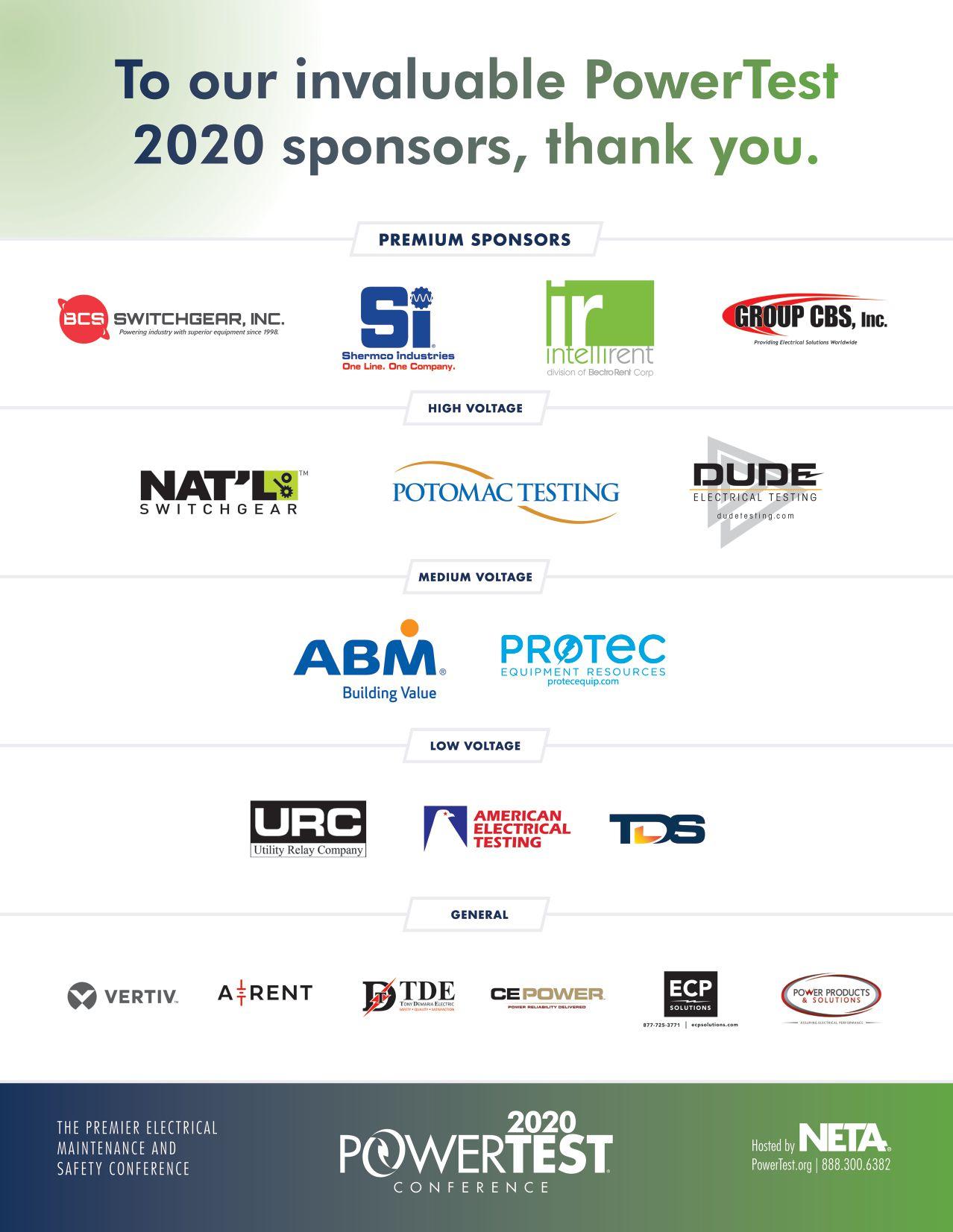




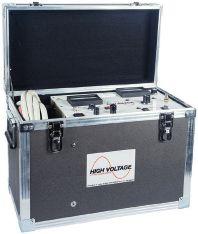
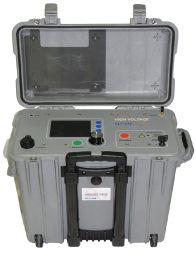
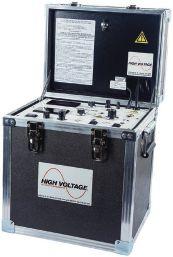




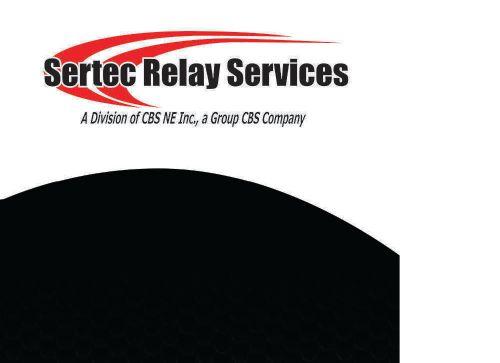








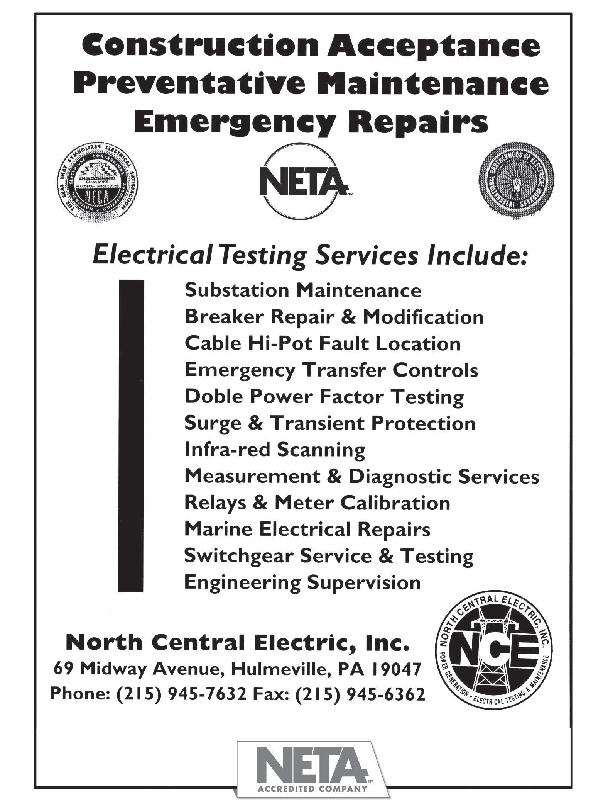
HIGH VOLTAGE, INC. 31 County Rt. 7A • Copake, NY 12516 • Tel: (518) 329-3275 • Fax: (518) 329-3271 • sales@hvinc.com • www.hvinc.com HIGH VOLTAGE, INC. ISO 9001 2015 HVI - The World’s Source for High Voltage Test Equipment You Can Rely on HVI! Visit Us at NETA POWERTEST 2020 Booth 451 HVI Makes it Easy and Efficient
Testing VLF hipot: 0 - 33 kVac @ 1 F @ 0.1 Hz Fault locate: 0 - 13 kV @ 760 J VLF Fault Burner Radar/TDR ready Other Thumper models: 5/10/20 kV @ 1000 J 9/18/36 kV @ 3200 J • Very Low Frequency AC Technology • Cable Diagnostic TD & PD Testing
Cable Fault Locating with Controlled Energy • AC & DC Hipots, Aerial Lift Testers, Oil Testers
® Concentric Neutral Testing
Custom Engineered & Fabricated Van Pkgs. VLF/Thumper CombinationAll That You Need 50 kVac @ 3 kVA Hipot 1 piece & w/cable output VLF 0.1 Hz @ 34 kVac Comp. control - wireless 80 kVdc Hipot/Megohmmeter 1 instrument - 2 tests All HVI Products are Made in the USA
Cable Fault Locating & VLF
•
•
•






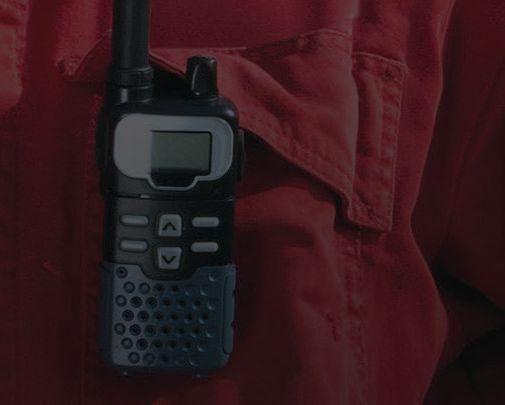







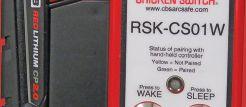

2616 Sirius Road | Denton, TX 76208 Ph: 877-4-SAFETY | Fx: 940-382-9435 Info@CBSArcSafe.com | CBSArcsafe.com From the electrical industry’s most rugged line of ArcSafe universal racking and switching solutions to our ultra-lightweight Chicken Switch product line, we’re here to prove that Distance Is Safety. I use remote racking and switching devices because it means I’ll make it home safe today. Call me chicken. I dare you. LEARN MORE ABOUT REMOTE RACKING AND REMOTE SWITCHING AT CBSARCSAFE.COM












POST TIME:


A TROUBLESHOOTING ADVENTURE



 BY DON GENUTIS, Halco Testing Services
BY DON GENUTIS, Halco Testing Services
As I drove toward the office one morning, it occurred to me that we were due for an emergency call. I was about to text a colleague (hands-free voice recognition) when the phone rang. Soon I rerouted the navigation system and I was off to the races! Along the way, I notified the office and called a technician to assist and ensure his van was equipped with transformer test equipment since the customer suggested they might have lost a transformer.
THE VENUE
The technician and I arrived simultaneously at the guard shack of one of the nation’s most iconic thoroughbred horse racetracks. Focusing on the task at hand was not initially easy with the perfectly groomed track nestled against a
backdrop of the snow-capped San Gabriel Mountains and horses walking by, but we quickly got down to business.
The facility takes 4,160 volts from the local utility at several points and distributes scores
22 • SPRING 2020 POST TIME: A TROUBLESHOOTING ADVENTURE
IN THE FIELD
of dry-type and fluid-filled transformers via underground cable and a few sections of overhead lines. Our client escorted us to the remote end of the park, where the secondary voltage at the carpenter’s shop was improper.
EQUIPMENT
We observed the overhead line terminating to a medium-voltage cable riser into an oil fuse cutout (OFC) with a small transformer adjacent. The transformer was humming and a quick look at the well-worn nameplate indicated a 4,160 V to 480 V delta-delta confi guration. We made our way into the carpenter’s shop, which was black, and measured voltage at the 200A low-voltage panel. It was quickly apparent that balanced three-phase 480 V indeed was not present, and we began to also suspect a faulty transformer.
PLAN OF ATTACK
We wanted to shut down the transformer for testing, but did not want to risk operating the oil-filled cutout (OFC). These types of
apparatus have provided a means of safe, economical, medium-voltage protection and switching for many years, but can be very unsafe due to oil contamination or loss of oil over time from faulty gaskets. The G&W Electric-type switch present also carries a manufacturer’s warning letter recommending replacement with more modern oil-free switch technology.
Shutting down the circuit was not immediately possible as some facilities, including the equine hospital, could not afford power loss until another hour. As we waited for the outage window, we decided to take a look at the OFC cables after determining a cover could be removed safely.
We expected to see an obvious termination or jumper failure but were disappointed to find the cables intact. Additionally, voltage appeared to be present on all three phases using a tic-tracer, but we cautioned ourselves that the transformer primary delta winding would allow voltage to be present on all three phases.
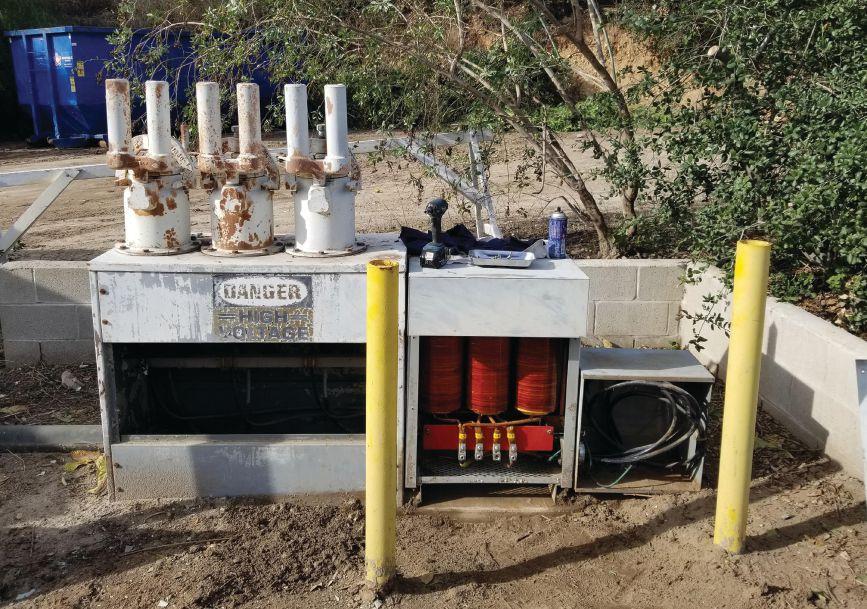





NETAWORLD • 23 Transformer and OFC POST TIME: A TROUBLESHOOTING ADVENTURE
IN THE FIELD

IN THE FIELD



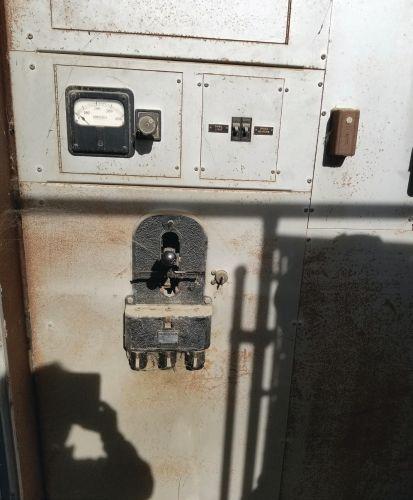
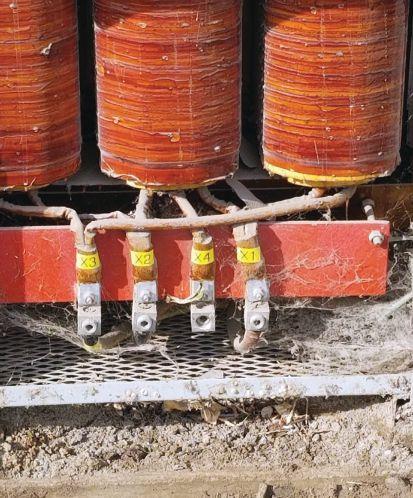
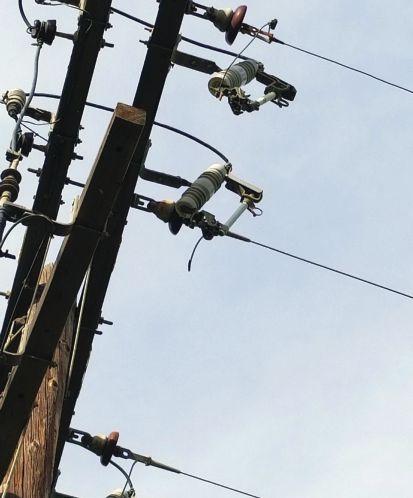

TROUBLESHOOTING
The outage availability was soon confirmed, and the 4,160 V main breaker was opened. This breaker is very old and is also a candidate for replacement.
After confirming no voltage present at the OFC input, we focused our efforts on opening the
OFC so the possible faulty transformer could be isolated and the remainder of the circuit could be energized to other facilities.
The OFC handle bolt on one of the phases was galled and required quite a bit of coaxing to free up so the switch could be opened. We discharged the cables and opened the
24 • SPRING 2020
POST TIME: A TROUBLESHOOTING ADVENTURE
Winding Conductors
Aluminum Jumper Burned Open
Open B-Phase Jumper
Main Breaker
transformer, but again, no obvious signs of damage were noted. After opening the lowvoltage main, the transformer was ready for testing, and we chose to proceed with a transformer turns ratio (TTR) test.
We initially obtained unexpected results, but without a vector diagram to go by, we thought we should see how the results sorted out. The transformer did state “center tapped,” and as we went through the TTR tests, we observed the secondary winding conductors coming from the coils, which helped us determine how the center tap was derived from the center coil.
Looking at the TTR test results, no problem was apparent. We proceeded to perform insulation resistance tests, which also passed. Quick inspection of the OFC fuse links and fluid also did not reveal any problems.
We decided to leave the OFC in the open position and close the main 4,160 V breaker to restore power to the other buildings on the circuit. After doing so, our technician stationed at the OFC measured voltage, and B-phase voltage was found to be absent. The facility manager and I started back to the OFC but first went to a building on the circuit and measured balanced 480 V three-phase power.
So we have power at the origination, but we are missing a phase at the end of the circuit. We inspected the overhead line and soon found an open B-phase jumper, which was subsequently repaired using a bucket truck.
It appears that the aluminum jumper developed a hot spot that eventually burned open. Complete power was successfully restored.
CONCLUSION
Refl ecting on this successful and effi cient troubleshooting adventure, lessons can always be learned:
• Gather as many details from the facility as possible.
• If something just failed, be ultraconcerned with operating equipment safely or avoid energized operation as much as possible.
• Come up with a logical plan of attack, based upon likely failed equipment.
• Perform visual inspection and tests to rule out components.

Don A. Genutis presently serves as President of Halco Testing Services, Inc., a NETA Accredited Company with offices in Los Angeles and Houston. He has held various principal positions during his 35-plus year career in the electrical testing field, primarily focused on advancing no-outage testing techniques for the last 20 years, with emphasis on cable and switchgear on-line partial discharge testing techniques. Early in his career, Don acquired and operated the former Westinghouse East Pittsburgh Insulation Research Laboratory, where he gained valuable experience in the understanding of insulation material performance. Don holds a BS in electrical engineering from Carnegie Mellon University and is a NETA Certified Technician. Don has authored 50 technical articles for NETA World and has been featured in EC&M and Uptime magazines. Don’s work is summarized in his book, Partial Discharge & Other NoOutage Testing Methods, published in 2019.





NETAWORLD • 25
POST TIME: A TROUBLESHOOTING ADVENTURE IN THE FIELD

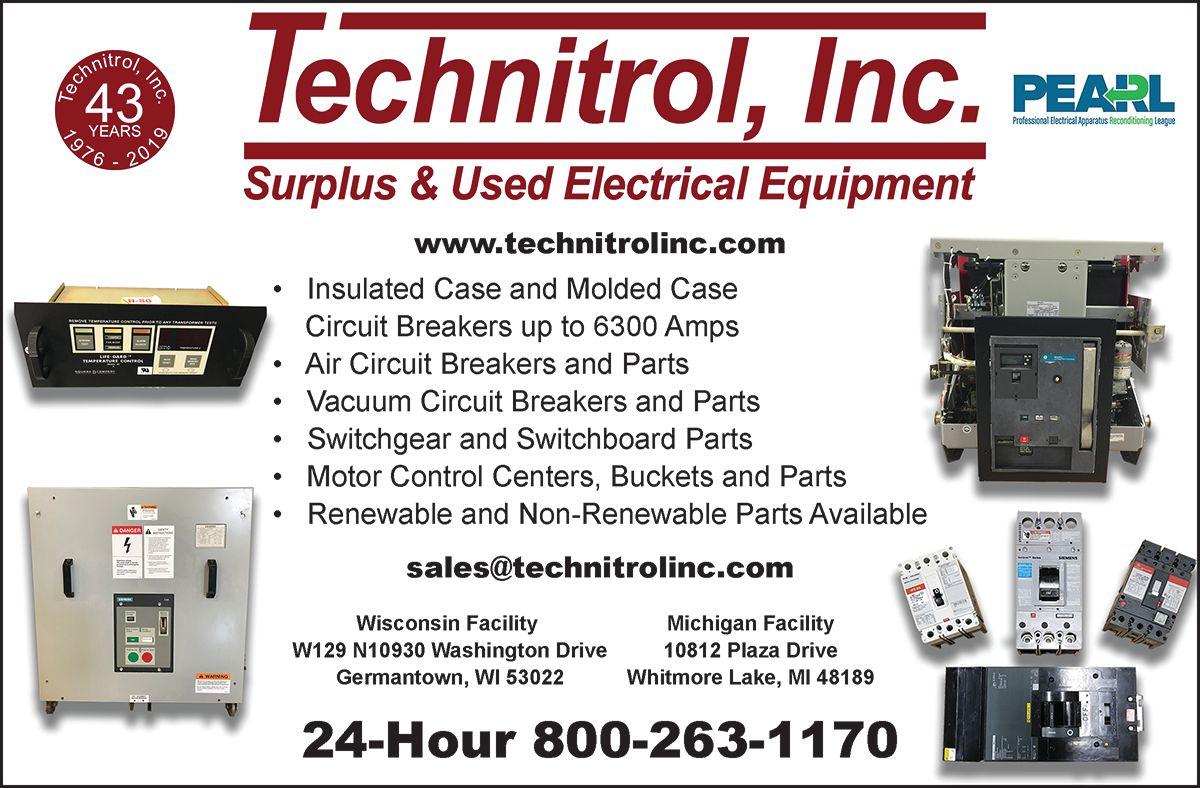














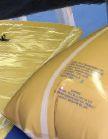






























® THE DIFFERENCE... ® .. L .LIMIT DOWNTIME; ; CHOOSE CONSERVATORBLADDERS TRANSFORMER AIR-CELL 800-526-5330 +1-201-825-1400 www.atlinc.com ABB Inc. - G.E. / Alstom Grid - Atlantic Transformer CG Power USA - Calpine - Duke Energy - First Energy Gexpro - Jacksonville Electric Authority - NASS - PSE&G Siemens - SPX Transformer Solutions &ManyMore! BLADDER R DESIGGN N GUIDE E AVAILABLE E ON N OUR U WEBSITE ULTRA-STRONG “OVER-LAP” STYLE SEAMS MADE IN THE U.S.A. FOR OVER 45 YEARS! STANDARD TEMPLATES DIGITAL LIBRARY OF POPULARSIZES/STYLES! REVERSE ENGINEERING ATL CAN PRECISELY DUPLICATE ANY BLADDER! STANDARD & CUSTOM HARDWARE METALLICFLANGES,HANGERLOOPS&MORE! EXPEDITED DELIVERY ULTRA-FAST TURNAROUND - 2 TO 3 DAY AVERAGE! CUSTOMERS INCLUDE: ®
RENT ELECTRICAL TEST EQUIPMENT


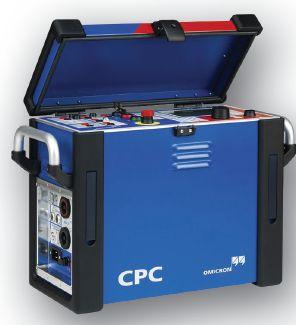













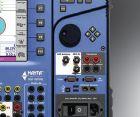

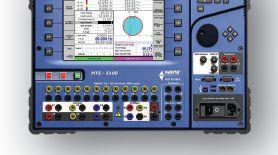
Providing Testing Solutions for:





• Protective Relays
• Transformers & Motor Analysis
• Partial Discharge/Corona
• Current Injection
• Cable Fault Location
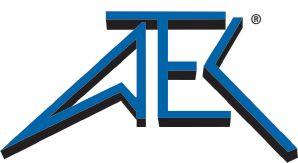








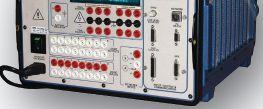

• Switchgear/Circuit Breakers
• Insulation Resistance
• Tan Delta/Power Factor
• Current Transformers
• Ground Grid
Advanced Test Equipment Rentals



The Knowledge. The Equipment. The Solution.
800-404-ATEC (2832) • rentals@atecorp.com • www.atecorp.com


James (Jim) R. White, Vice President of Training Services, has worked for Shermco Industries Inc. since 2001. He is a NFPA Certified Electrical Safety Compliance Professional and a NETA Level 4 Senior Technician. Jim is NETA’s principal member on NFPA Technical Committee NFPA 70E®, Electrical Safety in the Workplace®, NETA’s principal representative on National Electrical Code® Code-Making Panel (CMP) 13, and represents NETA on ASTM International Technical Committee F18, Electrical Protective Equipment for Workers. Jim is Shermco Industries’ principal member on NFPA Technical Committee for NFPA 70B, Recommended Practice for Electrical Equipment Maintenance and represents AWEA on the ANSI/ISEA Standard 203 Secondary Single-Use Flame Resistant Protective Clothing for Use Over Primary Flame Resistant Protective Clothing. An IEEE Senior Member, Jim received the IEEE/IAS/PCIC Electrical Safety Excellence Award in 2011 and NETA’s Outstanding Achievement Award in 2013. Jim was Chairman of the IEEE Electrical Safety Workshop in 2008 and is currently Vice-Chair for the IEEE IAS/ PCIC Safety Subcommittee.


TROUBLESHOOTING
BY JAMES R. WHITE, Shermco Industries


This issue of NETA World covers troubleshooting. A big part of that is being able to interpret a schematic, and some of the most difficult are those for circuit breakers (unless you work in the circuit breaker shop, I suppose). Give these questions a try. Here’s a big call-out to retired Instructor Craig Nelson, who got tired of my hand drawings and made these nice, legible ones.
1. What is the purpose of the Y coil in the generic schematic (Figure 1)?
a. Do we care?
b. It is part of the trip circuit of the circuit breaker.

c. It is the anti-pump coil to prevent the breaker from reclosing.
d. It prevents the motor from charging.
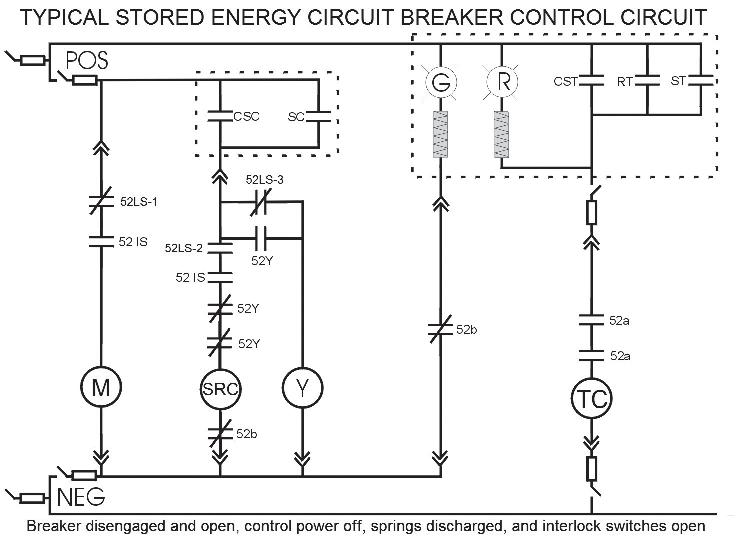
28 • SPRING 2020 TECH QUIZ
TECH QUIZ
No. 129
Figure 1: Circuit Breaker in Disconnected Position
2. What does the 52a contact do? How does it close?
a. The 52a contact prevents or allows the trip coil from operating. It closes when the circuit breaker opens.
b. The 52a contact prevents or allows the trip coil from operating. It closes when the circuit breaker closes.
c. The 52a contact prevents or allows the motor from charging. It closes when the circuit breaker closes.
d. The 52a contact prevents or allows the motor from charging. It closes when the circuit breaker opens.
3. Conversely, what is the purpose of the 52b contact? How does it operate?
a. The 52b contact allows or prevents the closing coil from operating. It closes when the circuit breaker opens.
b. The 52b contact allows or prevents the closing coil from operating. It closes when the circuit breaker closes.
c. The 52b contact allows or prevents the trip coil from operating. It closes when the Y coil is opened.
d. The 52b contact allows or prevents the trip coil from operating. It closes when the Y coil is closed.
4. What causes the 52 contacts to open or close?
a. When a coil in the circuit is energized, either 52a or 52b operates.
b. The contacts are connected to the circuit breaker main operating mechanism.
c. It’s mostly an act of God around here.
d. It operates by switch action.
See answers on page 120.

Superior Service for Optimal Performance

TECH QUIZ
To learn more, visit ERS.Vertiv.com or call 877-468-6384 Experts Available Across Six Centers of Excellence: Commissioning | Electrical Engineering | DC Power Testing and Maintenance | Protection and Controls | Compliance Vertiv™ and the Vertiv logo are trademarks or registered trademarks of Vertiv Group Corp. All other names and logos referred to are trade names, trademarks or registered trademarks of their respective owners. Whether you need startup services, ongoing maintenance, or emergency response you need a partner you can trust. Rely on Vertiv’s Electrical Reliability Services’ team for expertise, responsiveness, and safety. • Consistent quality, service-delivery process • Proactive customer communication and project management • National, regional, and local service center availability






HPC Switches? We’ve got you covered. In Stock New and Obsolete 800A—4000A Retrofit kits 24/7 Emergency Service We stock new General Electric HPCII drop in replacements for the THPC 3000 & 4000 amp GFI models for same day shipping. Call anytime for immediate service. 800-421-5082 www.qualityswitchgear.com

Absolute confidence. Every time.
You can count on us for specialized experience in healthcare, data center, office complex, and commercial acceptance and maintenance testing. Absolutely Power generation, petrochemical, oil & gas, and heavy industries also look to us for high demand services such as start-up commissioning, maintenance testing, shut-down and turnarounds, and breaker shop repair. Get started today.



Toll Free 1+ (855)767-4446 8100 West Little York | Houston, Texas 77040 Email: Alan Postiglione | apost@absolutetesting.com | www.absolutetesting.com Like us on:







TROUBLESHOOTING HUMAN ERROR TO ENSURE SAFETY
BY PAUL CHAMBERLAIN, American Electrical Testing Co., LLC
What is human error? A human error is the outcome of an action that does not produce results as intended. It can be summed up by saying things did not go as planned. The 6P Rule (Proper Prior Planning Prevents Poor Performance) can go a long way to preventing a human error, but there is still that human factor. James Reason, author of 12 Principles of Error Management and co-originator of the widely accepted Swiss cheese model of accident causation, states, “Human error is a consequence, not a cause. Errors are shaped by upstream workplace and organizational factors… Only by understanding the context of the error can we hope to limit its reoccurrence.” Human beings are fallible; they make mistakes — and those mistakes are usually caused by only a few factors.
While resolving an issue or troubleshooting a problem, many traps present themselves. These traps can contribute to a potential incident. Identifying these traps and mitigating them will prevent the incident. This article looks at some of the common traps encountered when performing any task, whether routine or troubleshooting.
WORKING UNDER PRESSURE
When employees rush to complete a project or a task, they can have a lapse of judgement. Troubleshooting a component that failed and repairing or replacing it to reenergize a critical system is a prime example of what can
occur under time pressure. Another example is an outage window prior to energization of new components. Skipping steps, improper communication, and missing warning signs are just a few of the issues that can occur when rushing in response to internal or external forces.
Time pressure can be internal, such as a need to get home at the end of the day or scheduling conflicts with the individual’s personal life. For example, an employee’s son is pitching his first high school baseball game that evening, but the employee’s work is unfinished. To make it to the game for the first pitch, the employee completes his tasks for the day quickly. While not intentional, rushing through the work can
32 • SPRING 2020 TROUBLESHOOTING HUMAN ERROR TO ENSURE SAFETY
SAFETY CORNER
 PHOTO: © ISTOCKPHOTO.COM/PORTFOLIO/MILANVIRIJEVIC
PHOTO: © ISTOCKPHOTO.COM/PORTFOLIO/MILANVIRIJEVIC






produce mistakes leading to incorrectly operated equipment, potential injuries, or worse.
External time pressure can occur when a prime contractor, boss, or peer is pressuring another employee or subcontractor to complete the work quickly. Maybe they need to move on to another location or task, or maybe there is only a limited outage window impacted by some external force (e.g., other contractors eating up outage time).
Be aware of Mondays and Fridays. On Mondays, some employees may be not be fully recovered from a full weekend. This can cause mental lapses in judgement due to being tired or not fully engaged in the work. On Fridays, they may be in a rush to get out the door and start an exciting weekend, causing mental disengagement with the task. In addition, mental disengagement applies after any prolonged absence from work, such as before and after long weekends, vacations, lay-offs, etc.
No matter where the need to rush originates, slow down and realize this time pressure can
lead to a mistake. It is quicker to do something right once than to do it wrong and have to do it a second time.
NOT PAYING ATTENTION TO THE TASK
Mental and physical distraction can lead to a lapse of judgement or a missed step. When doing something critical that requires intense awareness, keep distractions to a minimum. In this technological age, cellular phones are a major distraction. Make it a habit to power them down or put them elsewhere and on vibrate whenever doing something critical. Cell phones are a good example of mental and physical distraction.
Other distractions can include a change in work shift, which can contribute to tiredness and dulled senses. Drastically changing weather can also be a distraction. Outside the work environment, employees may be distracted by trouble at home, kids getting bad grades, money issues, and so on. All of these can be detrimental in the work environment.

NETAWORLD • 33 TROUBLESHOOTING HUMAN ERROR TO ENSURE SAFETY
SAFETY CORNER
SAFETY CORNER
Ensure distractions are minimized during any task where improper action can cause significant consequences. Many traps can be mitigated using a few simple tricks and tools to prevent employee errors and incidents.
POOR COMMUNICATION
LOSING YOUR PLACE
Place-keeping marks the completed steps in a critical procedure or work document so steps are not accidentally omitted or repeated. Placekeeping identifies the last step completed when suspending performance of a procedure. Before recommencing the work, conduct a thorough re-review of the procedure.
Phonetic Alphabet
A – Alpha
B – Bravo
C – Charlie
D – Delta
E – Echo
F – Foxtrot
G – Golf
H – Hotel
I – India
J – Juliett
K – Kilo
L – Lima
M – Mike
N – November
O – Oscar
P – Papa
Q – Quebec
R – Romeo
S – Sierra
T – Tango
U – Uniform
V – Victor
W – Whiskey
X – X-ray
Y – Yankee
Z – Zulu
Ensuring a message is sent and received properly is critical. Use the phonetic alphabet and numerals when communicating equipment identifications or other nomenclature. This prevents peers and other employees from going to the wrong equipment or using incorrect or misheard settings.
It is always a good idea to use three-part communication when performing critical tasks. Three-part communication consists of:
1. A sender saying a direction or information.
2. A receiver repeating the information verbatim.
3. The sender acknowledging that the information is correct.
If the information is repeated back incorrectly, the sender states the information is incorrect and repeats step #1. Using three-part communication ensures the sent message was received.
As the sender of information, ensure the receiver truly understands what is necessary. Over-communicate the steps needed and the results expected. Write it down and give notes to the receiver. This ensures complete understanding, whether between members of a work crew or during turnover from one work group to another.
As a receiver of information, it is important to get all the information needed to successfully complete the task. This means question everything. Question why certain test procedures are used, question why a lockout was performed and by whom and when. Ensure the big picture is achieved so all aspects of the job are understood.
PHYSICAL BARRIERS AND VISIBLE CUES
Flagging involves highlighting a component to improve the chances of performing actions on the correct component. Operational barriers mark or cover components not to be worked on or manipulated during an evolution. Operational barriers and flagging are particularly helpful when several similar components are in close proximity to those affected by the work activity. Research indicates incidents can often be attributed to an individual starting an activity on one component, taking a break or being otherwise distracted, and returning only to perform manipulations on the wrong component.
COACHING AND ACCEPTING COACHING
It’s human nature to get distracted or complacent on the job and to deviate from performing the prescribed safe operating procedure. In reality, many accidents occur when well-trained employees working in a well-engineered environment do something they shouldn’t have or fail to do something they should have. Identify high-risk tasks and bestpractice behaviors in those situations and coach all employees on how to maintain mindfulness and consistently demonstrate those bestpractice behaviors. Coach employees on:
• How to speak up when they see a coworker (or boss) engaging in unsafe behavior
• How to correct that behavior without creating conflict
34 • SPRING 2020
TROUBLESHOOTING HUMAN ERROR TO ENSURE SAFETY
• How to discuss and learn from near-miss events
• How to plan and run safety meetings that engage employees and promote safety awareness
• How to function as safety leaders by watching out for themselves and others as they go about their work
Peer coaching and checking are another way to mitigate incident potential. When doing a complex task — or one that could result in bad things happening if the wrong thing is done to the wrong object at the wrong time — use your peers. Get help to ensure the task is performed correctly. Two brains and two sets of eyes are always better than one. Have a peer read the procedure while the performer completes the procedure, and always ensure three-way communication is conducted during this process. Have a peer double-check your calculations prior to submitting them. Have a peer check your grounds prior to beginning the work. There are many ways to use a peer who is either working directly or indirectly with the performer of the task to ensure the task is completed safely.
THE BIG PICTURE
All of the previous human conditions contribute to an employee or peer making an error. The first and most effective means of reducing errors is to be fully engaged in the task at hand. Identify those things that may be a distraction or contribute to a mistake and eliminate those items from the work task. Many accidents occur because the employee continued blindly on in a task and did not heed any of the little warning signs. When something doesn’t seem right, stop, take a step back to reevaluate, and ask questions of the team performing the work. Get a peer to
SAFETY CORNER
help. Find out why things aren’t right and heed those warnings. Be cognizant of any internal problems, acknowledge they may affect the work, and discuss with fellow workers. This will help minimize the possibility of a problem.
Simple, everyday tools can help mitigate human fallibility. Handwritten notes are the oldschool, tried-and-true method. Laptops and scheduling programs are newer methodologies. Make notes either on paper or electronically so things won’t be forgotten. Come up with plans and procedures for the task and write them down step by step before the work begins. This helps ensure the right skills, tools, equipment, and personnel are present for the work. Pre-job briefings are an effective means of documenting and communicating steps and hazards on the job. The more complex or unfamiliar a task is, the more complex the pre-job briefing must be. Ensure all personnel affected by the task attend the pre-job briefing. Include other contractors not directly involved in the scope of work who are in or near the work area where the task is to be performed.
CONCLUSION
Being aware of all contributing factors — and planning for their mitigation — helps make the work environment safer for all. Everyone makes mistakes, but there are ways to identify and minimize the factors that contribute to those mistakes.
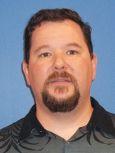
Paul Chamberlain has been the Safety Manager for American Electrical Testing Co., LLC since 2009. He has been in the safety field for the past 21 years, working for various companies and in various industries. He received a BS in safety and environmental protection from Massachusetts Maritime Academy.







NETAWORLD • 35
TROUBLESHOOTING HUMAN ERROR TO ENSURE SAFETY






AET Brings Precision and Value to Electrical Testing, Commissioning and Engineering… and Positive Results to Our Customers. located throughout the country, AET is an industry leader and one of the largest independent electrical testing companies in the U.S. To learn more about AET’s full range of testing and engineering services, visit www.aetco.us WWW.AETCO.US • 800.992.3826 The Power of Positive Results An Company A Subsidiary of





MARCH 8 – 12,

2021
SHINGLE
FLORIDA POWERTEST.ORG 888.300.6382 HOSTED BY THE PREMIER ELECTRICAL MAINTENANCE AND SAFETY CONFERENCE Exhibit to an audience of 500+ electrical testing professionals including leading decision-makers looking for new products and services. information, visit powertest.org
ROSEN
CREEK ORLANDO,




MONITORING A GROUNDED SYSTEM


 BY JEFF JOWETT, Megger
BY JEFF JOWETT, Megger
Electrical faults cause enormous damage due to fires and loss of equipment. But of far greater importance is the danger to human life through electrocution. Ground faults in particular pose the risk of death because a human is generally at ground potential, thereby providing an alternate current path. It takes only about 5 mA to cause a shock, and as little as 100 mA can be fatal. That makes ground fault monitoring of vital importance to maintaining a safe electrical plant.
GROUNDING SCHEMES
Let’s look at various grounding schemes and how they operate. Grounding schemes are coded using a five-letter system:
• T: direct connection to earth (Terra)
• N: neutral lead
• I: isolated from earth
• S: separate
• C: combined
The first letter indicates how the transformer (source) is grounded; the second letter indicates grounding of the load. The next two letters indicate the configuration of the neutral and ground leads, respectively.
There are three basic configurations: TT, TN & IT:
1. TT is a simple and commonly used system where both the transformer and load are tied directly to earth (Figure 1). A residual current protective device (RCD) is required.
Figure 1: TT Configuration
38 • SPRING 2020 MONITORING A GROUNDED SYSTEM
TECH TIPS PHOTO: © ISTOCKPHOTO.COM/PORTFOLIO/SHINYFAMILY TT L N Load Earth Earth Earth Fault Loop Impedance – High Ground Electrode – Required RCD – Required Source
2. In TN, the transformer is still tied directly to earth, but the load is connected to earth via a conductor. There are several ways to do this:
• In TN-S, the load is connected by a separate conductor (protective earth PE) (Figure 2).
Figure 4: TN-C-S Configuration
Figure 2: TN-S Configuration
• In TN-C, the load is connected via the neutral conductor (Figure 3).
3. In an IT system, the transformer is not tied to earth but is isolated. The load is connected by a ground rod (Figure 5). The advantage is that a single ground fault will not trip the breaker, making it the method of choice in critical systems such as operating rooms and railroad signaling.
Figure 5: IT Configuration
Figure 3: TN-C Configuration
• TN-C-S is a combination system where some sections of the load are grounded by a separate conductor while others use the neutral. The TN system is a lowimpedance system; only the impedance of the grounding conductors limits the ground fault. This scheme can be modified by adding a ground resistor or capacitor to make it a high-impedance system (Figure 4). The advantage of this is improvement of equipment fault protection and greater personnel safety. It may also reduce the potential current of the transients by adding impedance. The extent of the protection would depend on the situation. An inductor can also be used to help dampen transients, but the resistor is more common.
TT SYSTEMS
This article focuses on TT systems. Advantages of these systems are simplicity and low cost and also that faults on the LV and MV grid do not migrate to other customers on the LV grid. Disadvantages include:
• High voltages can occur between system components and the neutral.
• Possible overvoltages put stress on equipment insulation.
• Customers must maintain their own grounding systems, therefore complete reliability cannot be guaranteed.
In a TT system, current does not normally travel on the ground conductor but returns by the neutral. So the normal flow would be current flowing through the phases and returning on the neutral (Figure 6).
NETAWORLD • 39 MONITORING A GROUNDED SYSTEM
TECH TIPS N TN-S L Load PE Earth Earth Fault Loop Impedance – Low Ground Electrode – Not required RCD – Optional Source N TN-C L Load PE Earth Earth Fault Loop Impedance – Low Ground Electrode – Not required RCD – No Source N TN-S High Impedance Ground L Load PE Earth Source N IT L Load Earth Fault Loop Impedance – High Ground Electrode – Required RCD – Not applicable Source Earth
A ground fault has a path back to the source though the ground rod (Figure 7).
This path is in parallel with the normal return through the neutral, therefore the current will be split between these two paths (Figure 8). These parallel paths then are used to trigger a protective device (RCD).
The coil of the protective device is placed around the line and neutral. In an unfaulted system (Figure 9a), the sum of line and return equals zero. But a fault will divide the current, some of it returning through the earth ground, creating a differential between line and neutral. This trips the breaker (Figure 9b).
PROTECTION
This system provides a basis for the operation of protective devices, but it can also be the source of dangerous voltages that develop on equipment while the fault is in progress and before elimination by the operation of the protective device. The core of this problem, and its elimination, is the integrity of the earth ground. This is expressed in the industrystandard term “touch potential,” the voltage to which a person could be subjected due to coming in contact with a piece of equipment during a fault condition. This is calculated by Ohm’s Law and is equal to the resistance of the earth ground path times the prospective fault current (Figure 10). The higher the impedance of the earth ground path, the less current will pass through it, precipitating a rise in voltage to potentially dangerous levels.
Since the human body’s tolerance to the passage of current is minimal, this is a potentially lethal combination. Eliminating the danger is dependent on two factors: maintenance and monitoring.
The grounding system must be maintained at low impedance. Many industries and authorities set their own standards, but a generally accepted standard for commercial and industrial is 5 Ω to remote earth, i.e. measured at a distance beyond the immediate sphere of influence of the electrode under test. More demanding systems, such as substations,
40 • SPRING 2020
MONITORING A GROUNDED SYSTEM TECH TIPS Source Earth Ground Rod A A B B C C N N HV LV
Source Earth Ground Rod A A B B C C N N HV LV Source Earth Ground Rod A A B B C C N N HV LV
Figure 6: TT Normal Flow
Figure 7: Ground Fault Path
Figure 8: Split Current
computer rooms, telecommunications, data centers, and hospitals, may require lower values such as 1.5 or 1 Ω.
This is best tested using a dedicated three- or four-terminal ground tester and performing a fall of potential test. Since this test may require a lot of space to perform, other methods are available in the literature for addressing various difficult situations. High-current grid testers are employed to test the integrity of a grid under ground, as lightning strokes, fault clearance, and other disturbances can severely disrupt a grounding grid’s structure.
Once tested and indicated to be inadequate, a grounding electrode can be restored to specification by adding more rods or otherwise expanding a grid, driving rods deeper, or installing various systems that provide a constant moist environment, stabilize the soil around the rod(s), improve the ion content
to promote conductivity, or improve the electrode’s capabilities in various other ways. Finally, a regular periodic maintenance program of testing and recording data is essential.
THE CASE FOR NINECHANNEL MEASUREMENTS
Common monitoring for ground faults tracks the neutral only. This is not sufficient. If the system is balanced, unfaulted, and free of zero-sequence harmonics, the neutral would measure zero amperes, as the sum of A, B, and C current would cancel out on the neutral. Introduction of a ground fault will split the current between the neutral and earth returns, unbalancing the returns on the three phases and leading to a rise in neutral current.
But it’s still not that simple. Other power quality phenomena, including unbalanced loads and zero-sequence harmonics, can also cause a rise in neutral current. However, these phenomena do not cause a rise in earth ground current. Therefore, monitoring both neutral and ground currents provides a means of distinguishing between these phenomena and identifying ground faults.
The most thorough way to monitor a grounding system is with a nine-channel (four voltage; five current) power quality monitor. Nine channels enable the monitoring of all three phase-toneutral voltages and between neutral and ground, as well as phase, neutral, and ground currents.
Measuring the voltage between ground and neutral is a quick way of assessing the relative integrity of the ground electrode. The
NETAWORLD • 41
MONITORING A GROUNDED SYSTEM TECH TIPS
SourceLoad L N V SourceLoad L N V
Figure 9a: Unfaulted
Source Earth Ground Rod A A B B C C N N HV LV V
Figure 9b: Faulted
Figure 10: Touch Potential
poorer the connection (higher impedance), the higher the voltage between neutral and ground conductors will be. If voltage rises above 50 volts during a fault, a serious hazard exists. But taking spot measurements is not enough to detect a ground fault because they can be intermittent. For instance, the fault may only occur when the connected piece of equipment is energized or in the presence of sufficient moisture. The thorough and efficient way to address such issues is with a ninechannel power quality recorder. This will catch intermittent faults that spot checks will miss.
An increase in ground current only when a specific piece of equipment turns on — and this actuation is identifiable through individual phase voltage and current measurements — indicates the ground fault is within that piece of equipment. Similarly, if ground current increases after it rains, the ground fault is likely due to water ingress in an exposed cable. If
neutral-to-ground voltage increases to high levels, that would indicate a poor earth ground.
CONCLUSION
A nine-channel power quality monitor will identify ground faults and distinguish them from other power quality phenomena, identify poor grounding and dangerous safety conditions in the presence of a ground fault, and detect intermittent ground faults and identify their cause.

Jeffrey R. Jowett is a Senior Applications Engineer for Megger in Valley Forge, Pennsylvania, serving the manufacturing lines of Biddle, Megger, and MultiAmp for electrical test and measurement instrumentation. He holds a BS in biology and chemistry from Ursinus College. He was employed for 22 years with James G. Biddle Co., which became Biddle Instruments and is now Megger.
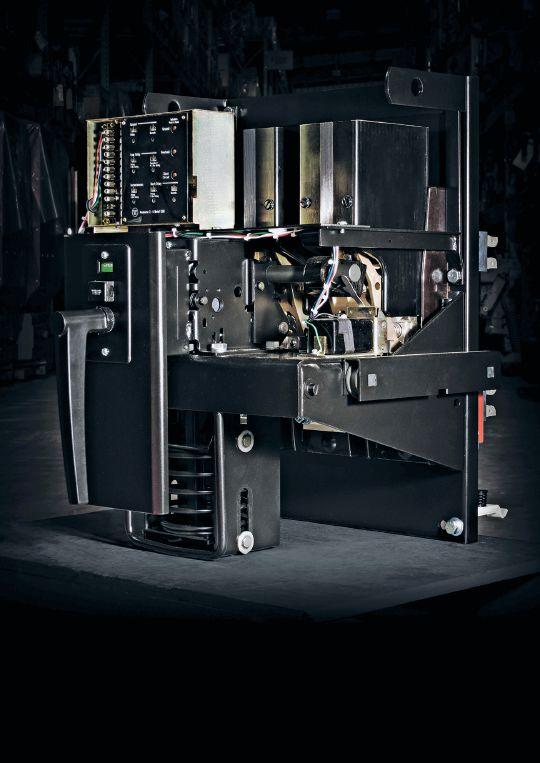



TECH TIPS
1315 Columbine, Gainesville, Texas 76241 | 800-232-5809 INFO @ CBSALES.COM | CircuitBreaker.com CBS Florida | Lakeland, Florida | 863-646-5099 | CBS-Florida.com CBS Midwest | Crown Point, Indiana | 219-575-5420 | CBSMidwest.com NEW SERVICE LOCATIONS CBS stocks every low- and mediumvoltage circuit breaker made in America since 1945. With more than 5 million breakers and parts in our 200,000-square-foot warehouse — including switchgear, transformers, substations, protective relays, loadbreak switches, electrical contacts, motor controls and centers, vacuum interrupters, and more — Circuit Breaker Sales has you covered. √ Replacement parts and equipment √ Remanufacturing, retrofits, and upgrades √ Reverse engineering, 3-D printing of obsolete parts For more information about Group CBS and its affiliate companies, visit GroupCBS.com. CircuitBreaker.com (800) 232-5809 TOLLFREE Your TRUSTED online resource for authentic circuit breaker and electrical distribution equipment CBStore.com

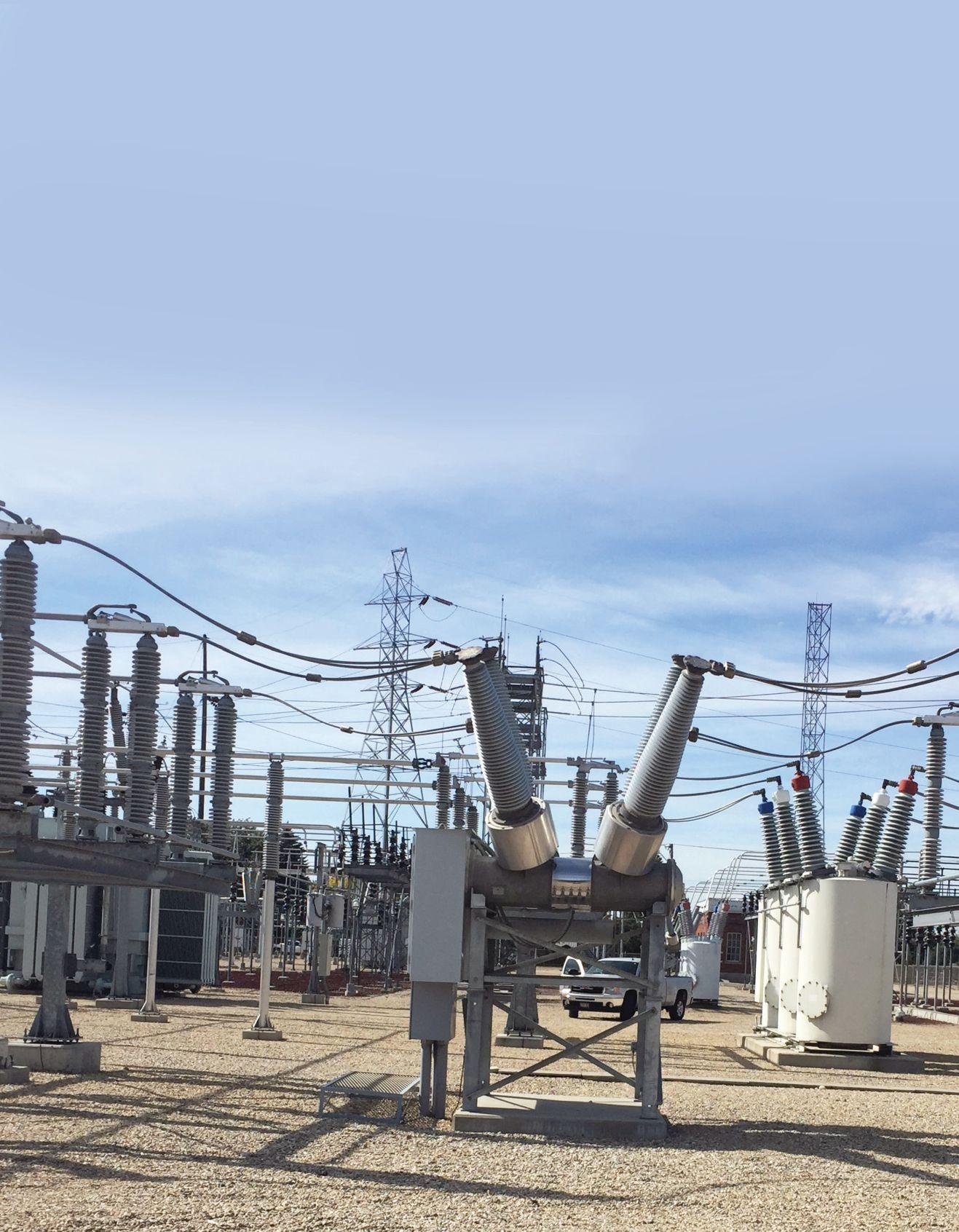
TROUBLESHOOTING A CIRCUIT BREAKER
BY STEVE SKINNER, Doble Engineering Company
44 • SPRING 2020
COVER STORY

Circuit breakers are like the offensive line on a football team. Unless you have some knowledge of the game, you know they are there, but you have very little idea of what they do, how they do it, or why they do it.
Circuit breakers are electromechanical devices required to control highvoltage (HV) electrical power networks. Circuit breakers switch circuits on, carry load, and switch circuits off during routine system operation or when clearing faults on the system. Their duty as an electromechanical device — an electrically controlled machine — is unusual, as they typically stay in the closed position for long periods carrying load or in the open position providing electrical isolation. They are called upon to transition from one condition to the other only occasionally. As a matter of function, they must be reliable in static situations, but operate instantaneously when called upon to perform any switching operation — often after long periods without any movement.
The key words are electromechanical devices. Many technicians new to troubleshooting a circuit breaker think of it solely as an electrical device. Thinking of it as an electromechanical device that outputs the control of an HV system would make it easier to understand how to troubleshoot it. Simply put, a circuit has only a few mechanical requirements, and a majority of these are directly related to the operating mechanism and/or the electrical schemes that control its core function.
Circuit breaker core functions include:
1. Transition from open to closed on command and remain in the closed position until commanded to open.
2. Transition from closed to open on command and remain in the open position until commanded to close.
Additionally, it must accelerate the main current-carrying contacts (moving contacts) from 0 feet per second (meters per second) to specified speeds, within specified times, during the open-to-closed operation and the closedto-open operation. It must also act as a nearly perfect conductor when closed and a nearly perfect isolator when open.
Although most circuit breakers in existence today can be described in this simplistic manner, the design of the core functions of a HV circuit breaker varies. This article provides a broad explanation of circuit breaker mechanism operation, basic troubleshooting methods, and safety issues that may occur. For the purposes of this discussion, mechanism refers to the mechanical portion with its associated latches, levers, etc.; the stored energy type (spring, pneumatic); and the electrical control and auxiliary controls, including various open and closing circuits, operating coils, and relays.
NETAWORLD • 45 TROUBLESHOOTING A CIRCUIT BREAKER
COVER STORY
Other reasons
Figure 1: Component Responsible for Major Failures
CIRCUIT BREAKER FAILURES
Th is article focuses on the circuit breaker mechanism because slightly more than 70% of major circuit breaker failures involve the circuit breaker mechanism (drive and/or electrical control and auxiliary circuits).
Three comprehensive CIGRE studies on circuit breaker reliability showed two types of failures:
• Major failure. Failure of a switchgear and control gear that causes the cessation of one or more fundamental functions. A major failure results in an immediate change in system operating conditions. The backup system must remove the fault or the equipment must be removed from service within 30 minutes for unscheduled maintenance.
• Minor failure. Failure — even complete — of a constructional element or subassembly that does not result in subsequent major failure.
A vast majority (72%) of major circuit breaker failures are directly related to the drive mechanism and electrical control and auxiliary circuits; 28% are related to the components at service voltage and other reasons.
Figure 2a and Figure 2b view the data in a different manner. Figure 2a shows the circuit breaker itself (left). Figure 2b shows the general location of the components resulting in major failures.
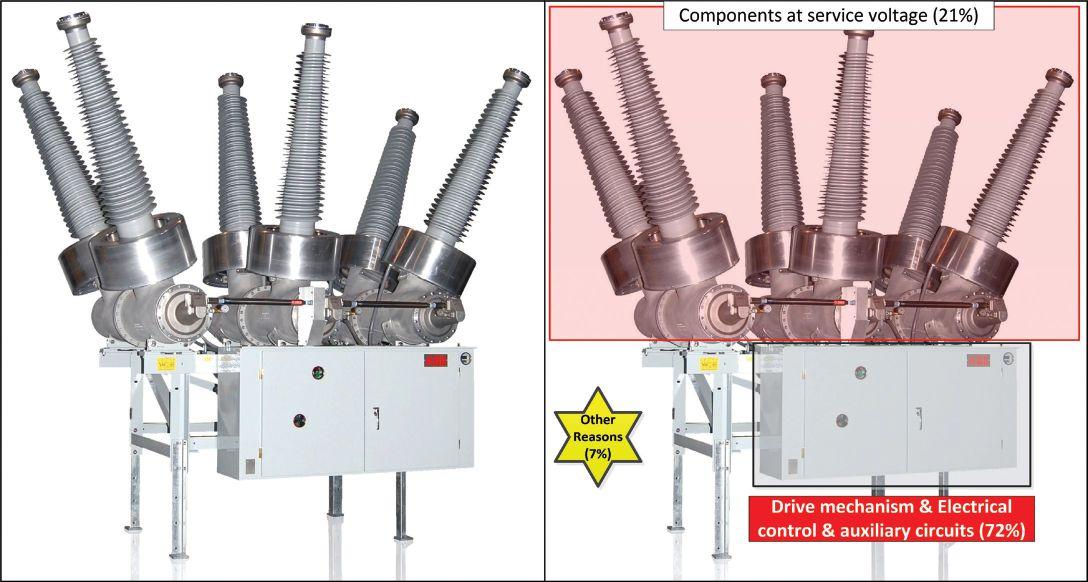

46 • SPRING 2020
TROUBLESHOOTING A CIRCUIT BREAKER
COVER STORY
Figure 2b: Components Resulting in Major Failures
Figure 2a: Circuit Breaker
Drive mechanism 43% Electrical control and auxiliary circuits 29% Components at service voltage 21%
7%


Th e circuit breaker mechanism cabinet is shown in Figure 3a. Figure 3b is a simplified sketch of a mechanism/electrical control and auxiliary circuits.
These same CIGRE studies plotted the failure modes for mechanisms (Figure 4).
Failure modes can be purely mechanical issues with the drive mechanism or electrical control, auxiliary, and auxiliary circuit issues:
•Does not close on command is likely an electrical controls and auxiliary circuit failure.
•Does not open on command is likely an electrical controls and auxiliary circuit failure.
•Locked in the open or closed position is a drive mechanism (mechanical) failure.
•Loss of mechanical integrity is a mechanical failure involving failed components (linkages, pins, bearings, etc.) in the drive mechanism.
•Opens without command may be a mechanical failure where the close
Locked in the open or closed position 25.1%
Failure Modes (%) Opens without command 5.4%
latch has deteriorated or is broken, or an electrical controls and auxiliary circuit failure, where the circuit breaker mechanism was not driven far enough into the closed position for it to latch in the closed position.
•Other is anything that is not one of the above failures.
NETAWORLD • 47
TROUBLESHOOTING A CIRCUIT BREAKER COVER STORY
Figure 3a: Circuit Breaker Mechanism Cabinet Figure 3b: Mechanism/Electrical Control and Auxiliary Circuits
Does
16.4% Does
28.2%
Figure 4: Circuit Breaker Mechanism Major
not open on command
not close on command
Other 16.8% Loss of mechanical integrity 8.1%

In general, the mechanism is probably the least understood and most ignored part of a circuit breaker. If a circuit breaker has been applied on a power system according to its rating, the most common major cause of a circuit breaker failing to perform its functions is the mechanism.
SPRING CLOSED/SPRING OPENED CIRCUIT BREAKER
To effectively troubleshoot a circuit breaker mechanism, the technician must have a general understanding of what a mechanism does, how it does it, and why it does it. Without this understanding, how do you know whether something is performing correctly? It may be
performing exactly as it is designed; you just don’t understand what it is designed to do. This section explains the operation of a spring/spring operated single pressure SF6 circuit breaker.
Mechanical Operation
Before the circuit breaker can be closed, the mechanism must compress the closing springs (Figure 5 left). This is done by a motor/gear arrangement. The motor turns a gear that is attached to a shaft. The rotation of the shaft turns a crank arm on the shaft and compresses the opening springs. When the springs have reached the proper compression, a latch engages and holds the springs compressed (Figure 5 right), and a spring position switch de-energizes the motor. The circuit breaker is now ready to close. An indicator on the mechanism will indicate the position of the closing springs (charged).
When the circuit breaker is commanded to close, the armature of the close coil moves the holding latch and the closing spring can relax to its discharged position. As the closing spring relaxes, it rotates the upper shaft, driving the main contacts closed and a crank on the tripping springs compresses them. When the mechanism is in the fully closed position, a latch engages holding tripping springs compressed, and the circuit breaker in the closed position.
With the tripping springs fully compressed, the circuit can be tripped. When a trip command is received, the armature of the trip coil releases the tripping latch and the tripping springs relax, thus driving the contacts open.
Mechanism Control Scheme Operation
The control scheme performs three functions: charge the closing spring, release the open spring, and release the closing spring on command. The control scheme also ensures the circuit breaker is in the proper state to successfully open the high-voltage circuit

48 • SPRING 2020
TROUBLESHOOTING A CIRCUIT BREAKER
COVER STORY
Figure 5: Mechanical Drawing: Closing Springs, Opening Springs, and Closing Spring Charge Motor

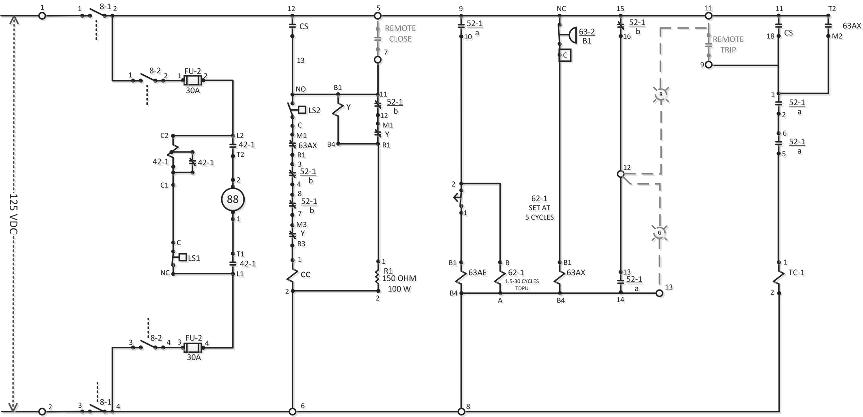
before it can be closed and ensure that the circuit breaker can perform only one closing operation for each close command it receives (Figure 6).
Closing the Circuit Breaker
Assume the SF6 pressure is at rated operating pressure. If the closing spring is charged and latched and the circuit breaker is in the open position, the circuit breaker will be operated via the local control switch. Note: The scheme will operate identically if a remote close command is received at terminal 7.
When a close command is given via the local control switch or a remote location, the close coil is energized, and this coil then unlatches the closing springs. The closing springs drive the mechanism toward the closed position. When the mechanism is nearing its fully closed position, the 52-1/b contacts in the close coil path open, de-energizing the close coil. At the same time, a 52-1/b contact opens in the anti-pump scheme (Y relay) to disable another close operation of the circuit breaker until the close command is removed and another command is issued. When the closing springs are discharged, a spring position switch in the spring wind motor closes to re-charge the closing springs.
While the mechanism is being driven toward the closed position, the tripping springs are being charged. When the mechanism reaches the closed position, the tripping springs are fully compressed, and a latch engages a pawl to hold the tripping springs compressed and hold the circuit breaker in the closed position. At the same time, the 52-1/a contacts close, and the circuit breaker is ready to perform a tripping operation.
Opening the Circuit Breaker
Assuming SF6 pressure is within operating range, the 62 AX contact will be open. If the circuit breaker is in the closed position, the 52/a contacts will be closed. When the circuit breaker receives a trip command from the local control switch or from a remote trip, the trip coil will be energized. The armature of the trip coil will strike the tripping springs latch and the tripping springs will be released and will drive the mechanism (and the circuit breaker) towards the open position. As the mechanism travels toward the open position, the 52/a contacts will open, de-energizing the trip coil.
If, while the circuit breaker is in the closed position, SF6 pressure drops to an unsafe interrupting level, the 63 AX contact will close, and a trip command will be issued to the mechanism and the circuit breaker will open.
NETAWORLD • 49 TROUBLESHOOTING A CIRCUIT BREAKER
COVER STORY
Figure 6: Control Schematic Drawn in Breaker Open and Scheme De-Energized Condition
TROUBLESHOOTING A CIRCUIT BREAKER MECHANISM
Safety!! A circuit breaker mechanism is a high-energy, high-speed electromechanical device capable of storing very large amounts of energy (kilo-joule and up to mega-joules). The mechanism will release its stored energy in very short periods of time (less than 0.5 seconds) by design. Consequently, a mechanism must be treated with the same respect given any high-energy, high-speed machine. Any and all safety equipment provided by the circuit breaker manufacturer must be used when troubleshooting a charged mechanism and the remote system protection/control schemes must be isolated from the mechanism whenever possible.
Even though a mechanism operation seems simple, a number of electrical relays and contacts must operate in the correct sequence, and a number of mechanical operations must occur in the correct sequence. Everything the circuit breaker manufacturer wants the technician to know about a specific circuit breaker is contained in the instruction manual, the electrical schematics and connection diagrams, and the mechanical drawings.
Generally, electrical power systems are designed and constructed to protect themselves automatically in the case of a fault. This protection will occur without human intervention. By the time the technician arrives, whatever is going to happen with the system protection schemes has already happened. The system is in the position it was designed to be in, even if a circuit breaker failed to operate correctly. This means that taking a few minutes to assess the situation will likely not make the situation any worse, but will likely aid in the troubleshooting.
Keep in mind, this is an electromechanical machine. Th e goal is to take a relatively complex system and break it down into its component systems.
BASIC TROUBLE SHOOTING TECHNIQUES
A mechanism is a high-energy, high-speed electromechanical device that will operate each and every time it is commanded to do so with no warning if it is capable. Part of the troubleshooting situation may allow it to operate even though it failed to do so in the beginning.
When troubleshooting a mechanism that fails to operate, it is important to:
• Determine whether the circuit breaker is open, closed, or neither. Neither is a possibility if the mechanism stuck during its travel.
• Determine whether the breaker failed to open or failed to close. The first thing to check is the control voltage (terminals 1 and 2 in Figure 6). The mechanism cannot operate (open or close) if this voltage is below approximately 70 VDC on a 125 VDC control scheme.
• Did the command originate locally or remotely? This may tell the technician if the failure is in the mechanism control scheme or a remote control/protection scheme.
• If voltage measures 125 VDC, check whether the knife switches are closed and the fuses (if any) are intact.
• Determine the current state of the closing force energy.
• Does the indicator show charged?
• The closing springs must be charged and latched for a closing operation to take place. This is especially important for a failure to close situation.
• Does the failure appear to involve the control scheme and/or auxiliary circuits or is it mechanical?
• If the mechanism doesn’t operate (open or close) when commanded, careful inspection of the coil(s) involved will likely help determine the cause. When the coil (trip or close) is energized, the 52/a or 52/b contacts de-energize the coil. If the mechanism does not operate,

50 • SPRING 2020 TROUBLESHOOTING A CIRCUIT BREAKER
COVER STORY


the coil will not be de-energized and the coil will burn open. An open coil is not a cause; it is a symptom of a mechanical failure.
• What type of mechanism is it, e.g. spring close/spring open, pneumatic close/spring open?
• In the case of this specific breaker example, what is the SF6 pressure? If the SF6 pressure is below a defined value, a trip command is issued, and the closing command is blocked.
• Do I have access to the specific circuit breaker mechanism’s instruction book, mechanical drawings, and control schematics?
In each situation, the questions may vary significantly, and the technician will likely ask different questions depending on their level of knowledge of the circuit breaker and experience with troubleshooting. You are only looking for a likely place to begin. For example, the circuit breaker fails to close:
• The circuit breaker is open.
• The SF6 pressure is above the trip/block close pressure.
• The closing spring charge indicator indicates discharged.
With the information gathered, and a basic knowledge of how the mechanism operates, the technician has now narrowed the search to the portion of the control scheme inside the dashed lines — the closing spring charge motor circuit. At this point, the remainder of the scheme is of no consequence (Figure 7).
Keep in mind that mechanical functions may be involved as well. If the electrical control scheme is proven operational, the next step is to troubleshoot the mechanical portion of the mechanism.
START AT THE BEGINNING
1. Is there control voltage on terminals 1 and 2? If control voltage is not present, the entire control scheme will not function. The issue is upstream of the breaker.
2. Is there voltage on terminals 1 and 2 of FU-2 or 3 and 4 of FU-2?
• If the fuses are not blown, there should be 0.0 volts DC across either fuse.
• If there is voltage across either or both fuses, something downstream of FU-2 has happened.
• FU-2 fuses are 30-amp fuses. If they are blown, more than 30 amps
NETAWORLD • 51 TROUBLESHOOTING A CIRCUIT BREAKER
COVER STORY
Figure 7: Control Schematic
has been flowing in the circuit. A blown fuse is not the problem, it is a symptom.
3. Are knife switches 8-1 and 8-2 closed?
• 8-1 energizes the entire control scheme DC bus.
• 8-2 energizes the close spring wind motor circuit.
4. Open knife switch 8-2 and measure the resistance of the 4-2 coil and the motor.
5. When knife switch 8-2 is closed, does the spring charge motor operate?
• If no, did the 42-1 coil operate? If no, this may indicate a misadjusted LS1 switch. This a close spring position indication switch that de-energizes the motor when the spring is properly compressed and latched.
• This could also indicate an open 42-1 coil. With a fused test lead, jumper from FU-2 terminal 4 to 42-1 terminal C1. The 42-1 contactor should operate, and the spring charge motor should begin to run. Note: The suggested point on the negative bus that is jumpered to the 42-1 coil is downstream of the fuse. This is just another point of protection for the technician and the circuit (FU-2 terminal 4).
6. Is the motor contactor (4-1) coil shorted or the motor itself shorted?
• If yes, replace the shorted unit.
• If no, replace the blown fuses.
7. Did the 42-1 contactor operate, but the motor did not run? This indicates the 42-1 contacts above and/or below the spring charge motor did not close or have high resistance. This may be remedied by inspecting and cleaning the contacts, but it may require replacing the 42-1 contactor.
8. When the spring charge motor runs, the closing spring should charge and latch,
and the spring charge motor should de-energize. If the spring does not latch, the motor may just keep running and the closing spring may discharge and then be recharged over and over again. This would be considered a mechanical failure and mechanical drawings would be required.
CONCLUSION
Circuit breakers may be one of the least understood pieces of equipment in a power system, and the mechanism may be the least understood part of a circuit breaker. However, circuit breakers protect the system and the mechanism operates the circuit breaker. Troubleshooting requires information, knowledge and experience, persistence, and an open mind. Nearly every troubleshooting situation will take the technician on a slightly different journey than the last — and possibly the next. When the technician takes time in the beginning to gather all available information and then applies knowledge, common sense, and a reasonable plan, the troubleshooting can be done in a safe and efficient manner.
REFERENCES
CIGRE Final Report of the 2004-2007 International Enquiry on Reliability of High Voltage Equipment, Part 2: SF6 Circuit Breakers WG A3.06.
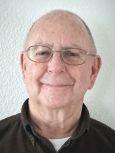
Steve Skinner has been involved in substations since 1977. During this time, he spent 38 years constructing, commissioning, operating, and maintaining substations, with approximately 20 of these years as engineering support for the substation technicians in four operating regions of Idaho Power Co. Steve has been with Doble Engineering Company for approximately five years acting as an Implantation Engineer. He manages the Doble Circuit Breaker Seminar, Circuit Breaker Testing Fundamentals for trainers, and SF6 Gas Handling Fundamentals sponsored by Doble Engineering and DILO.

52 • SPRING 2020 TROUBLESHOOTING A CIRCUIT BREAKER COVER STORY
LEARN WHAT YOUR OIL RESULTS REALLY MEAN.

DOBLE LABORATORY DIAGNOSTICS SEMINAR
AT POWERTEST 20 | , 20
Join us for a one day laboratory seminar on Friday, at PowerTest 20 . . We will share case studies illustrating common problems found in the field.
the presence of incipient-fault conditions and categorize them
REGISTER TODAY www.powertest.org 888-300-NETA Laboratory Seminar Fee is $445 • • • •Detect
• • • • • PARTICIPANTS
www.doble.com
WILL
Transformer Turns Ratio Meter
Model PATTR-01D
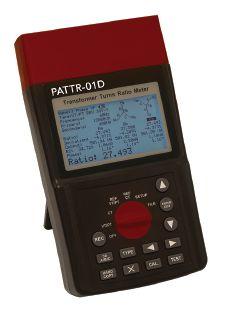
Measurements of 1-Phase and 3-Phase Transformer/VT/CT Turns Ratio
• VT/PT ratio 0.8-10000, CT ratio 0.8-2000
• High accuracy
• Bluetooth PC communication for CSV file extraction and remote operation
• Stores up to 4096 files internally
• Single Phase and 3 Phase operation at the push of a button
• 10 test frequencies (50-400 Hz)
• Displays Turns Ratio, Deviation, Secondary Output, Excitation Voltage and Current and Phase Angle
• Choose from 9 types of 3 Phase winding connections
Contact & Winding Resistance Micro-Ohm Meter

Model MRM-10P
• Manual or Auto Range
• Measurement of resistive and inductive
• Programmable Hi-Lo alarm with memory
• Readings Hold function
• Communication with PC

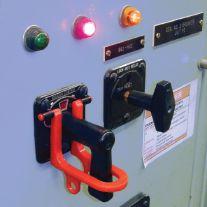
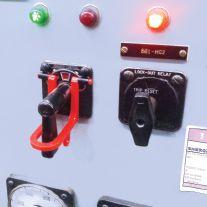


www.BurlingtonSafety.com info@BurlingtonSafety.com Browse and Buy Online Now! Metro NY/NJ/PA 800-220-2120 Calif (SF) 888-817-1412 Calif (LA) 800-296-2803 Your Source for NFPA 70E Compliant Protective Gear Accredited Proof Testing Laboratory Services Rubber Gloves Sleeves Blankets Line Hose Footwear Jumpers Hotsticks 1-301-746-8118 • www.PhenixTech.com 40+ Years Experience info@phenixtech.com • 75 Speicher Drive, Accident, MD 21520 USA Small, Handheld, Portable Transformer Turns Ratio and Micro-Ohm Meters High Voltage - High Current - High Power Test Systems and Components TECHNOLOGIES PHENIX R
NEW!




VLF TAN DELTA CABLE TESTING:


IS IT RIGHT FOR YOUR COMPANY?
 BY RICK YOUNGBLOOD, EM Testing
BY RICK YOUNGBLOOD, EM Testing
To explain VLF tan delta, we must first explain the reason it was developed and how the concept and equipment used to perform this test came about. Tan delta is still a form of high-potential (hipot) testing but utilizes the advantages of both AC and DC testing while eliminating many, but not all, of the disadvantages. The very-low-frequency (VLF) portion is explained in a short synopsis of AC and DC hipot testing that covers the good, bad, and ugly of each test.
Most test technicians have been required to perform dielectric voltage withstand testing, also known as high-potential testing, on cables. They usually discovered the differences between AC and DC testing the hard way, whether performing acceptance or maintenance testing.
Both hipot tests have natural advantages and disadvantages that are apparent depending on the equipment under test. The difference between AC and DC voltage and current becomes clear after a few hard-learned testing situations.
Every young test tech asks why the test voltages for DC and AC hipot testing are not the same. My immediate answer is a question: “Are 120V DC and 120V AC the same?” Th e initial answer is “Yes” until the tech sees me cringe
and thinks about the question. Once I ask, “Do the words root mean square (RMS) and peak voltage mean anything to you?” the answer becomes intuitively obvious and the reason for the difference in voltage falls into place. They now understand that for the stress level of DC voltages and AC voltages to be equivalent, DC must be raised to the peak value of AC, which equates to 1.414 of the AC value. The tech often asks a follow-up question: “How do you determine the value of voltage to use for a specific test?”
My answer is less from an engineering perspective than from an on-the-job training point of view. There are very accurate ways to determine the exact answer, but this rule of thumb works very well in most cases: The AC value equals 2 times 120% of nominal line
56 • SPRING 2020 VLF TAN DELTA CABLE TESTING: IS IT RIGHT FOR YOUR COMPANY?
FEATURE



voltage + 1000 V, applied for a unit of time. The DC test voltage would just be the peak AC equivalent. The test time for most standards, including products covered under IEC 60950, is 1 minute.
DC HIPOT
DC hipot testing measures the insulation resistance of cables by applying high voltage in steps or ramping up the voltage between the center conductor and shield. The leakage current is measured, and resistance is calculated using Ohms Law to obtain the insulation resistance. One negative aspect is that the cable conductor, shield, and insulation form a capacitor that initially acts as a short circuit while charging the capacitance of the cable — as we all have seen on our analog test set current meter — by bouncing the needle off the right-hand side of the meter case. This requires understanding how to properly run the hipot and why this

issue occurs. The instantaneous current surge can damage service-aged cables during the test due to the instantaneous over-voltage applied. Therefore, the test tech must ramp the voltage up in small increments to keep the charging current minimal and to avoid tripping off the test set during the charging interval.
Since the applied DC voltage on the test specimen is higher than for an AC hipot test, it is more prone to fl ash-over and corona discharges. The tech must utilize corona balls and bagging techniques to minimize the problem during the test.
When performing a DC hipot test, the capacitance of the circuit will maintain the applied voltage; therefore, a discharge circuit or other means to protect the test tech from possible lethal shock is required.
The DC hipot test is typically recommended only for new cables, but it is sometimes used on
NETAWORLD • 57 VLF TAN DELTA CABLE TESTING: IS IT RIGHT FOR YOUR COMPANY?
FEATURE


AC HIPOT
service-aged cables. One of the advantages of a DC test is that the leakage-current trip points can be set to a much lower value than an AC test voltage. That makes it possible to separate out specimens that have marginal insulation that would have been passed by an AC tester. There is some evidence that HVDC testing of aged extruded dielectric (particularly XLPE) cable is harmful and may result in failure of the cable when re-energized with AC or shortly after.
A simple circuit and graph (Figure 1) plots the charging of a capacitor using DC and shows initial voltage and currents from no charge to fully charged after five time constants (TC) where TC = RxC.
The AC hipot test, on the other hand, is performed by applying high-voltage AC on the conductors to be tested and measuring the current. Test results show a much higher current reading because the cable now performs both as a capacitor and a resistor in parallel. The center conductor acts as one plate of the capacitor and the outside layer represents the opposite plate separated by the dielectric insulation in the middle. AC current flows easily on a capacitor due to reversal of polarity, whereas DC current decreases as the effective capacitance of the cable charges to the test voltage. Th e AC voltage applied on the test conductor is lower compared to DC, but it requires considerably higher amounts of power because at 60 hertz, capacitive reactance is very low. Most test set power supplies have limitations that adversely affect the size of the specimen that can be tested and force the use of DC testing.
AC hipot tests include capacitive current (IC) and resistive current (IR) in parallel (Figure 2). The capacitive current is out of phase, leads the voltage by 90 degrees, and is typically large relative to the leakage (resistive) current. Thus, the charging current masks the leakage current and the test is only Go/No-Go; it is not diagnostic.
Total Current B – Total Current A = 1% change in the Total Current with a 0% change in the Capacitive Current “BUT” Leakage Doubled with no appreciable detection Total Current A
Current B
where:
IT = IC and IR
IC makes up the largest path since the leakage IR is minimal in good cables.
Problem: IR leakage changes significantly, affecting the IT minimally.
Resistance A Equals Resistance B Reactive Capacitive Current
3:
58 • SPRING 2020
VLF TAN DELTA CABLE TESTING: IS IT RIGHT FOR YOUR COMPANY? FEATURE τ 2τ 3τ 4τ 5τ Percent Charged Voltage and Current Switch R C V Time Constant 100 0 A = Voltage = B = Current =
δ Perfect Cable IC = 100% IR = 0 Real Cable IC < Total Current IR > 0 IT = the sum of IC and IR IC IC IR I I
Figure 1: Capacitance Charging Using DC
Figure 2: DC Hipot Test Currents
Total
Figure
AC Hipot Test Currents
The problem with AC hipot testing is the ratio of the resistive component and the reactive component. Leakage current in the specimen under test caused by defects can be easily overlooked (Figure 3).
HIPOT SUMMATION
Technicians face many challenges in AC and DC hipot testing that must be understood to accurately diagnose the condition of insulation in cables or any other device.
AC hipot source frequency plays the largest role in the amount of power required to charge the capacitance of a test specimen. The use of low frequency — such as 0.1Hz that is normally used — reduces the power requirement by 600 times as compared to 60 Hz tests. This means the lower the frequency, the larger the Xc, resulting in a smaller, more portable power supply that can drive larger, longer cables.
The measurement and diagnostic side is tan delta or dissipation factor. Most technicians routinely perform power factor (PF) testing. If they understand the theory of PF testing, they also already understand dissipation factor and just didn’t realize the correlation between the two.
In Figure 4, power factor is the cosine of the angle theta formed by the ratio of total current and resistive current, whereas dissipation factor is the tangent of the angle delta formed by the ratio of total current and capacitive current. The cosine of theta and the tangent of delta are comparable for results up to 10% PF.
VLF TAN DELTA
In a perfect capacitor, voltage and current are shifted by 90 degrees with the current leading the voltage. In a perfect cable, current is purely capacitive with zero resistive current. In reality, there is always a small amount of impurities in the dielectric; ageing and damage to the cable creates additional resistive paths and passes current to ground that can be identified and measured.
Figure 4: Comparison of Power Factor and Dissipation Factor Angles
Since the cable is not perfect and there is resistive current, the phase angle is not 90 degrees, but something less. The amount of phase angle shift is proportional to the level of contamination and damage. Test equipment and associated software measures the shift in phase angle, displays the applied voltage, creates the graphical waveforms, and calculates the tan delta number, which provides excellent and easy to interpret results.
TAN DELTA PERFORMANCE MEASUREMENT
The cable to be tested would be de-energized, disconnected, isolated, and tested for absence of voltage. Anything that is part of the test circuit will affect the results, including items such as terminations and equipment that cannot be disconnected. The ends of the cable must be prepped, cleaned, and bagged to prevent corona and partial discharge issues that would adversely affect the test results. The voltage is then raised in steps (Figure 5), typically one-
Figure 5: Application of Voltage
NETAWORLD • 59
VLF TAN DELTA CABLE TESTING: IS IT RIGHT FOR YOUR COMPANY? FEATURE
IT = Total Current IR
IC =
δ φ IC IR IT Voltage Cosine Tangent
= Resistive Current
Capacitive Current
2.0*U0 1.5*U0 1.0*U0 0.5*U0 U[KV] Voltage Hold Voltage Ramp-up t
6: Tip-Up Curves for Various Cable
half the normal operating voltage starting at 0.5Uo, where the letter “U” represents a unit of voltage based on dividing the operating voltage into quarters. The test steps would equal 0.5Uo, 1.0Uo, 1.5Uo, and 2.0Uo. At 2.0Uo, the test voltage is held for a predetermined amount of time, typically 30–60 minutes, called withstand. This test is Go/No-Go. At the end of the time, the voltage is reduced to zero.
The tan delta numbers at the lower voltage are then compared to those at the higher voltage (Figure 6). If the insulation could be perfect, the line would be horizontal when the T/D numbers for each voltage are graphed. In less than perfect insulation, the tan delta numbers will increase as the voltage is increased.
IEEE Std. 400-2.2013, IEEE Guide for Field Testing of Shielded Power Cable Using Very Low Frequency (VLF)(less than 1 Hz) provides recommended test voltages, test times, and withstand hold times for different types of cables.
INTERPRETING RESULTS
Understanding the results requires some experience. Results are divided into good, marginal, and deteriorated categories:
• Good indicates the cables test well and can be returned or placed into service for the first time.
• Marginal means tan delta values indicate areas of poor or damaged insulation in the
7: Results on Good Cable
cable system and further information on the cable is required to determine if the cable is safe to return or place in service.
• Deteriorated indicates the cable system has extremely high tan delta values indicating a significant problem and should not be returned to service.
In all cases, a previous benchmark test provides the easiest means to compare the latest test results. However, a benchmark is not necessary to obtain accurate assessment as can be observed in the actual test data sets seen in Figure 7, Figure 8, and Figure 9.
60 • SPRING 2020
VLF TAN DELTA CABLE TESTING: IS IT RIGHT FOR YOUR COMPANY?
FEATURE Poor Insulation 0 Aged Insulation TD Voltage New Insulation
Conditions 25 22.5 20 17.5 15 12.5 10 7.5 5 2.5 0 0 246 81012141618202224 TD Va lue [E-3] Voltage [kVrms] Outgoing Phase A Phase B Phase C Device Under Test: Cable Insulation Type: EPR DUT Voltage Rating: 15.0 kV Measurement Type: Length: 220 Acceptance Size: 350 Manufacturer: General Cable Company: Region: Operator: Work Order: I18238 Phase A Summary: 0.1 Hz, 20.4 nF Voltage [kVrms] 4.0 8.0 12.0 21.0 TD Value [E-3] 21.06 21.21 21.45 22.10 Std. Dev. [E-3] 0.01 0.01 0.00 0.01 Phase B Summary: 0.1 Hz, 20.3 nF Voltage [kVrms] 4.0 8.0 12.0 21.0 TD Value [E-3] 18.51 18.66 18.86 19.41 Std. Dev. [E-3] 0.01 0.01 0.00 0.01 Phase C Summary: 0.1 Hz, 20.4 nF Voltage [kVrms] 4.0 8.0 12.0 21.0 TD Value [E-3] 21.71 21.88 22.13 22.79 Std. Dev. [E-3] 0.02 0.01 0.01 0.00
Figure
Figure
Device Under Test: Cable Insulation Type: XPLE DUT Voltage Rating: 1.0 kV Measurement Type:
I19285
Phase A Summary: 0.1 Hz, 77.8 nF
Phase B Summary: 0.1
Phase C Summary:
SG #14 FEEDER
Switchgear 6A Feeder
A Phase B Phase C
Figure 8: Results on Marginal Cable
Just as in power factor, dissipation factor/tan delta is very linear for any applied test voltage. If the cable is damaged, the change in the capacitance and/or resistive watts loss will cause a change in the graphical analysis and will no longer be flat or linear; therefore, the sharper the climb (tip-up) with increased voltage, the greater the existing damage. A change in either the resistive element or the capacitance directly shifts the results, although it is most often a resistive shift rather than a capacitive shift that causes the changes in T/D results and curves. This may be due to contamination, water treeing, partial discharge, moisture, or poorly installed terminations to name a few. It
is a test technician’s responsibility to recognize that a problem exists and determine whether the cables are safe to energize. With practice, most techs will be comfortable performing this much more reliable test technique.
CONCLUSION
This brief description of hipot versus tan/ delta demonstrates that tan/delta incorporates the “good” of DC and AC hipot as well as eliminating many of the “bad” of both by incorporating low-frequency AC to minimize equipment power supply needs and providing test results that are easy to obtain and evaluate.
NETAWORLD • 61 VLF TAN DELTA CABLE TESTING: IS IT RIGHT FOR YOUR COMPANY? FEATURE 200 180 160 140 120 100 80 60 40 20 0 0 2468 10 12 14 16 18 20 TD Va lue [E-3] Voltage [kVrms] Phase A Phase B Phase C
DUT Voltage Rating: 15.0 kV Measurement Type: Length: 420 Maintenance Size:
Manufacturer: Okonite/South Company: Region: Operator: Work Order: I19229 Phase A Summary: 0.1 Hz, 33.0 nF Voltage [kVrms] 4.0 8.0 12.0 21.0 TD Value [E-3] 26.6 27.1 27.9 29.3 Std. Dev. [E-3] 0.00 0.00 0.01 0.01 Phase B Summary: 0.1 Hz, 32.5 nF Voltage [kVrms] 4.0 8.0 12.0 21.0 TD Value [E-3] 99.6 109.5 121.1 111.0 Std. Dev. [E-3] 0.18 0.13 0.07 0.98 Phase C Summary: 0.1 Hz, 32.2 nF Voltage [kVrms] 4.0 8.0 12.0 21.0 TD Value [E-3] 31.4 58.8 73.9 55.4 Std. Dev. [E-3] 0.08 0.09 0.12 0.67
Device Under Test: Cable Insulation Type: EPR
2/0
200 180 160 140 120 100 80 60 40 20 0 0 2468 10 12 14 16 18 20 TD Va lue [E-3] Voltage [kVrms]
Phase
Length: 420 Maintenance Size: 500 kmcil Manufacturer: Southwire Company: Region: Operator: Work Order:
Voltage
4.0 8.0 12.0 21.0 TD Value [E-3] 16.4 16.8 17.2 17.6 Std. Dev. [E-3] 0.00 0.00 0.00 0.00
[kVrms]
Hz, 77.3 nF Voltage [kVrms] 4.0 8.0 12.0 21.0 TD Value [E-3] 16.5 16.9 17.2 17.5 Std.
0.00 0.00 0.00
Dev. [E-3] 0.00
Hz, 76.1 nF Voltage [kVrms] 4.0 8.0 TD Value [E-3] 119.5 173.5 Std. Dev. [E-3] 0.03 0.27
0.1
Figure 9: Results on Deteriorated Cable
ALL TEST RESULTS COURTESY OF HV DIAGNOSTICS
The graphical analysis provided by the software provides uncomplicated identification of problems for both the technician and the end user or owner of the cables. Depending on the equipment manufacturer, the results can be sent by Bluetooth to a laptop; this makes the test much safer for the test technician and practically fully automated.
Rick Youngblood is responsible for utility contracts as well as in-house training for all technicians at Electrical Maintenance and Testing in Carmel, Indiana. After leaving active duty Air Force, Rick finished his engineering degree at Purdue

University and worked for PSI Energy as a Project Engineer responsible for substation maintenance and testing. He finished his 25-year career with Duke Energy as Manager of Substation Services responsible for all aspects of substation maintenance and test. After retiring from Duke, Rick and his partner opened up a branch of American Electrical Testing in Indianapolis concentrating on utility business, where he earned his NETA Level 2 and Level 3 Technician. Rick retired a second time after seven years and closed the Indianapolis division of AET. Finding retirement unsatisfying, Rick became a Client Service Engineer for Doble Engineering, where he dealt with all utilities from a training perspective for the Great Lakes region for seven years.
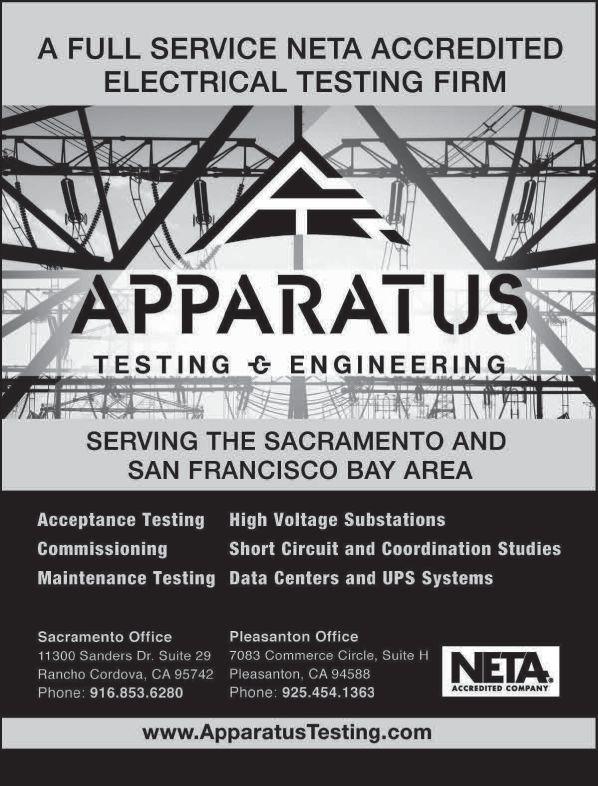



ELECTRICAL TESTING LEADING EDGE
ELECTRICAL TESTING LEADING EDGE
SERVICES
a comprehensive array of
FEATURE
TESTING,
METERS
Acceptance Testing
Commissioning
Motor
Cable Testing Load
Power Quality Recording
Analysis Nu Heat Certified Repair Specialists CONTACT US TODAY • 24 HOUR SERVICE 228 Merrick Road, Lynbrook, NY 11563 (631) 589-6343 601 Union Street, Brooklyn, NY 11215 (718) 786-4900 WWW.ELEMCO.COM Licenced in New York and New Jersey
on the
on the ELEMCO
offers
state-of-the-art electrical testing services and expertise. HIGH, MEDIUM AND LOW VOLTAGE REPAIR AND MAINTENANCE OF: Switchgear / Circuit Breakers / Transformers / ATS Switches / Cables
CALIBRATION AND REPAIR OF
AND RELAYS FIELD SERVICES:
and
/ Infrared Surveys
and
and
and





















800.331.2002 | PotomacTesting.com POWER THROUGH WITH CONFIDENCE MAKE A REAL POWER MOVE... PARTNER WITH MID-ATLANTIC’S PREMIER PROVIDER OF ELECTRICAL TESTING, ENGINEERING AND FIELD SERVICES. SINCE 1985









CATEGORIZING FAULTS IN POWER TRANSFORMERS VIA DISSOLVED GAS ANALYSIS




 BY RANDY COX, GE Grid Solutions
BY RANDY COX, GE Grid Solutions
While the chemistry behind dissolved gas analysis (DGA) is complex and important for industry chemists to understand, the typical DGA review need not be as complex. Thermal or hot metal gasses are commonly known in DGA, and they are widely understood by industry experts, chemists, and many asset owners. The carbon oxide gasses — carbon dioxide and carbon monoxide — have always been a gray area. It is widely accepted that the production of carbon monoxide increases where thermal energy is applied. However, higher levels of carbon monoxide do not always mean issues with paper, and the lack of measured production does not mean there are no paper-related issues with the transformer.
Some time ago, I taught a small seminar for Memphis Light, Gas and Water. The topics for the day were power factor testing and DGA. Chris Rutledge, a young man who worked in the transformer repair shop at MLGW, attended that day, and he asked about the carbon oxide gasses. I responded, “These are likely the least understood gasses by the industry.” To my understanding at the time, if
you had any paper issues with a transformer, carbon monoxide would be produced — and that was the extent of my knowledge related to these gasses.
At the end of the seminar, I provided my email and phone number, and Chris began to reach out; we developed a close relationship over the years. After Chris took over as supervisor

64 • SPRING 2020 CATEGORIZING FAULTS IN POWER TRANSFORMERS VIA DISSOLVED GAS ANALYSIS
FEATURE PHOTO: © ISTOCKPHOTO.COM/PORTFOLIO/BEHOLDINGEYE



of the transformer repair shop in late 2013 or early 2014, Chris believed he had found a way to categorize paper vs. bare-metal faults in transformers. He asked me to look over his findings to see if I could come to the same conclusions. From that moment to today, life has not been the same. I was amazed at how simple it was to do and quite surprised that it had not been noticed before in the industry.

Partial Discharge (Not Temperature Dependent)

Hydrogen (H2)

Range of Normal Operation
Hot Spots (Of increasing temperature)

This article identifies these relatively recent and simple steps to interpret DGA that can be applied to identify what is involved in a transformer fault. These interpretation steps simplify the analytics regarding what many consider to be a very complex subject: categorizing developing internal faults for oilfi lled power transformers. Obtaining these answers — initially, we need to know the amount of paper involved in a given fault — can mean the difference between less costly, onsite repair versus total replacement of the transformer. In rarer cases where we struggle to make sense of the information, a number of industry chemists and experts are willing to assist with a deeper interpretation. Most end users look for acetylene and feel better when they do not see it in a DGA, and rightfully so. However, if this is the extent of your knowledge and you want an improved grasp of what can be a very stressful topic, continue reading.
THE FACTS
There are knowns in DGA. The industry is proficient at identifying overheating (thermal faults) in oil-filled power transformers, and the novice has access to a wealth of tools. Measuring the internal oil temperature at 150°C+ temperatures is accomplished by measuring the hot metal gasses. These gasses are, in order of their initial thermal generation, hydrogen (H2), methane (CH4), ethane (C2H6), ethylene (C2H4), and acetylene (C2H2) (Figure 1).
The diagnosis of paper via the carbon oxide gasses — carbon dioxide (CO2) and carbon monoxide (CO) — is not quite as well understood. It can be even more challenging if
Methane (CH4)
Ethane (C2H6)
Ethylene (C2H4)
Acetylene (C2H4)
CH4>H2
C2H6>CH4
C2H4>C2H6 Trace
C2H2>10% of C2H4
Gas Generation (Not to Scale) Approximate Oil Decomposition Temperature above 150ºC
the trouble exists on a paper-wrapped lead, since that scenario involves significantly less paper.
According to a CIGRE study (Figure 2), if you exclude bushing failures where faults are typically detected either by off -line power factor/dissipation factor testing or on-line capacitance delta monitoring, the three main categories of failure are windings, tap changers, and lead exits. To simplify the process, think of interpreting the gasses like putting together a three-piece puzzle — winding, leads, and connections — in other words, a great deal of paper, some paper, or no paper. This process simplifies the findings and allows the technician to properly categorize the ongoing fault or conduct post-fault analysis.
NETAWORLD • 65 CATEGORIZING FAULTS IN POWER TRANSFORMERS VIA DISSOLVED GAS ANALYSIS
FEATURE
Arcing Conditions 350ºC 500ºC 700ºC 250ºC 800ºC 300ºC 200ºC 65ºC 150ºC
Figure 1: Combustible Gas Generation vs. Temperature
SOURCE: MORSHAD







2: CIGRE Study on Causes of Failure in Scrapped vs. Repaired Transformers
Our focus for interpreting legacy transformer DGA would be better served by concentrating on these areas, which tend to be more common failure modes. What do we really want to know when reviewing DGA? Shouldn’t it be the amount of paper involved in a developing fault, if any? After all, the initial question we want to answer if a problem arises is “Can it be repaired onsite, and if so, is it a bare metal connection, a paper-wrapped lead, or a winding?”
To better understand how to arrive at a conclusion regarding any developing issue, it is important to note that at all working temperatures, CO is less soluble than CO2 (Figure 3).
This is an important point, since to identify categorically where a problem exists, the CO2/ CO ratio must be trended as opposed to a
snapshot in time. In other words, what was the ratio prior to the problem and where is its norm? This thinking is new to our industry, as this ratio is typically referred to in many technical publications and industry guides as a single value for diagnostic purposes. To demonstrate this more fully, the following transformers both tripped on a transformer differential relay operation with a very similar arcing profile. There’s no question that a flashover occurred in both transformers as seen in (Figure 4).
However, these transformers had very different outcomes, evidenced by the post-event impact on the CO2/CO ratio (Figure 5).
We now know that the more paper involved in a fault, the greater the impact on the CO2/ CO ratio, as shown in Figure 6a and Figure 6b, which demonstrate the results of the aforementioned transformer trips. Where the ratio dropped significantly, a low-side winding failure occurred; where a paper-wrapped primary lead flashed over (minimal paper), there was much less impact.
To further illustrate the value of this ratio, the 10 MVA transformer in Table 1 tripped on a transformer differential relay operation. There was absolutely no impact on the CO2/CO ratio, verifying that no paper was involved in the presence of the hot metal gas generated post-fault.
As seen in Table 1, the hot metal gas did not have a negative impact on the CO2/CO
66 • SPRING 2020
FEATURE CATEGORIZING FAULTS IN POWER TRANSFORMERS VIA DISSOLVED GAS ANALYSIS Scrapped Transformers (242) Repaired Transformers (465) Repair Time Winding 64.88% Lead Exit 7.02% Tap Changer 12.40% Tap Changer 26.24% CT 0.43% Winding 42.37% Onsite Repair < 1 week 7.37% Onsite Repair > 1 week 12.97% Onsite Repair > 1 month 2.28% Repair in Workshop 31.85% Scrapping 31.74% Unknown 13.80% Lead Exit 6.45% Insulation 2.15% Electrical Screen 0.65% Core and Magnetic Circuit 2.89% Core and Magnetic Circuit 4.09% Flux Shunts 0.65% Tank 0.86% Cooling Unit 1.51% Bushings 10.33% Bushings 14.62% Insulation 2.48%
100 80 60 40 20 Hydrogen Nitrogen Carbon Monoxide Oxygen Methane Acetylene Carbon Dioxide Ethylene Ethane D-3612A D-3612C 0 0.01 0.10 1.00 10.00 *Data corrected for oil density Oil Temperature (ºC) Gas-in-Oil Solubility (v/v)*
Figure
SOURCE: CIGRE TRANSFORMER RELIABILITY SURVEY
Figure 3: Gas Solubility Coefficients in Oil


ratio. Internal inspection revealed a failed, deenergized high-side tap changer. No paper was involved in the fault, so when the ratio was compared to generation of hot metal gas at the time of the trip, the lack of impact tells the story: No paper was involved, thus the issue was a bare-metal connection such as a de-energized tap changer contact. In many if not most cases, an onsite repair can be made. This is an important point since onsite repair is typically less time consuming and less costly than replacement.





TESTING THE THEORY
To better understand the effect thermal energy has on the CO2/CO ratio, Memphis Light, Gas and Water conducted an experiment on a 25 KVA transformer with mineral oil and Kraft paper. A thermal well was installed through the wall of the transformer and inserted to a depth of 5 in. into the windings. A small
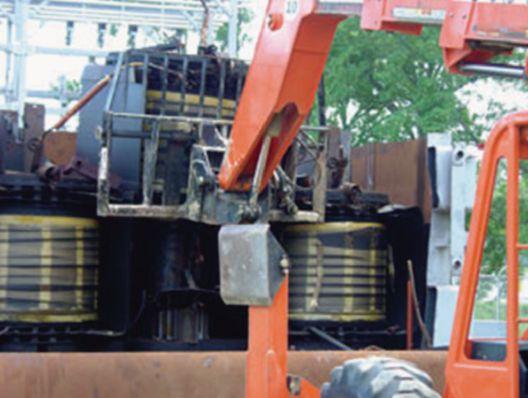

NETAWORLD • 67
FEATURE CATEGORIZING FAULTS IN POWER TRANSFORMERS VIA DISSOLVED GAS ANALYSIS Table 1: Impact on CO2/CO Ratio Test DateHydrogenMethaneEthaneEthyleneAcetyleneCO2 COCO2/CONitrogenOxygen 9/5/2002 20000 18202218.235294684769186 8/19/2004 40000 18752497.53012800617268 6/16/2005 21000 19512318.445887791407284 8/14/2006 63000 345032210.71429829007507 8/7/20082119736446661405253023910.58577671897881 0 20 40 0 20 40 H2 CH4 C2H6 C2H4 C2H2 H2 CH4 C2H6 C2H4 C2H2 36 MVA Post Fault 30 MVA Post Fault 0 50 100 150 Pre FaultPost FaultPre FaultPost Fault 0 2 4 6 8 CO2/CO CO2/CO
Figure 4: Gas Ratios Following Flashover
Low-Side Winding
6b: Paper-Wrapped Primary Lead
Figure 5: Post-Event Impact on CO2/CO Ratio Figure
6a:
Figure




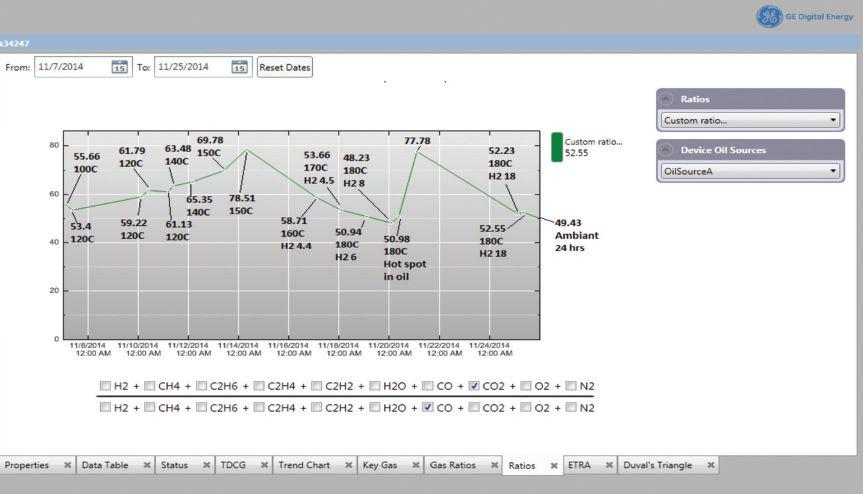
heating element was placed into the well and raised to temperatures ranging from 100°C to 180°C over a period of 22 days. The results of this experiment are shown in Figure 7. The CO2/CO ratio started at 55.60:1 at 100°C; as the temperature increased in 10-degree increments, the ratio displayed a steady increase until 150°C was reached. At this point, the ratio was at 78.51:1, but it began to decrease as the temperature continued to be raised up to 180°C. The ratio had declined to 48.23:1, and at this point, the heating element was moved so that it was no longer in contact with the paper insulation and was only directly heating the oil. The temperature of the heating element was maintained at 180°C. After the element was positioned to only be in direct contact with the oil, the CO2/CO ratio began to steadily rise, apart from the 11/21/2014 sample, until it reached 52.55:1 at the end of the experiment. The 11/21/2014 sample was determined to be erroneous due to all gas levels being approximately half the value of the samples taken immediately before and after that date.
WHY DOES IT WORK?
CO will never remain dissolved in oil equal to or more than CO2. The CO2/CO ratio cannot

drop in the absence of CO creation because CO seeks to leave solution at all working temperatures relative to CO2. Therefore, if both gasses are decreasing relative to prior samples and the ratio drops, it must be because CO is being generated more than CO2; however, both are being generated at lower levels than are leaving the oil. Looking at the design of a transformer, we can better understand why the ratio of CO2 and CO can be used to identify the general fault location. In other words, does the problem include heavy paper involvement, light paper involvement, or no paper involvement? The relative availability of oil to contact the paper determines the available O2. The more oil available, the more cooling and O2 is available. In the windings, where paper is tightly wrapped, oil has less contact per volume of paper than on a lead.
CONCLUSION
Transformers have a home as it relates to the CO2/CO ratio. Additionally, these ratios are not all the same. Some publications note the ratio should be between 3:1 and 11:1, while other publications say it should be above 7:1. The truth is that transformers can, for the most part, be just about any value. The key is not
68 • SPRING 2020
FEATURE
CATEGORIZING FAULTS IN POWER TRANSFORMERS VIA DISSOLVED GAS ANALYSIS
Figure 7: Effects of Thermal Energy on CO2/CO Ratio SOURCE: RUTLEDGE

what value they display when all is well, but rather what happens to these values when issues develop proportional to their norm. We have learned that where paper is heavily involved (e.g. inner winding), the ratio drops a minimum amount of 65%. Where less paper is involved such as a paper-wrapped lead or even an outer winding where there is greater access to available O₂, the value drops between 25% and 50%. Where no paper is involved, the ratio may actually increase, or it may decrease slightly.
REFERENCES
CIGRÉ A2.37. “Transformer Reliability Survey.”
Molla Morshad. “Transformer Oil Analysis,” accessed at https://www.slideshare.net/ MollaMorshad/transformer-oilspecificationsnew/55.
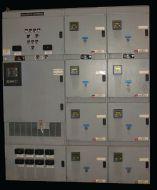

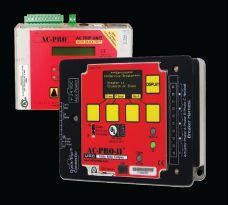
Rutledge, Chris. “Dissolved Gas Analysis Using Carbon Oxide Ratios,” TechCon 2016.

Randy Cox is the Domain Expertise Manager for GE Grid Solutions. His current duties include interfacing with the industry, writing and presenting industry technical papers, committee work, and customer education. Prior to GE Grid Solutions, Randy was employed by SPX Transformer Solutions, Inc. as the Operations Supervisor for the Texas Service Center, which included staffing and implementing a new service center to perform transformer installations, repair, and LTC maintenance. He also worked for Oncor Electric Delivery’s Dallas District as the Diagnostic Technician Operations Supervisor for 29 years and served as the Transmission Chairperson for Oncor’s Oil & SF6 Diagnostics and Diagnostic Testing Training committees. Randy has published many industry technical papers related to substation transformer and circuit breaker diagnostics. He is an IEEE member and a Fellow at General Electric.
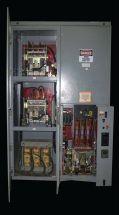
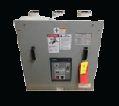
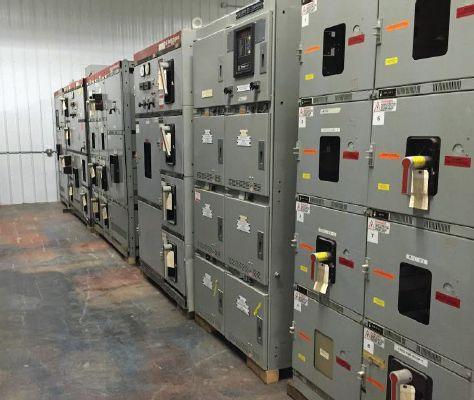

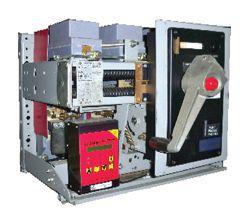
FEATURE
BULLOCK BREAKERS B B 475 Annandale Blvd • Annandale • Minnesota 55302 www.bullockbreakers.com • Email: jason@bullockbreakers.com • Thousands of Air Circuit Breakers in Stock! • Switchgear Line-ups you can’t find anywhere else! • Now Available as Reconditioned with AC-Pro Trip Units! 1-763-269-2832




BUSHING CONDITION ASSESSMENT AND TROUBLESHOOTING
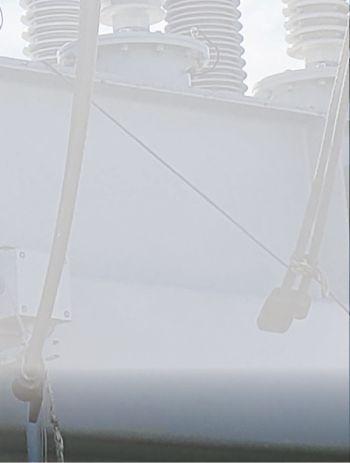 BY DANIEL CARREÑO, ABEL GONZÁLEZ GÓMEZ, and VOLNEY NARANJO, Megger
BY DANIEL CARREÑO, ABEL GONZÁLEZ GÓMEZ, and VOLNEY NARANJO, Megger
Bushings are the means by which electric power passes to and from different electrical devices, as they provide a point of interface for electrical voltage to be applied and current to pass to and from an electrical apparatus. The bushing’s center conductor is above ground potential and must be electrically insulated from the tank walls, which are at ground potential. The bushing’s main function of allowing the current to pass through the apparatus cannot be achieved without the bushing’s ability to insulate the main conductor from ground.
72 • SPRING 2020 BUSHING CONDITION ASSESSMENT AND TROUBLESHOOTING
FEATURE

Bushing construction includes condenser and non-condenser types. Most power transformer high-voltage bushings today are the condenser oil impregnated paper (OIP) type. These bushings have a series of dielectric layers with conductive foils between each layer to improve electric field uniformity by grading the voltage drop across the insulation. OIPtype bushings are susceptible to failure due to aging, contamination, and deterioration of the composite insulation system. Therefore, a nonintrusive and non-destructive testing technique capable of evaluating changes in the dielectric
properties of the inner insulation is vital for power system operators and manufacturers of high-voltage (HV) equipment.
Bushing tests performed during maintenance include insulation tests, including power factor (PF), capacitance measurements, and dielectric frequency response (DFR); conductor and connections integrity (low-resistance measurements); infrared inspections (usually to determine the oil level of the bushings); and in specific cases, dissolved gas analysis (DGA) and partial discharge (PD) tests.
NETAWORLD • 73 BUSHING CONDITION ASSESSMENT AND TROUBLESHOOTING
FEATURE
PHOTO
COURTESY OF MEGGER
This article focuses on PF and capacitance tests and troubleshooting techniques on OIP type bushings. The PF test on bushings is susceptible to external influences that may generate false results, so before condemning a bushing, it is important to troubleshoot the result to verify its validity and provide accurate assessment. Knowing construction characteristics and testing techniques is necessary to understand the results and how to troubleshoot them. The following sections describe OIP bushing characteristics, best testing practices, and several troubleshooting techniques for PF and capacitance measurement.
OIP BUSHING PF TEST
OIP bushings include a capacitive divider with multiple capacitors grouped by a tap connection. The values of the two main capacitances or two capacitors C1 and C2 are usually indicated on the manufacturer’s bushing nameplate. The tap connection, depending on its constructive characteristic, is classified as a test tap or a voltage tap.
IEEE C57.19.00 states that the test tap is a connection to one of the conducting layers of a capacitance graded bushing for measurement of partial discharge, power factor, and capacitance values from conductor to tap. The voltage tap is a connection to one of the conducting layers (Figure 1) of a capacitance graded bushing providing a capacitance voltage divider. Additional equipment can be designed, connected to this tap, and calibrated to indicate the voltage applied to the bushing. This tap can also be used to measure partial discharge, power factor, and capacitance values.
Lower-voltage bushings do not require a tap, and the capacitance (C) of a bushing without a voltage or test tap is the capacitance between the high-voltage conductor and the mounting flange (ground).
C1 capacitance, the bushing’s main insulation, is measured between the high-voltage conductor and the voltage tap or the test tap. C2 capacitance is the insulation layer between the tap and mounting flange (ground); it is regularly shorted during normal operation or connected to a potential measurement device for online monitoring or as auxiliary power. If there is no tap, the PF testing is performed using the hot collar technique, described further in the article.
POWER FACTOR TESTING AND SETUPS
PF and capacitance measurements of C1 and C2 (Figure 2) are performed sharing the same test setup: All the bushings on each side of the voltage level of the transformer should be isolated and shorted. All groups of untested bushings should be grounded.
The test is typically done at line frequency, 10 kV for C1 and 500–2000 V for C2, or at the voltage suggested by the bushing manufacturer depending on the application. Before applying a test voltage to the tap, the maximum safe test voltage must be known and observed. Only the tap cover for the bushing to be tested should be removed.
For C1 measurements, the test is conducted in the ungrounded-specimen test (UST) mode, which eliminates losses leaking to grounded portions of the bushing.
C2 measurements (Figure 3) use the groundedspecimen test with guard (GST-g) mode, which energizes the tap and measures losses leaking from the tap to ground. This measurement is not appreciably affected by connections to the bushing center conductor.
74 • SPRING 2020
BUSHING CONDITION ASSESSMENT AND TROUBLESHOOTING
= Tap
FEATURE
C2 C1
Figure 1: Modeling the OIP Bushing as a Set of Capacitive Layers
For bushings not equipped with either a test tap or a voltage tap, the main field measurement that can be performed is the hot collar test (Figure 4), which generates localized high-voltage stresses through the various sections of any bushing or pothead so the dielectric losses can be measured. This is accomplished by applying the voltage to a conductive collar band designed to fit closely to the porcelain surface, usually directly under the top petticoat. The bushing center conductor is grounded by connecting it to the red cable and using the GST-GND test mode, which measures the overall losses leaking to the center conductor and the ground.
The test measures the losses in the section directly beneath the collar and is especially effective in detecting conditions such as voids in compound-filled bushings or moisture penetration since the insulation can be subjected to a higher voltage gradient than can be obtained with normal bushing tests.
TEST RESULT EVALUATION
Generally, power factor measurement results are evaluated by comparison with standard defined limits or trending of historic values. Such limits vary depending on the type of bushing and are defined at a specific test voltage and frequency. Table 1 shows the accepted IEEE C57.19.01 and IEC 60137 standard limits for PF values for OIP bushings. Typical values for new bushings range between 0.2% and 0.4%.
A change in PF can indicate problems such as moisture ingress, degradation, carbonized parts, or bad contacts. According to CIGRE 445, a doubling of the initial PF value warrants either more frequent monitoring or replacement.
A change in capacitance could indicate a breakdown between capacitive layers. An increase of 10% in the value of capacitance from the nameplate value could warrant replacement of the bushing.
The best way to visualize the results of insulationrelated measurements is as a function of time. An increase on the value of PF or capacitance over
NETAWORLD • 75
BUSHING CONDITION ASSESSMENT AND TROUBLESHOOTING FEATURE U V A CHL CH CL U V A CHL CH CL
Figure 2: Setup for C1 Power Factor and Capacitance Measurement Using UST Test Mode
U V A
Figure 3: Setup for C2 Power Factor and Capacitance Measurement Using GST-g Test Mode
Figure 4: Setup for Hot Collar Measurement Using GST-GND Test Mode
Table 1: International Standards for PF Acceptance Limits
time indicates deterioration of the insulation and should prompt further investigation or removal of the bushing depending on the depth or slope of the variation. A higher slope or deeper variation indicates acceleration of the deterioration of the insulation system and can provide an early indication of failure.
It is important to note the PF results are both frequency and temperature dependent. Test frequency is more easily controlled and depends on the test instrument and the selected test method. Temperature, on the other hand, depends on environmental factors. Trending PF values is only possible if all the results are corrected to a single reference temperature. Temperature correction factors provided by manufacturers are a popular way of dealing with this issue, but it’s proven to be average at best and may or may not match the true thermal condition of the dielectric under examination at the time of testing.
FIELD ERRORS AND TROUBLESHOOTING TECHNIQUES
Properly handling testing techniques assures correct results; however, there may be situations where the results are not as expected. In cases like this, the first suspect is the test instrument. If there is doubt about the PF test set, one common troubleshooting technique is to perform an open-air test, which is commonly described in the instrument’s user manual. An additional test to verify the instrument is to measure a reference capacitor.
Successful troubleshooting requires full understanding of the UST, GST-g, and GSTGND test modes and full command of the operation of the instrument to be able to use these modes at will.
The various conditions that can affect a PF measurement such as temperature, moisture, contamination, and handling of the tap must also be considered. The following sections provide insight on how to handle these aspects during testing and an introduction to additional advanced testing techniques available for troubleshooting.
Bushing Temperature Correction
Although PF measurements are obtained from accurate instruments, they must be corrected to 20°C using reference tables or the individual temperature compensation (ITC) method. Temperature correction is highly dependent on the insulating material’s structure, ageing condition, moisture content, and contamination, so using a fixed correction factor from a reference table may introduce some error in the corrected value by under- or over-compensating. The ITC method calculates an accurate correction factor based on a variable frequency PF measurement and the fact that a power factor at a certain temperature and frequency corresponds to a measurement made at different temperature and frequency (Figure 5).
Despite the method, bushing temperature must be accurately determined to avoid introducing a signifi cant error in the corrected value. Since there is no direct method to measure bushing temperature, it must be estimated. The recommended approach is to calculate the average of the transformer top oil and the ambient temperature.
The lowest temperature acceptable for testing is 0°C (32°F). Below this value, especially for equipment exposed to these temperatures for
76 • SPRING 2020
BUSHING CONDITION ASSESSMENT AND TROUBLESHOOTING FEATURE
ReferenceTest Voltage Max Acceptance PF/DF Value (%)Temperature (C) IEC 601371.05*Um/(1.73) and Um0.710° to 40° IEEE
for C10.5Corrected
20°
C57.19.01Typically, 10 kV
to
a long time, it is very likely that any moisture contained in the bushing will freeze, increasing the resistivity of the overall insulation and consequently generating a false good PF value.
Temperature correction factors for specimens at high temperatures (above 40°C) may be limited in the reference tables; however, ITC provides accurate correction of C1 PF at a wide range of temperatures, even greater than 55°C.
If reference correction factors are not available, the recommended approach is to use ITC or retest at a temperature closer to the 20°C reference.
Correct Handling of the Capacitance Tap
In a capacitance graded bushing, the main purpose of the test tap component is to provide access to measure the bushing capacitance and power factor. The voltage tap can also be used to measure permanent voltage or to monitor PF or partial discharge online.
When testing transformer bushings, all bushing tap caps should remain installed (closed) except the bushing under test. Since the test voltage is applied to a group of bushings, any unused test tap will have a potential difference if not grounded. The voltages that can be developed at open test taps may generate leakage current that not only can affect the PF results, but also severely damage a bushing and pose a safety hazard for the individuals performing the tests.
Special care should also be observed to properly connect the test leads to the capacitance tap; in some cases, adapters are needed to achieve a suitable connection while maintaining isolation from ground. These adapters are usually provided by the test set and/or bushing manufacturer.
Grounding and Shorting Techniques
When performing power factor and capacitance measurements on transformer bushings — both single- and three-phase — a well-known

practice is to short all the bushings of the same group (same voltage level) together to form an equipotential section of the transformer with each winding group when performing a test (see shorts (a) and (b) in Figure 6).
When test voltage is applied in a given test, all bushings of that group will be at the same potential with respect to ground due to the short between them. On groups of untested bushings, a second auxiliary connection to ground is necessary (connection (c)) to avoid development of floating potentials that — just as open test taps — can be hazardous for personnel taking the measurements.
NETAWORLD • 77 BUSHING CONDITION ASSESSMENT AND TROUBLESHOOTING
FEATURE
(c) (a) (b) U V A CHL CH CL
Figure 5: Bushing PF Temperature Dependence
Figure 6: Effective Shorting and Grounding Techniques
In addition to the safety factors involving shorting and grounding groups of bushings during power factor and capacitance measurements, these connections will also be useful when facing situations involving surrounding energized overhead lines and equipment, which can cause unwanted induced voltages. These voltages, in conjunction with the winding inductance of the transformer, as well as the stray capacitance between the windings and the bushings insulation, can lead to measurement errors.
Eliminating Surface Leakage Currents
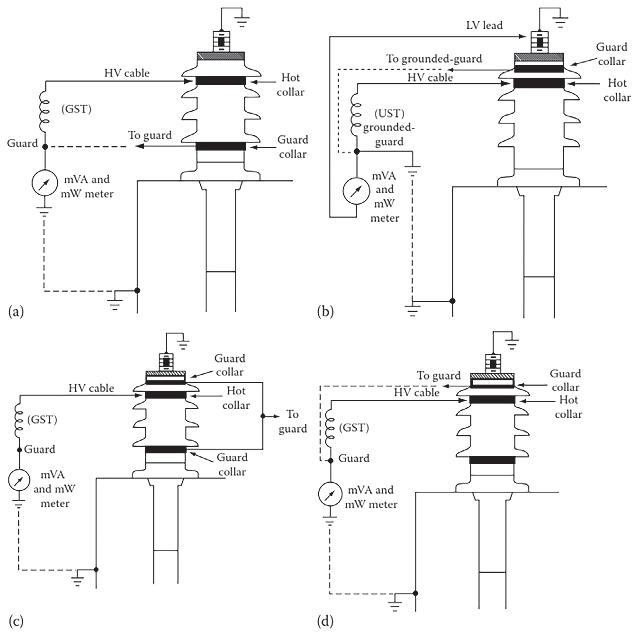
When cleaning the bushing, special attention should be given to the test tap. Any adapter being used should also be in a clean and dry condition. A clean, dry cloth and window cleaner with ammonia is recommended. If any other cleaning agent is considered, it should not contain any hygroscopic substance, like isopropyl alcohol; it will clean, but it will absorb moisture from the air, worsening the condition.
After cleaning, consider polishing the porcelain to avoid accumulation of contamination. In the end, the wrong polishing agent may cause a sticky layer that will increase contamination or moisture accumulation. If needed, use a very thin layer of car wax, liquid hand soap, or any electrical insulating compound, such as Dow Corning #4.
Humidity and contamination will cause increased surface leakage currents that affect PF results, resulting in high or negative PF values or random values when the test is repeated. The effect of the surface leakage can be minimized by cleaning and drying the surface of the bushings or by using guard collars to bypass the leakage current.
When using the guard collar, GST-g test mode must be selected so that the current being diverted through the cable is bypassed from the measurement. Using the UST mode when possible will also eliminate the effect of leakage current from the measurement.
Hot Collar Test
A hot collar test generates a localized highvoltage stress by using and energizing a conductive collar around the porcelain. This can determine dielectric losses (watts and current, as PF is not analyzed) through various sections of any bushing when troubleshooting high PF results. It is useful to detect cracked porcelain, deteriorated cement joints, gasket leaks, or faults within condenser layers in condenser-type bushings, as well as to check the oil level of oil-filled bushings when normal oil level readings have been established or when comparing to bushings of the same type. If an abnormal mA or watts reading is obtained when the test is performed under the top petticoat, the test should be repeated under the second petticoat and move further down until normal readings are found.
78 • SPRING 2020 BUSHING CONDITION ASSESSMENT AND TROUBLESHOOTING
FEATURE
Figure 7: Hot Collar Test Setup: (a) GST Mode; (b) UST Mode; (c) GST-G with Guard Above and Below; (d) GST-G with Guard Above
The hot collar test can be performed with any of the test modes — GST, GST-g, UST — using one or multiple collars depending on the anticipated outcome of the troubleshooting (Figure 7 from Paul Gill’s Electrical Power Equipment Maintenance and Testing).
Guidelines for evaluating hot collar data:
• Watts loss
– <100 mW: Acceptable – ≥100 mW: Unacceptable, possible contamination
• Current – Within 10% of similar bushings: Acceptable
– <10% of similar bushings: Unacceptable, low level of liquid or compound, possible faults within condenser layers
NBDFR: AN ALTERNATIVE TECHNIQUE
Narrow band dielectric frequency response (NBDFR) is an alternative technique to troubleshoot and investigate inconclusive PF results. It consists of multiple PF tests at different frequencies in a range of 1 to 500 Hz. Incipient or emerging changes in resistive losses at 60 Hz PF are too small in comparison to the capacitive component, which is proportional to the frequency of the total current. At lower frequencies, the capacitive component is smaller but the resistive component remains

9: NBDFR tests: 4 Baseline Measurements, 1 Wet Bushing, 1 Wet+Contaminated Bushing
unaffected, becoming more predominant and resulting in an increased PF (Figure 8).
This technique makes it possible to confirm whether apparent good PF results are good or reveal a developing problem at an early stage.
Figure 9 shows the C1 NBDFR of four lowvoltage side bushings under normal conditions (BL) and under wet and contaminated conditions (X1). The set of four BL measurements show a PF result around 0.6% at 60Hz. The measurements at 60Hz under wet and contaminated conditions are similar or slightly increased PF but are low enough to be inconclusive. However, the low-frequency results show increased PF predominantly below 10 Hz.
8: Effect of Variable Frequency on PF Measurement
A second example (Figure 10) illustrates a case of four low-voltage bushings exposed to the same loading/thermal profile and environment. The 60 Hz results are below 0.5% and almost identical; this result will not trigger any investigation or action. The NBDFR result shows that X3 has higher losses, yet unnoticeable at 60 Hz, enabling a decision on effective remedial actions.
NETAWORLD • 79 BUSHING CONDITION ASSESSMENT AND TROUBLESHOOTING
FEATURE IC60Hz IC<60Hz Vs IR60Hz IR IR<60Hz IT60Hz PF = cosØ = IT<60Hz IT
Figure
Figure
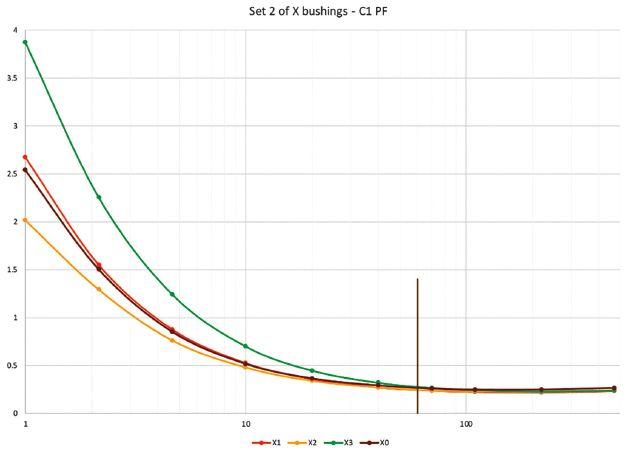
CONCLUSION
Field tests of PF and capacitance of bushings are very valuable in assessing a bushing’s insulation integrity, but these tests are susceptible to measurement errors due to external factors. Following the best practices outlined here will help an individual find the cause of an abnormal reading or ensure those results are an indication of a deteriorated insulation system or an actual failure.
Another important source of measurement error is the temperature dependency of PF, which can be corrected using the ITC method. Alternative test procedures such as NBDFR measurement provide extra information about the condition of the insulation system, thus enabling the user to make a more informed analysis of the results.
REFERENCES
Gill, Paul. Electrical Power Equipment Maintenance and Testing, Second Edition, CRC Press, 2009.
United States Dept. of the Interior Bureau of Reclamation, Facilities Engineering Branch, Denver Colorado. “Testing and Maintenance of High-Voltage Bushings,” August 2000.
Zhang, S. “Analysis of Some Measurement Issues in Bushing Power Factor Tests in the Field,” IEEE Transactions on Power Delivery, Vol. 21, No. 3, July 2006.
Robalino, Diego M. “Accurate Temperature Correction of Dissipation Factor Data for Oil-Impregnated Paper Insulation Bushings: Field Experience,” October 2011.
Megger. “Delta4000 Applications Guide,” 2010.
Werelius, P; Ohlen M; Cheng, J; Robalino, D. “Dielectric Frequency Response Measurements and Dissipation Factor Temperature Dependence,” 2012.
IEEE Std. C57.19.00–2004, General Requirements and Test Procedure for Power Apparatus Bushings
IEEE Std. C57.19.01–2000, IEEE Standard performance Characteristics and Dimensions for Outdoor Apparatus Bushings.
IEEE Std. C57.19.100–2012, IEEE Guide for Application of Power Apparatus Bushings.
IEC 60137, Insulated bushings for alternating voltages above 1000V, Edition 6.0, 2008.
Breazeal, Robert C. “Unlocking the Mysteries of Narrow Band DFR,” NETA World, Fall 2019.
80 • SPRING 2020 BUSHING CONDITION ASSESSMENT AND TROUBLESHOOTING
FEATURE
Figure 10: NBDFR on 4 Low-Voltage Bushings

Daniel Carreño is an Applications Engineer with Megger specializing in transformer testing, batteries, and highvoltage circuit breakers. His previous experience includes working for power transformer manufacturers in the United States and Mexico. Daniel is an IEEEPES member and actively participates in substation equipment condition assessment and applications development. He graduated from Instituto Politécnico Nacional in Mexico City, with a BS in mechatronic engineering.

Abel González Gómez has been an Applications Engineer for Megger, LTD in Markham, Ontario, since 2013. His research areas are analysis operation, control and protection of electric power systems, and the application of artificial intelligence and soft computing techniques. Abel previously worked as an Assistant Professor for the Faculty of Electrical Engineering at the Universidad Central de Las
Villas, Cuba; as a Teletraffic Engineer, Control Engineer, and Head of the Marketing Department for the Cuban Telecommunications Company; as a Professor of marketing for the Universidad Central de Las Villas, Cuba; and as a Design Engineer and Applications Engineer for Arteche Medicion y Tecnologia in Zapopan, Jalisco, Mexico. He received his BS and MS in electrical engineering from the Universidad Central de Las Villas, Cuba.

Volney Naranjo has been with Megger for over eight years as an Application Engineer focusing on power transformers, high-voltage circuit breakers, battery, and power quality testing. He has over 17 years of experience working in the power engineering industry, providing professional services for design, and testing and commissioning of power systems as a Field Engineer and Project Manager. Volney is a member of IEEE-PES. He graduated from the University of Valle in Cali, Colombia, with a BS in electrical engineering.








FEATURE
Independent Electrical Testing and Preventive Maintenance PROFESSIONAL SERVICES 609-890-8300 www.easternhighvoltage.com

















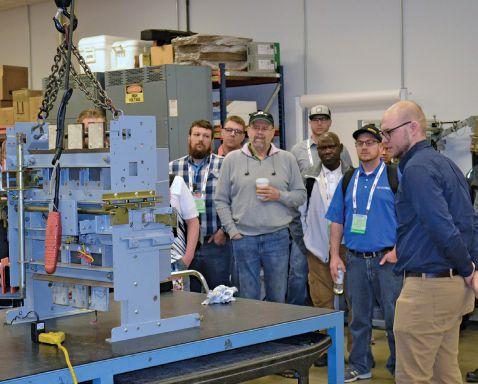

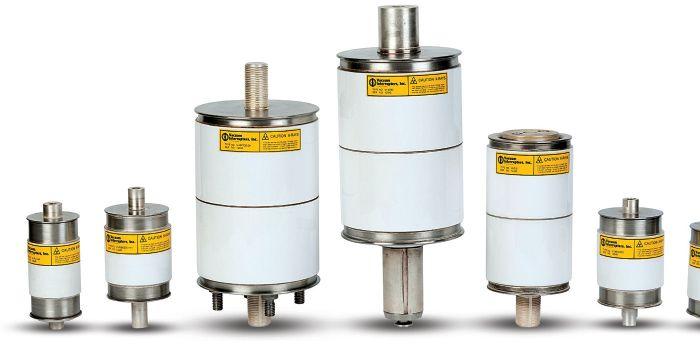

•Rental






Search. Click. Ship. Purchase AEAMC equipment online, anytime! Emergency support 24/7 800-289-2757 Advanced Electrical & Motor Controls 1801 HURD DR. | IRVING, TX 75038 | 972-253-7783 | Sales@AEAMC.com | AEAMC.com 455-B SHEPARD DRIVE | ELGIN, IL 60123 | 224-856-5036 CHICAGO SERVICE CENTER NOW OPEN! Insulated Case Circuit Breakers Molded Case Circuit Breakers Motor Controls & Centers Bolted Pressure Switches Panelboard Switches & Bus Plugs 480 V Distribution Transformers Replacement Parts New Replacement Motor Control Buckets We can provide and repair the following: From a single part to a switchboard lineup, Advanced Electrical & Motor Controls’ inventory of low-voltage insulated case circuit breakers, molded case circuit breakers, motor controls, and custom switchboards are second to none in the U.S. No matter what you need — new, surplus, used, or reconditioned power distribution equipment, testing and repair, or an engineered solution — AEAMC will keep you up and running. In Stock for Emergency Delivery: New Switchboards up to 4000 amps; New Motor Controls No One Knows Low-Voltage Circuit Breakers & Motor Controls Like Advanced Electrical & Motor Controls VISITUSATPOWERTEST 2020, BOOTH 341 Chicago, IL 13765 Beta Road, Farmers Branch, Texas 75244 | 214-442-5877 VacuumInterruptersInc .com | Info@VacuumInterruptersInc.com Learn more at VacuumInterruptersInc.com US PATENT NO. 9,031,795 B1
replacements rated up
3000 A
services
OEM
•Vacuum interrupter
to 38 kV,
•Repair and replacement
for all major
interrupters, including GE, Eaton, CH, Westinghouse, ABB, Siemens, and many more •Pole assemblies, parts, and components
services
obsolete
breakers
•Custom design/manufacture
for
interrupters,
vacuum interrupter replacement services
•Field and in-shop
vacuum breakers available while yours are being serviced We have the world’s largest selection of replacement vacuum interrupters



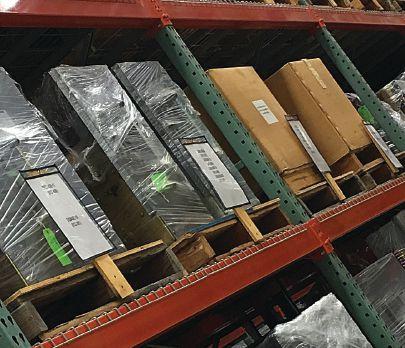


When equipment fails, every minute spent searching for what you need is bad for the bottom line. Our massive inventory of millions of new, surplus and repurposed circuit breakers, switchgear and related products is here for you. We have the expertise to see the big picture, understand your problem and recommend the best solution. Already know exactly what you need? Our website is constantly being updated with products and the online buying process is easy.
Tap into the power of National Switchgear at nationalswitchgear.com or call us today at (800) 322-0149.
CAN’T AFFORD TO WAIT FOR ELECTRICAL
EQUIPMENT?
performance by design sm Visit us at PowerTest Booth 131!










ADVANCED MOISTURE ASSESSMENT
FOR TRANSFORMERS





 BY OLEG ROIZMAN, Intellpower Pty. Ltd, and JAMES J. DUKARM, Delta-X Research Inc.
BY OLEG ROIZMAN, Intellpower Pty. Ltd, and JAMES J. DUKARM, Delta-X Research Inc.
Due to the complex temperature-driven dynamics of the exchange of water between the paper insulation and the oil and the lack of thermal equilibrium in most operating transformers, it is difficult to interpret the water content of oil or paper insulation by looking at individual dissolvedwater measurements or time-series data. Furthermore, increases in water solubility due to aging of oil make it risky to rely on relative saturation calculated from dissolved-water measurements based on the assumption that the oil is like new.
A thermodynamic approach to assessment of water in transformers, starting with the recognition that water solubility is a thermodynamic equilibrium constant, solves these problems. Expressing water solubility in terms of Gibbs energy shows how to estimate water solubility in aged oil accurately and also how to quantify the degree of aging. From the hysteresis of water concentration in oil varying with temperature, it is possible to
84 • SPRING 2020 ADVANCED MOISTURE ASSESSMENT FOR TRANSFORMERS
FEATURE

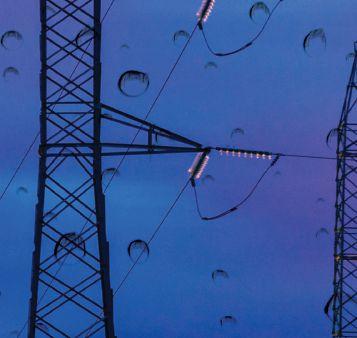






estimate the active water content of insulating paper and to identify transformers whose wetness threatens to lower the oil’s dielectric breakdown voltage or cause the oil to approach 100% water saturation during temperature changes. Throughout this discussion, “paper” refers to thin cellulosic insulation. In a power transformer, most is kraft paper, but some may be pressboard.
WATER CONTENT IN PAPER
A new power transformer is expected to have a water content in paper insulation (WCP) of less than 0.5% by weight. It is filled with mineral oil processed to have less than 10 mg/ kg of water in accordance with IEEE C57.106. To put this information in perspective, a new transformer with 5,000 kg of paper insulation
PHOTO: © ISTOCKPHOTO.COM/PORTFOLIO/JUAN-ENRIQUE
and 20,000 kg of oil would have less than 25 kg of water in the paper and would be filled with oil containing less than 200 g of water.
It is highly desirable to keep WCP below one percent, but since water is a by-product of aging-related deterioration of paper and oil, the insulation in a transformer gradually becomes more moist. Over two or three decades, normal aging can increase the water content of the paper insulation to notebook paper’s natural moisture level of about 4–5%. If there is a leaky gasket or seal or if there is a breather with depleted desiccant, the transformer can breathe in humid air, greatly accelerating the accumulation of water in the oil/paper system. Actually, since the bottom of the transformer is normally cooler than the top, the paper insulation at the bottom
NETAWORLD • 85 ADVANCED MOISTURE ASSESSMENT FOR TRANSFORMERS
FEATURE

% Relative saturation of water in oil, [%RS]
Figure 1: Dielectric Breakdown Voltage
(Relative to Dry Oil) as a Function of Relative Saturation of Water in Oil
of the windings becomes wetter than at the top. At or before the 4% level of WCP, a wellcared-for transformer may be subjected to a dry-out.
Why is water so undesirable in a transformer? Water, oxygen, and high temperatures are important factors in accelerating the degradation of transformer insulation. Water in oxidized transformer oil can degrade paper insulation by hydrolysis. Water vapor bubbles, which are very detrimental to dielectric strength, can form in paper insulation when winding conductor temperature increases sharply if the paper is not extremely dry. Figure 1 shows how the dielectric breakdown voltage of transformer oil decreases as the relative saturation of water in oil increases. All of these negative effects of water in transformers are discussed in detail in Paul Griffin’s paper.
The most common method of tracking water in a transformer with mineral oil insulating liquid — recommended by IEEE C57.106 and IEC 60422:2013 guides — is to collect an oil sample annually and perform Karl Fischer titration to measure WCO, the water concentration in oil in units of mg/kg.
It is considered that relative saturation rS of water in oil is closely related to WCP. Commonly, rS is calculated as a percentage:

SOURCE: ROIZMAN, JANUARY
Here, WCO* is the saturation concentration of water in oil at Kelvin temperature T, which is in turn calculated by means of a well-known formula. Recall that Kelvin temperature is equal to Celsius temperature plus 273.15.


(1)
(2)
In this formula, A and B are experimentally determined coefficients, and T is the Kelvin temperature of the oil. For a common type of new oil, A = 17.08 and B = 3876. From the formula (2), it is evident that the solubility of water in oil increases as T increases. For example, as T increases from 293 K (20° C) to 320 K (46° C), the water saturation concentration WCO* in new oil triples from 47 to 141 mg/kg. Correspondingly, if the transformer oil contains 28 mg/kg of water and the oil temperature decreases rapidly from 320 K to 293 K, rS triples from 20% to 60%.
Unfortunately, in many cases, the WCO measurements (and rS calculated from them) are found to be highly variable from one oil sample to the next and hard to interpret. The IEEE and IEC guides mentioned previously provide water concentration limits of 15 to 35 mg/kg for service-aged oil, depending on the kV rating of the transformer, but because of high or irregular variability, it is difficult to use them for understanding the wetness of a transformer.
There is another problem. It is a bad idea to use the new-oil solubility coefficients for calculating rS in service-aged oil because the result is likely to be wrong. For example, the water solubility WCO* in a 20-year-old transformer could be twice as much as for new oil. In that case, rS calculated using newoil coefficients would be twice as high as the actual relative saturation in the aged oil. It is not practical to do a laboratory determination of the solubility coefficients A and B for every transformer every year, so the poor estimate of rS calculated from Karl Fischer WCO and new-oil coefficients is nevertheless often used.
86 • SPRING 2020
ADVANCED MOISTURE ASSESSMENT FOR TRANSFORMERS FEATURE
1 0.9 0.8 0.7 0.6 0.5 0.4 0.3 0.2
010203040506070
to dry oil), [p.u.]
Dielectric breakdown voltage (relative
2019
Alternatively, as is often the case with online monitoring, rS can be measured directly and then used to calculate:

(3)
which follows from (1) and (2). In this case, WCO* at the point of sampling must be known, which usually means that the sampling point temperature T must be measured along with rS, and the oil’s solubility coefficients A and B also must be known. Unfortunately, some commercially available monitors do not measure T at the sampling point, but calculate WCO from rS at the sampling location with some different temperature using new-oil solubility coefficients.
Th e relative saturation of water changes in response to changes in oil temperature and WCO, which also varies with temperature. Variation of WCO with temperature depends on oil circulation, winding geometry, and many other factors, and is ultimately governed by the kinematics of water adsorption and desorption by the paper insulation. Curves relating WCP to rS or WCO at thermodynamic equilibrium have been published, for example by Oommen (Figure 2), but those curves are not directly useful for moisture assessment in operating transformers, which never reach thermodynamic moisture equilibrium due to load variation, changes in environmental temperature, and temperature gradients within the transformer. Thus, obtaining reasonable estimates of WCP from rS or WCO for tracking wetness of paper and estimating bubble formation temperature is very challenging, especially if the oil is serviceaged and rS is calculated from WCO or vice versa using new-oil solubility coefficients.
As mentioned previously, high rS is undesirable because it reduces the oil’s dielectric breakdown voltage (DBV). One often hears that high rS is dangerous because a temperature drop in the transformer could cause a water emulsion to form in the oil or precipitate liquid water. That is true, but
it is an extreme case. A more general reason for concern about high rS in a transformer is seen in Figure 1. In the previous example, the oil temperature rapidly declined from 320 K to 293 K, and rS increased from 20% to 60% (assuming new oil). According to Figure 1, the increase in rS due to that drop in temperature would result in a drop of DBV to about one-third of its starting value. If DBV at the operating temperature is 60 kV, it drops to about 20 kV as a result of the increase in rS. However, if the oil is aged and WCO* is unknown, it is not useful to estimate the change in DBV with rS that is calculated from WCO by assuming that the oil is like new.
In summary, almost all of the “badness” of water in a transformer happens when paper insulation is too moist. Temperature variation that may occur during operation can give rise to water vapor bubbles in the paper or spiking of rS in the oil, either of which reduces DBV and increases the danger of transformer failure. High WCP, together with acids in oxidized oil, can accelerate the degradation of paper insulation. Th e difficulty of estimating water solubility WCO* in service-aged oil is a major obstacle to accurate transformer moisture assessment. Furthermore, the lack of thermodynamic equilibrium in an operating transformer

NETAWORLD • 87
ADVANCED MOISTURE ASSESSMENT FOR TRANSFORMERS FEATURE
10 8 6 4 2 50100150200 Percent Water in Paper PPM Moisture in Oil 100 90 70 60 50 40 30 20 10 0 80 Temperature, ºC 0 0
Figure 2: Equilibrium Isotherms of WCP vs. WCO SOURCE: OOMMEN 2003

makes equilibrium charts inappropriate for estimating WCP from rS or WCO.
With online monitoring of rS and T, however, it is possible to estimate WCO*. Comprehensive transformer moisture assessment can then be accomplished by graphically visualizing the dynamics of WCO, rS, and T.
WATER SOLUBILITY AND OIL QUALITY
Often incorrectly referred to as an Arrhenius formula, the solubility formula (2) is in fact a thermodynamic equation. The water saturation concentration WCO* is a thermodynamic equilibrium constant for the process of water dissolving in oil, and solubility coefficients A and B are proportional to the entropy and the enthalpy of water in oil solution. To see that, recall that the Gibbs energy of any isothermal chemical process is the “useful” energy available for driving the process to equilibrium. It is defined by the equation:

(4)
where ΔG is the change in Gibbs energy during the reaction, ΔH is the change in enthalpy, ΔS is the change in entropy, and T is the Kelvin temperature at which the process runs. Another thermodynamic equation relates the Gibbs energy of an isothermal chemical process to an equilibrium constant keq at temperature T:


enthalpy change coefficient ΔH/R. There is an implicit assumption in (2) and (6) that A and B (i.e., ΔS and ΔH) are the same for all T, which for water dissolution in oil is approximately true over a reasonable range of working temperatures T.
In an operating transformer, there is usually a significant temperature differential between top oil and bottom oil. If rS and T are monitored at the top inlet and the bottom outlet of a radiator as in Figure 3, it is possible to calculate WCO at the top and the bottom by applying formula (3). The oil coming out of the radiator at the bottom has the same water content as the oil going in at the top, so equate WCO calculated for top and bottom: (7)

Equation (7) can be solved for B: (8)

Using the data shown in Figure 3, for example: (9)

ppm; 60 C; 11%
(5)
where R is the ideal gas constant 8.3145 J K-1 mol-1. Solving (5) for ln(keq), identifying keq with WCO*, and substituting the right side of (4) for ΔG yields the linear Van ‘t Hoff equation for WCO* with independent variable 1/T:

(6)
Comparing (6) with (2), it is clear that solubility coefficient A is the entropy change term ΔS/R, and solubility coefficient B is the
25 ppm; 40 C; 23%
SOURCE: ROIZMAN
88 • SPRING 2020
ADVANCED MOISTURE ASSESSMENT FOR TRANSFORMERS
FEATURE
Figure 3: Water Distribution in an Operating Transformer with Moisture Monitoring at Top and Bottom
25
Tbot; %RSbot
Ttop; %RStop
Windings
Pressboard barrier
JULY
2019
A moisture assessment of 20 transformers included laboratory determination of solubility coefficients A and B for the oil in each transformer as well as measuring the conventional oil quality parameters such as acid number, interfacial tension, and color. Oil quality results are shown in Table 1. When the points (A, B) for all the studied transformers are plotted on a graph, the regression line:
A = 6.8444 + 0.0026 B (10)
fits the points well, demonstrating a linear relationship between A and B that holds for a range of oil conditions including new oil and severely aged oil. Formulas (8) and (10) jointly represent a practical solution to the problem of determining WCO* for any transformer’s oil based on online moisture monitoring data. To complete the example based on Figure 3, substitute the value of B calculated in (9) into formula (10), obtaining A = 16.84.
Aging of transformer oil consists mainly of slow oxidation creating carbon dioxide and low molecular weight carboxylic acids. The primary chemical indicator of oil aging is the acid number. Water is more soluble in aged oil than in new oil because the carboxylic acid molecules, like water molecules, are polar. Thus, the change in water solubility relative to new oil is also a good indicator of oil aging. Table 1 shows how well the B solubility coefficient is related to oil quality.
Using empirically determined constant values of Bmax = 3900 and Bmin = 3100 representing a realistically wide range of mineral transformer oil conditions from new to severely oxidized, a simple interpolation formula defines an oil quality index (OQI) ranging from 0 (very bad) to 1 (very good), showing where a particular transformer’s oil lies on the oil quality spectrum:

(11)
OQI values calculated for the example transformers are displayed in Table 1. For the transformer in Figure 3 whose solubility coeffi cients were calculated above, OQI is
SOURCE: ROIZMAN OCT 2019
0.93, indicating that the oil is in nearly new condition.
While OQI can be used for ranking transformers according to the apparent condition of their oil, it is especially useful for detecting and assessing a worsening trend in the oil condition of any transformer, such as might occur when the oxidation inhibitor is depleted. This method of assessing relative oil quality is based on completely general principles and can be applied (with suitable choices of Bmax and Bmin) to any insulating liquid, such as natural and synthetic esters, for which deterioration results in the accumulation of polar degradation by-products.
WCO HYSTERESIS AND THE MOISTURE CLOUD
It is conventional to plot online monitoring data in time-series format as shown in Figure 4, where it is evident that WCO and T appear to vary together in time. WCO here is calculated from measured rS using the solubility coeffi cients for this transformer’s oil. A time-series graph for rS would show that rS is also somehow related to T but in a complex way. This time-series view of the transformer’s bottom-oil data does not appear

NETAWORLD • 89 ADVANCED MOISTURE ASSESSMENT FOR TRANSFORMERS FEATURE Table 1: Water Solubility and Oil Quality for 12 Transformers TransformerCoeff ACoeff BAcidityIFTColorOQI (new)17.0803876.00.01538.01.00.970 116.6473703.80.04023.21.50.755 216.5653687.50.05021.41.10.734 316.5543628.80.05021.22.00.661 416.5363614.80.04023.32.00.644 516.4453603.20.03023.61.40.629 616.0953567.80.01027.31.00.585 716.3113386.10.12017.83.50.358 815.7963373.50.15018.23.00.342 915.8693363.30.13018.13.00.329 1015.6983348.70.15018.84.50.311 1115.2143213.70.11018.32.50.142 1215.2713161.80.23018.44.50.077

to have much predictive value and is not very helpful for deciding how wet the transformer may be. The amplitude of vertical movement of WCO and rS is obviously limited by WCP. In a very dry transformer, there is not enough water in the oil/paper system to support large temperature-driven variation in WCO or rS. High WCP does not, however, guarantee that the average WCO level will be high. In the case illustrated by Figure 4, WCO was in the below 30 mg/kg IEC “good” range for all but a few hours when WCO spiked to almost 60 mg/kg with a temperature rise. With annual manual sampling, that event almost certainly would have been missed, and the transformer might have avoided notice as possibly being wet.
In Figure 5, the bottom-oil data from Figure 4 is plotted on a WCO versus T chart, and the graph (blue dots) is the superposition of many diurnal loops of various sizes, taking the overall shape of a cloud. The loops illustrate hysteresis in the temperature-driven adsorption and desorption of water from paper insulation. When the transformer is heating up, water comes off the paper into the oil much faster than it can be adsorbed by the paper from the oil when the transformer is cooling down.
The colored background in Figure 5 is derived from the WCO vs. WCP equilibrium isotherms of Figure 2, where WCO is corrected using the solubility coefficients of this transformer’s oil, which are calculated from the moisture monitoring data by means of (8) and (10). The boundaries of the color zones in Figure 5 are contours of equal WCP at thermodynamic equilibrium. The green zone is bounded above by the 1% WCP contour, the yellow zone by the 2% contour, the orange zone by the 3% contour. The red zone includes all WCP levels above 3%. The light-colored zone above red is bounded below by the 100% rS contour, where plotting rS on the WCO vs. T chart also requires use of the oil’s solubility coefficients.
The light-colored rectangle at the lower left marks the zone below 50° C and 20 mg/kg WCO. Due to the very high time constant for water diffusion across thin pressboard under those conditions, the diagnostic significance of the data in this zone is more uncertain.
The black dotted curve tangent to the lower part of the cloud is the 3.5% WCP contour, indicating the level of moisture in the paper insulation that is available for exchange with

90 • SPRING 2020 ADVANCED MOISTURE ASSESSMENT FOR TRANSFORMERS
FEATURE
temperature IEC 60422 Poor > 40 ppm Fair 30-40 ppm Good < 30 ppm 70 60 50 40 30 20 10 0 70 60 50 40 30 20 10 0 ppm only 4% time over limit 1/21/41/61/81/101/121/141/161/181/201/22 1/21/41/61/81/101/121/141/161/181/201/22
Figure 4: Monitoring Bottom-Oil Temperature and WCO in a Transformer for 3 Weeks SOURCE: ROIZMAN JULY 2019
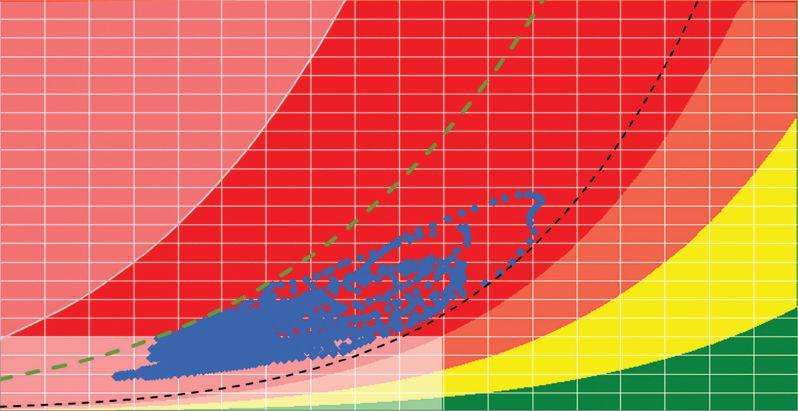
the oil. Th e maximum rS attained during temperature cycling is indicated by the green dashed curve (see arrow) tangent to the upper part of the cloud, which is the 44% rS contour. That maximum rS value can be related to the DBV vs rS curve (Figure 1) to see that DBV is being severely compromised, going down to about 35% of what it would be in dry oil during the high-rS part of the diurnal temperature cycle.
OFFLINE MOISTURE ASSESSMENT
What can be done for a transformer that doesn’t have online water-in-oil monitoring?
The solubility coefficients for the transformer’s oil can be determined for an oil sample by the laboratory, or a rough guess for the solubility coefficients can be made by, for example, comparing the transformer’s latest laboratory oil quality results with Table 1. A rough estimate of the placement of the bottom part of the moisture cloud can be obtained by taking two bottom-oil samples, one at a low oil temperature and the other at a high oil temperature, while the transformer’s temperature is increasing during a single cycle. For both samples, record the temperature
T of the sampled oil and get a Karl Fischer determination of WCO. Plot the line on a WCO vs. T chart. Choose several points on that line and use Figure 2 to estimate the equilibrium value of WCP at each point. The highest of those estimates indicates the approximate wetness of the transformer. To assign a color value, use the 1%, 2%, 3% scheme described earlier for defining the color zones on the moisture cloud chart.
Note that one of the samples for offl ine moisture assessment might need to be collected at a very inconvenient time, such as the middle of the night, to achieve good temperature separation. However, any compromise where either sample is taken when the transformer’s temperature is decreasing or the two samples are not taken during the same temperature cycle is likely to produce a line that does not correctly estimate the wetness of the transformer.
CONCLUSION
Periodic moisture assessment is highly advisable for power transformers because excessive moisture in oil and paper insulation can accelerate the degradation of the oil and
NETAWORLD • 91 ADVANCED MOISTURE ASSESSMENT FOR TRANSFORMERS FEATURE
JULY 2019 bot cloud 3.50% 44% 100% RS WCO, ppm 110 100 90 80 70 60 50 40 30 20 10 0 0102030405060708090 T, deg C
SOURCE: ROIZMAN
Figure 5: Moisture Cloud Chart

paper and compromise the dielectric strength of the oil by reaching high rS levels during temperature cycling and of the paper by bubble formation in moist paper during sharp temperature rises. Although water accumulates very slowly due to normal paper and oil aging, leaks or other ingress of moist air can lead to an unexpected rapid rise in the transformer’s water content. Early detection of a high level or rate of increase of WCP can prevent trouble or rapid deterioration.
Moisture assessment by comparing annual or semi-annual WCO measurements or rS levels calculated from those measurements with fixed limits is ineffective due to two fundamental problems:
• First, water solubility increases as the oil ages, affecting the direct interpretation of WCO and rS and making the calculation of rS from WCO or vice versa inaccurate.
• Second, for a true understanding of the moisture state of the transformer, it is necessary to take into account the complex temperature-driven dynamics of water exchange between the paper insulation and the oil. Isolated observations are largely uninformative.
A method for determining water solubility in oil from online moisture monitoring data based on the thermodynamics of water solubility in oil provides an oil-quality index and the means to assess the moisture condition of the transformer accurately. Visualizing the cycling of WCO due to temperature variation graphically as a cloud provides a way to assess key moisture parameters such as the wetness of top- and bottom-winding insulation paper, how close the transformer is coming to water saturation in the oil, and whether or not the dielectric breakdown voltage of the oil is being compromised.
REFERENCES
IEEE Std. C57.106, IEEE Guide for Acceptance and Maintenance of Insulating Mineral Oil in Electrical Equipment, 2015.
International Electrotechnical Commission, IEC 60422, Mineral insulating oils in electrical equipment – Supervision and maintenance guidance, 2013.
ASTM International, ASTM D1533-12, Standard Test Method for Water in Insulating Liquids by Coulometric Karl Fischer Titration, 2012.
International Electrotechnical Commission, IEC 60814, Insulating liquids – Oil-impregnated paper and pressboard – Determination of water by automatic coulometric Karl Fischer titration, Second Edition, 1997.
P. J. Griffin, “Water in Transformers – So What!” National Grid Conference on Condition Monitoring in High-Voltage Substations, Dorling, 1995.
T.V. Oommen. “Moisture Equilibrium Curves — Use and Misuse,” in Proceedings of International Conference of Doble Clients, Boston, 2003.
CIGRE Task Force D1.01.10, Ageing of cellulose in mineral-oil insulated transformers, Technical Brochure 323, October 2007.
CIGRE Working Group A2.30, Moisture equilibrium and moisture migration within transformer insulation systems, Technical Brochure 349, 2008.
O. Roizman and C. Feely, “Continuous Online Oil Quality Monitoring,” in Proceedings of TechCon Asia Pacific, 2016.
O. Roizman, “Water in Transformers: All You Wanted to Know About It But Were Afraid to Ask,” Transformers Magazine, Vol 6, No 1, January 2019.
O. Roizman, “Moisture Equilibrium in Transformer Insulation Systems: Mirage or Reality? Part 2,” Transformers Magazine, Vol 6, No 3, July 2019.
O. Roizman, “How Water Affects Oil Quality and Helps Monitor its Aging,” Transformers Magazine, Vol 6, No 4, Oct 2019.

92 • SPRING 2020 ADVANCED MOISTURE ASSESSMENT FOR TRANSFORMERS
FEATURE
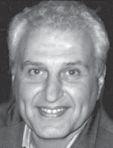
Oleg Roizman, PhD, is a founder and Managing Director of Intellpower Pty. Ltd. in Australia, an engineering consulting/ services company with emphasis on continuous online monitoring and power transformer diagnostics. Prior to forming IntellPower in 2000, Oleg was employed by Monash University in Australia as an R&D Principal Investigator, where he was involved in developing analytics in the areas of power system stability, power quality, monitoring, and diagnostics of electrical plants. Oleg is an inventor, speaker, author of many technical papers, and an active member of various working groups within IEEE PES Transformers Committee and CIGRE. He received a PhD in electrical and electronics engineering from Novosibirsk State Technical University in Novosibirsk, Russia.

James J. Dukarm, PhD, is the founder and Principal Scientist of Delta-X Research Inc. in Victoria, BC, Canada. A member of ASTM and CIGRE and a Life Member of IEEE, James has been actively involved in the development and revision of IEEE Transformers Committee DGA guides C57.104, C57.139, and C57.155. He has co-authored several papers in IEEE journals and NETA World and has presented numerous times at industry conferences. James received an MS in mathematics from St. Mary’s University, San Antonio, TX, and a PhD. in mathematics from Simon Fraser University, Burnaby, BC, Canada.
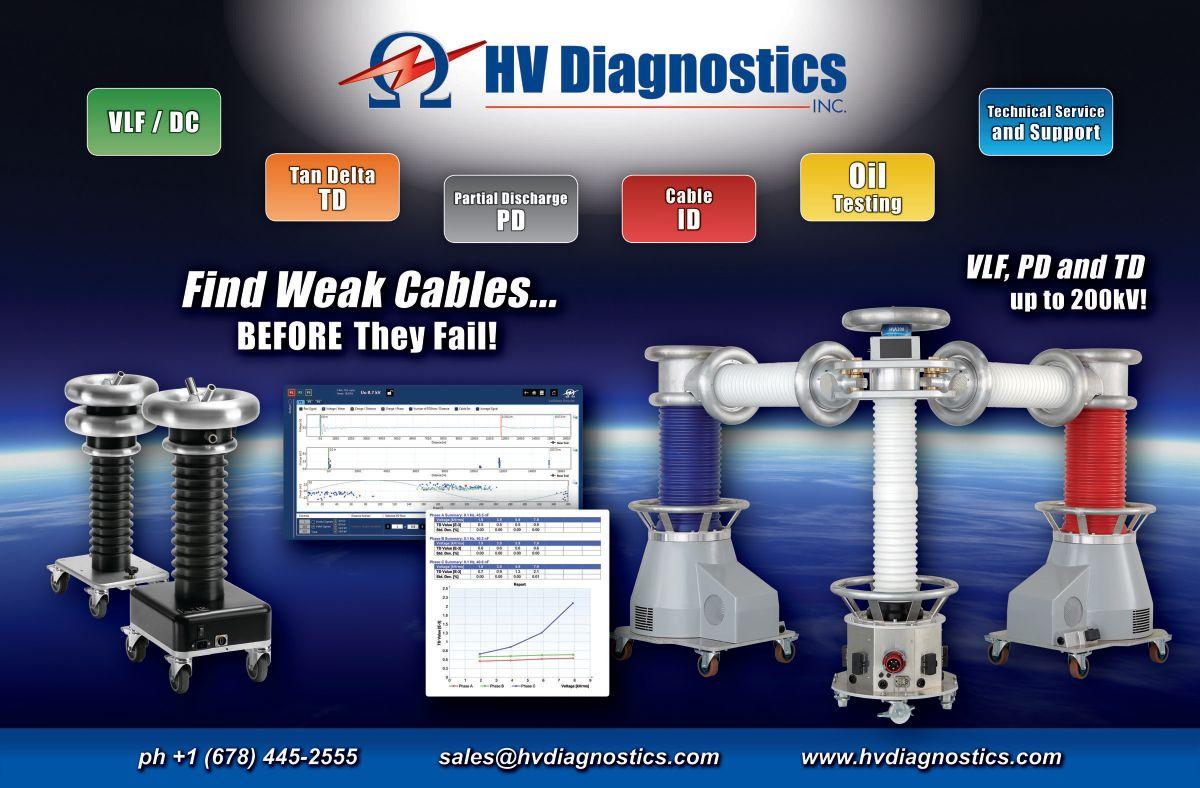
FEATURE






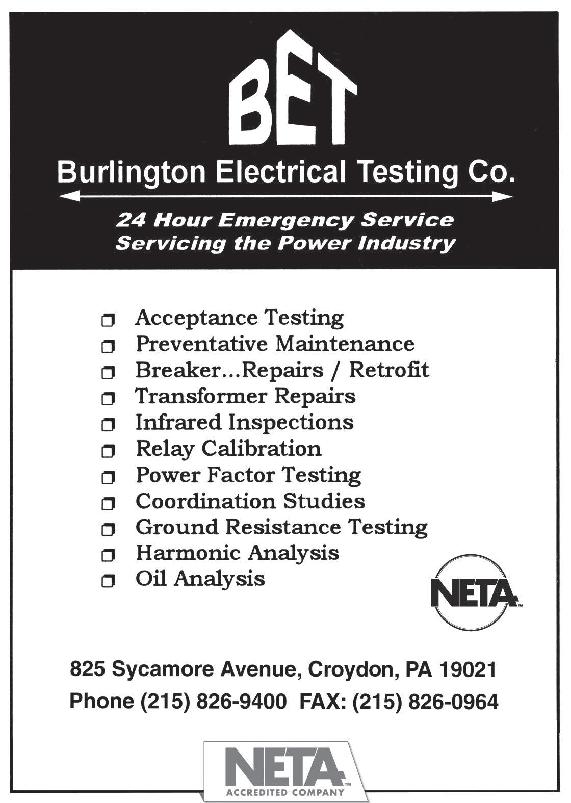





THE PREMIER ELECTRICAL MAINTENANCE AND SAFETY CONFERENCE
Promote your products and services to a valuable audience of key industry decision makers while increasing brand visibility.
MARCH 8 – 12, 2021
CREEK
View available sponsorship items at powertest.org

Take advantage of print and media exposure to your target market before, during, and after the conference by customizing your sponsorship package to suit your needs.

POWERTEST.ORG
ROSEN SHINGLE
ORLANDO, FLORIDA
888.300.6382 HOSTED BY



IS YOUR ARC-IN-OIL LOAD TAP CHANGER DUE FOR MAINTENANCE?
BY ROBERT T. RASOR, SDMyers
A load tap changer (LTC) failure can be catastrophic to the electric power system. The load tap changer (LTC) is one of the few moving parts of a transformer, and this makes it more susceptible to routine wear and tear. When an LTC fails, it may take the transformer with it. Based on our experience, we estimate that about 40 percent of LTC-equipped transformer failures are caused by failure of the LTC. That’s why it is so important to protect this vulnerable component of your electrical system with regular inspections and maintenance.
An LTC inspection includes a control check, draining the oil, a mechanical operation check, flushing and cleaning the oil, and examining the condition of arcing tips and contact corrosion. The LTC should be inspected even if the oil tests on a transformer and LTC are good.
Two main types of LTCs exist: arc-in-oil and vacuum interrupter/bottle. This article focuses on arc-in-oil LTCs, as there are many in the field. Most new transformers are built with vacuum bottle LTCs.
Inspection best practices include when to conduct one, inspection requirements before the scheduled maintenance, and what the field service technicians will do once they are on site.
INSPECTION FREQUENCY
LTC services are either time-based or conditionbased. Time-based servicing is centered around a specific interval of time. As an industry standard, IEEE recommends every three to fi ve years. Other transformer owners may follow the manufacturer’s recommendations or a predetermined number of operations. For example, some LTCs require inspection every 50,000 operations. The frequency varies based on individual usage rates.
Condition-based servicing considers the results of the oil and dissolved gas analysis (DGA) tests in determining when to conduct maintenance. It is critical to remember that even if oil and
96 • SPRING 2020 IS YOUR ARC-IN-OIL LOAD TAP CHANGER DUE FOR MAINTENANCE?
INDUSTRY TOPICS
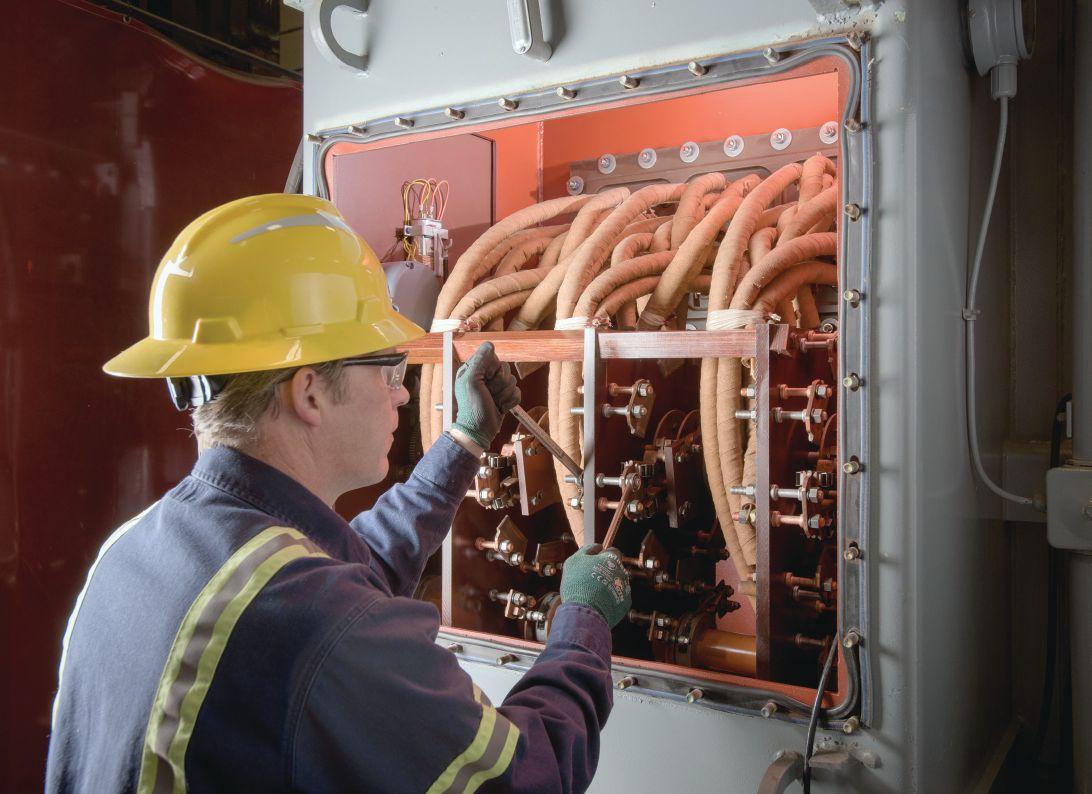
Technician Inspecting Mechanism and Connections
DGA results do not detect any fault conditions, physical inspections are still needed to know the true condition of the LTC’s mechanical parts.
Best practices:
• Perform time-based inspections per the OEM’s recommendation and perform inspections with information provided by fluid analysis. Combined, these will provide a more effective preventative maintenance program.
• Perform both tests regularly. The information provided by fluid analysis builds a more effective physical preventativemaintenance program.
INITIAL EVALUATION
Prior to the site visit, some background information is necessary for an accurate proposal from the LTC-inspection provider. Information such as when the LTC was last serviced, what was done, and the results (Figure 1) of the most recent oil analysis (DGA and any filming or particle count data) should be reviewed and a recommendation provided.
The oil from the main transformer tank and the oil from the LTC require different oil tests. Along with DGA, it is important to conduct moisture analysis as well as particle count and filming compound analysis of the LTC fluid.
Photos allow the tech team to identify the specific manufacturer and model of the LTC.



NETAWORLD • 97 IS YOUR ARC-IN-OIL LOAD TAP CHANGER DUE FOR MAINTENANCE?
INDUSTRY TOPICS


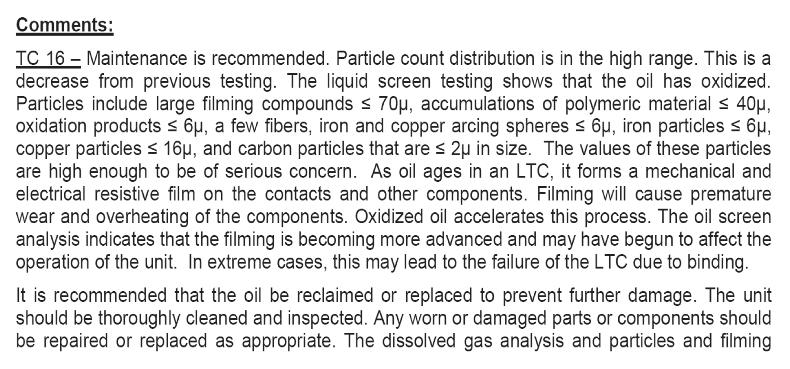

Figure 1: The mechanical nature of the LTC warrants regular physical inspections, in addition to oil and DGA testing. These inspections can be time-based or condition-based.
Some LTCs can only be serviced by the original manufacturer. If the LTC can be serviced, photos help define the current condition of the tank and the tank’s surroundings so the technician can properly prepare for the site visit.
LTC servicing requires a planned outage. If the LTC is not on a double-ended substation,

Inspecting and Cleaning Contacts

it is best to couple the service with other maintenance tasks that require a shutdown. LTC servicing generally requires a full day to complete. Depending on the severity of work needed, it can vary by a couple of days. Wear parts, such as contacts, typically can be obtained within a day for replacement. Some parts may require a return trip to replace.
PHYSICAL INSPECTION
The field service team should conduct a comprehensive inspection by using steps that follow the industry’s best practices for determining the health of the LTC.
Controls and Electrical Functionality
First, the technician verifies the functionality of the LTC controls and performs an electrical check before the oil is drained, especially on LTCs that have a charging spring. The technician ensures the position indicator is working properly, the limit switches are operational, and the LTC operates through the entire range of positions and stops on position.
98 • SPRING 2020
IS YOUR ARC-IN-OIL LOAD TAP CHANGER DUE FOR MAINTENANCE? INDUSTRY TOPICS
This portion of the inspection also includes checking the counter functionality, looking for signs of overheating in the control cabinet, hand cranking the safety interlock, and ensuring the control cabinet heater that controls humidity is working properly.
Tank Draining and Cleaning
To look inside the tank of the LTC, the technician drains the oil. The results of the initial testing and conditions found during the site visit determine whether the existing oil needs to be processed or replaced.
Next, the compartment is flushed with transformer oil and wiped clean to remove carbon and clean the components, which allows the technician a better look at the LTC’s overall condition.
Examining Consumable Components
Next, the technician checks the condition of the arcing tips on the stationary contacts and erosion on the main moving contacts. An LTC doesn’t typically run through the entire range of positions during normal operation, which means some contacts may not be engaged very often, if at all. These components are cleaned with an abrasive pad to remove filming, coking, or carbon.
If adjustments and cleaning don’t repair the functionality or if there is excessive pitting, filming, or wear, these parts will be recommended for replacement. The condition of the contacts will be included in the final report.
Manual Cranking
As the inspection continues, the LTC is manually cranked. This identifies issues with binding and areas that aren’t in proper working order, such as loose pins and cable connections on the mechanism. This also allows the technician to verify the timing and ensure proper contact alignment.

Detecting Leaks
Removing the oil enables the technician to inspect the barrier panel/board that separates the main transformer tank from the LTC tank. The pressure difference between the oil in the transformer tank and the drained LTC tank can make it easier to identify damage, weaknesses, or leakage.
Replacing the barrier panel is an extensive undertaking that requires a significant period of downtime. It includes draining the transformer tank and the LTC tank, disconnecting the LTC, replacing the panel, reconnecting the LTC to the transformer, and refilling both tanks, which usually involves vacuum filling. Understanding the barrier panel’s poor condition and actively replacing it during a scheduled downtime is not uncommon.
Replacing Gaskets and Oil
The gasket around the exterior door of the tank is usually replaced even if there is no sign of



NETAWORLD • 99
IS YOUR ARC-IN-OIL LOAD TAP CHANGER DUE FOR MAINTENANCE? INDUSTRY TOPICS
Wiping Down Filming and Carbon Deposits

INDUSTRY TOPICS
a leak. After the technician seals the door, the tank is filled with new oil and a sample of the oil is drawn to establish the new baseline for future tests. The only time a technician returns the original processed oil to the tank is if the oil has minimal carbon present. That final determination is made on site.
TESTING
After the tank is refilled, the field technician performs a dielectric test of the fluid as well as electrical tests. The ASTM D1816 spherical disk test is too sensitive for this purpose. Instead, the ASTM D877 flat disk method is the most accurate for LTC oil and meets the IEEE C57.106 standard for testing. Electrical testing typically is done when intrusive repairs have been made and includes transformer turns ratio (TTR) and winding resistance tests.


CONCLUSION
Transformer performance depends upon optimal functioning from all parts of the system, including the LTC. Due to the LTC’s mechanical nature, regularly scheduled maintenance conducted by skilled field technicians is critical to avoiding unplanned outages. Along with oil testing and analysis, regular servicing of the LTC ensures corrective steps are taken before it becomes a legitimate threat to your operation.

Robert T. Rasor is Director of Transformer Services at SDMyers, where he has been a member of the engineering team for 41 years. Robert has worked in several positions from a product design and field commissioning engineer to his current role directing field services, operations, and plant management. He is active in technical societies including IEEE. Bob is the SDMyers Technical Director.

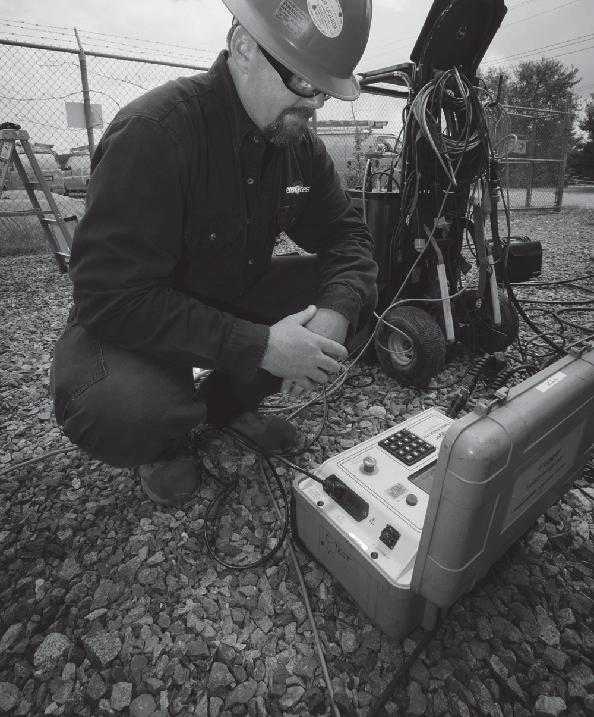

Accredited Company 204 Gale Lane Kennett Square, PA 19348 484.731.0200 enerGtest.com Serving clients in Pennsylvania, Delaware, New Jersey, Maryland, Washington, DC and New England. We deliver optimum system reliability and performance while reducing the chances of costly unplanned power outages. Whether you need acceptance ener es testing or preventive maintenance, depend on EnerGTest to keep the power on. Reliable Power System Solutions









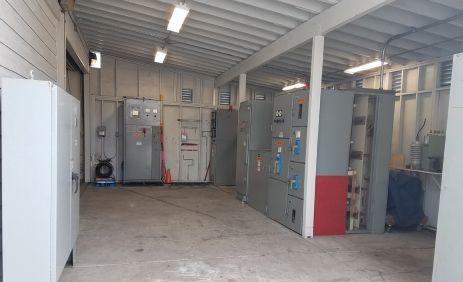





ENGINEERING SERVICES • TECHNICAL SERVICES • COMMISSIONING Protection Systems Design, Electro-Mechanical & Microprocessor Relay Testing (310) 816-3130 131 W F Street Wilmington, CA 90744 Los Angeles Area | | www.youtube.com/tdeinc2 www. twitter.com/tdeinc www.facebook.com/tdeinc www.linkedin.com/company/tony-demaria-electric MANY COURSES ARE ELIGIBLE TO EARN NETA CONTINUING TECHNICAL DEVELOPMENT CREDITS (CTDC’S) CA LICENSE #315448 “Safety is 99.9% common sense...” Anthony F. Demaria Sr. “ Anthony F. Demaria Jr. COMPLETE HANDS-ON TRAINING SUBSTATION CELEBRATINGOVER Demaria Family QUALITY SERVICE!



A RELIABLE PLANT IS A SAFE PLANT
BY ALAN M. ROSS, SDMyers, LLC
If you ask anyone in a plant environment who is responsible for safety, the answer will almost always be “Everyone.” If you ask the same question about reliability, however, the response is quite different. You’ll see finger pointing, uncertainty, and an alarmingly consistent response of “Someone else.”
This needs to change. The answer needs to be as clear for reliability as it is for safety: “Everyone.”
Why must everyone take ownership of reliability? Because we have been able to prove that a reliable plant is a safe plant. A reliable plant is also a highly maintained plant with lower maintenance costs. A reliable plant is also a productive plant. No matter which way you look at it, reliability matters, and it positively impacts every major key performance indicator (KPI) — none more so than safety.
Unreliable industrial plants can be dangerous places for maintenance and testing workers. Terrence O’Hanlon, CEO of ReliabilityWeb, offered a statistic during a presentation at the Electric Power Reliability Summit in May 2018: The number of deaths of maintenance and testing workers in the US is almost 10 times greater than the number of deaths of first responders such as police officers and firefighters.
This statistic should alarm the NETA professional who works in dangerous environments. First responders are men and women who have signed up for an inherently dangerous assignment and who will willingly run into unsafe situations. Thank goodness for them and their courage. The testing technician or the maintenance technician, however, did not sign up for that kind of risk. These techs are part of the makeup of a reliable system, with the NETA professional in the highrisk category, especially when it comes to electrical system testing.
If we make reliability a major function of everyone’s role and responsibility, we enhance the safety of that plant or system. NETA can play a more significant role in the reliability of electrical assets, thereby increasing safety. I am not, of course, proposing that we downgrade the emphasis on safety. Quite the contrary; we should increase that emphasis by tying it to the reliability of the assets and systems we manage.
102 • SPRING 2020 A RELIABLE PLANT IS A SAFE PLANT
ADVANCEMENTS IN INDUSTRY
ADVANCEMENTS


DISASTER HAPPENS
Two familiar and tragic examples of facilities that were not well maintained (and were certainly not considered highly reliable) are plants that were, ironically, in the process of receiving safety awards. First, a blowout of a wellhead on British Petroleum’s Deepwater Horizon offshore oil drilling unit in 2010 resulted in the death of 11 people, with 17 more injured. A second explosion at BP’s Texas City Refinery complex resulted in the deaths of 25 workers and injured 180 more. Texas City Refinery was celebrating a safety award the day of their disaster, and on the day of the Deepwater Horizon disaster, two vice presidents were on the platform presenting a safety award.
These two large-scale and highly publicized disasters demonstrate, through tragedy and irony, that the reliability of a facility must
become everyone’s responsibility if we are to really preach safety. I’m sure many smaller incidents never become public knowledge.
THE SAFETY-RELIABILITY MINDSET
Let’s take a more positive look at the correlation between reliability and safety and consider what is required for a safety-reliability mindset. This mindset will require that we:
• Install reliability policies that mirror safety policies and ensure they are enforced. Policies are only as good as the adherence or accountability system we put in place to see they are followed.
• Secure executive sponsorship to make reliability a corporate priority. When you look at the most effective change-management approaches —


NETAWORLD • 103 A RELIABLE PLANT IS A SAFE PLANT
IN INDUSTRY
PHOTO: © ISTOCKPHOTO.COM/PORTFOLIO/PICHITSTOCKER

ADVANCEMENTS IN INDUSTRY
top-down, bottom-up, or mid-level management initiated — it is clear that the implementation of a safety culture is a top-down approach. Expect the same requirement for reliability. It must be sponsored at the executive level, as high as the CEO if possible. The entire company must get behind it. It will not succeed if it is a bottom-up or mid-level management initiative.
• Pull reliability out of the maintenance mindset. Reliability is to maintenance what safety is to personal protective equipment (PPE). Safety includes PPE. Reliability will include maintenance, not the other way around.


• Anticipate resistance to change. Even with executive sponsorship, this reliability initiative will be hard. It involves hardwired ways of doing things. It involves people who do not see the need or potential gain from change, and it requires a significant reallocation of resources.
MAKE IT WORTHWHILE
How do we know adopting this mindset is worthwhile? We first must decide how we will measure reliability. Two asset measurements are typically used:
• Asset utilization (AU) is the percentage of time an asset is actually utilized over the course of a year. The maximum number of hours in a year that an asset can be utilized is 8,760 (with more, of course, for leap years). AU is considered an excellent metric for the reliability of a plant.
• Overall equipment effectiveness (OEE) also measures reliability by using planned production time as the base to determine how much of that planned production is actually utilized.
There is a direct correlation between a high AU or OEE score and reduced safety incidents. Ron Moore, one of the founders of the reliability movement, surveyed several companies for more
than four years. At the facilities he surveyed, plants that showed the highest AU or OEE were also the safest. Safety, however, was not the only benefit. They were also the most productive, the least costly to maintain, and had the fewest environmental incidents when compared to facilities with lower AU or OEE scores.
With all those positives in favor of reliability, how can it not be everyone’s responsibility?
RELIABILITY LEADERSHIP
So who should take the lead on this effort? We know a safety manager cannot make the plant safe. He or she supports that endeavor with tools, training, and facilitation, and reinforces it with metrics. Likewise, a reliability leader cannot make the plant reliable. He or she also supports that endeavor with tools, training, facilitation, and metrics. And therein lies the problem: We don’t really have all the tools, training, facilitation, and reinforcement metrics in place when it comes to reliability.
If we get executive sponsorship, we can create reliability councils — modeled on safety councils — that include a broad section of the plant or facility personnel together to work on it. Professional reliability organizations like the Society of Maintenance and Reliability Professionals (SMRP), ReliabilityWeb, and the International Maintenance Conference (IMC) have developed great tools and support for these types of initiatives — but it all starts with executive sponsorship.
Solid reliability practices can lead to safer conditions. Conversely, poor reliability practices can lead to much more unsafe conditions. For example, a recently updated NFPA 70E regulation on arc fl ash safety brought conflicting and often confusing information on when it is safe to test cabinet transformers. One company concluded that cabinet transformers should never be chemically or electrically tested under any conditions. That better-safe-than-sorry mindset might sound reasonable, but failing to test
104 • SPRING 2020
A RELIABLE PLANT IS A SAFE PLANT
equipment can only lead to decreased reliability and, ultimately, decreased safety.
MAKE A DIFFERENCE BY MAKING IT MATTER
Organizational commitment to reliability can have a secondary positive impact. Stephen R. Covey, author of The 8th Habit, referred to a Harris Interactive Research study that cited the following insights into employee engagement:
• 37% of employees had a clear understanding of what the organization was trying to achieve.
• 20% were enthusiastic about organizational goals.
• 20% saw a clear connection between their tasks and organizational goals.
• 15% felt the organization enabled them to achieve their goals.
• 15% felt they were in a high-trust environment.
• 10% felt their organization held people accountable.
• 13% felt there were high-trust, highly cooperative working relationships with other groups or departments.
If implemented as just another flavor-of-themonth by executives, any reliability initiative will just add to these terrible outcomes. But by attaching reliability to safety, we might be able to improve the results. Why? Safety is ultimately about individual behaviors and attitudes. When any employee makes the connection between what they do and how it aligns with the goals of the organization, we can create a lot of energy and excitement. This is what is needed for a reliability-safety initiative.
OSHA AND ALL OTHERS
Recently, the Society of Maintenance & Reliability Professionals (SMRP) was announced as a new OSHA Alliance Partner, which is a significant event for both organizations. The
ADVANCEMENTS IN INDUSTRY
strategic initiatives of that Alliance — beginning the integration of reliability and maintenance best practices and the body of knowledge (BoK) — are being re-examined from an OSHA perspective. NETA can also play a role in that partnership as we continue to understand how safety and reliability can work together.
What will it take to create an organizational excellence strategy for the integration of safety and reliability? Let’s consider that safety has specific standards and requirements for reporting. OSHA and state safety organizations have brought much clarity to safety reporting. There are specific requirements/programs for operational excellence, such as Lean, Six Sigma, et al.
We should require a program for zero unplanned downtime (ZUD) and/ or reliability best practices to eliminate reactive work. Doing so might reduce (or even eliminate) many unsafe practices. Tying uptime to safety must be measurable or observable. Unplanned outages due to electrical system failures are a major subset of creating the program for ZUD. NETA can and should be a major participant in this eff ort. A unique summit, the 2018 Electric Power Reliability Summit, addressed the issue of creating that set of best practices. The 2019 Summit, hosted by the University of Texas at Austin, will continue to explore the issue and will play a significant role in building these electrical reliability best practices.
DRIVERS FOR CHANGE
If we were to create the drivers for safety/ reliability integration, what would they look like? They might include:
• Executive sponsorship. I cannot express it enough. It must come from the top.
• Bottom-up ownership. The mindset must be embraced by every employee, just as safety has been and continues to be. By tying reliability to safety, we have a better chance of creating real commitment.



NETAWORLD • 105
A RELIABLE PLANT IS A SAFE PLANT

ADVANCEMENTS IN INDUSTRY
• Planning. Develop effective plans and processes for implementation and commit the resources to see these plans through. Reliability councils work, but staff must be given the time and resources to work on them to be effective. Mid-level managers and supervisers cannot subvert this process in the name of short-term goals and expediency.
• Communication. Initiate cascading and repeated communication. Say it and say it over and over.
• Goal setting. Measure effectiveness using AU and OEE. Maximizing the return on assets (ROA) gets the attention of the C-suite. Reliability maximizes the ROA. Measure and track it.


• Auditing and reporting. To ensure accountability, we must audit reliability in the same way we audit safety. Reducing planned production to increase the OEE is gaming the system, and it has happened. For perspective, the AU score is very valuable because it considers all the assets, not just the ones we plan production on.
• Commitment. Success requires a commitment to resources in the beginning without immediate payback. In the long run, it will bring more safety, more productivity, lower cost, and a greater sense of commitment from all staff. Under-resourced, it will create frustration and backfire.
• Failure analysis. Focus on repeated failures and create a root cause analysis program. Start at the easiest place to make an impact. Identify repeated failures and address the low-hanging fruit.
• Make it your culture — your way of life. Safety has become a way of life in most organizations. Reliability must become one. If it is part of the culture, it is simpler for everyone in the organization to get behind.
CONCLUSION
When asked, “Who is responsible for safety?” most employees at production facilities answer, “Everyone.” Let’s ensure that’s the same answer when we ask, “Who is responsible for reliability?” A reliable plant is a proven safer plant. A safe plant should be reliable. Every NETA member organization should adopt this idea within their own company and become a strong voice for the integration of safety and reliability in every facility where we work.
REFERENCES
Moore, Ron. “Reliable, Safe, Cost Effective,” International Maintenance Conference, Bonita Springs, Florida, December 10, 2018.
O’Hanlon, Terrence. “Framework for Reliability Leadership,” Electric Power Reliability Summit, Houston, Texas, May 16, 2018.
Covey, Stephen R. The 8th Habit, New York: Free Press, 2004.

Alan M. Ross is the Chairman of the Electric Power Reliability Summit (EPRS), which is co-sponsored by SDMyers, LLC. He is also Vice President of Reliability at SDMyers, LLC, where he is responsible for developing and executing long-term reliability strategies and next-generation leadership for all domestic and international operating units. Alan often presents at industry conferences and has authored several trade publication articles on transformer maintenance and reliability, including articles featured in Solutions and Uptime magazines, and is the author of two books: Unconditional Excellence and Beyond World Class. He earned a BS in mechanical engineering at Georgia Institute of Technology and an MBA in marketing from Georgia State University, graduating Magna cum Laude. Alan is a Certified Reliability Leader and a member of the IEEE Reliability Society.
106 • SPRING 2020
A RELIABLE PLANT IS A SAFE PLANT






Opens January 3, 2020. Abstracts due May 1, 2020. To submit or learn more, visit powertest.org
Communicate your knowledge, assist the industry, and gain visibility. Presentations are sought in a number of categories:
– Electrical Safety – Reliability – Equipment
– Case Studies – Transformers – Relays – Emerging Technologies
– Cables – Circuit Breakers
MARCH 8 – 12, 2021 ROSEN SHINGLE CREEK

ORLANDO, FLORIDA POWERTEST.ORG 888.300.6382 HOSTED BY THE PREMIER ELECTRICAL MAINTENANCE AND SAFETY CONFERENCE

Industrial Electric Testing, Inc.


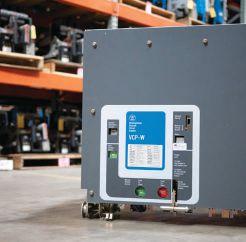


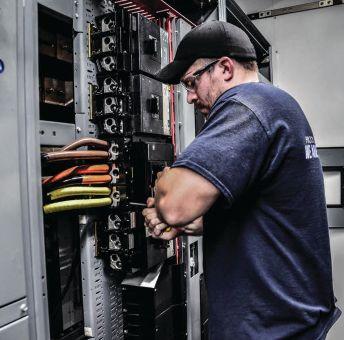
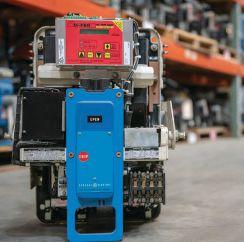





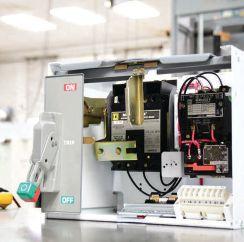
An extensive inventory of over 200,000 sq. ft. across the southeast means the Southland Group has the service support and engineering services to ensure that your products are safe, reliable and service ready. Contact us today and let us create the solutions you need most!






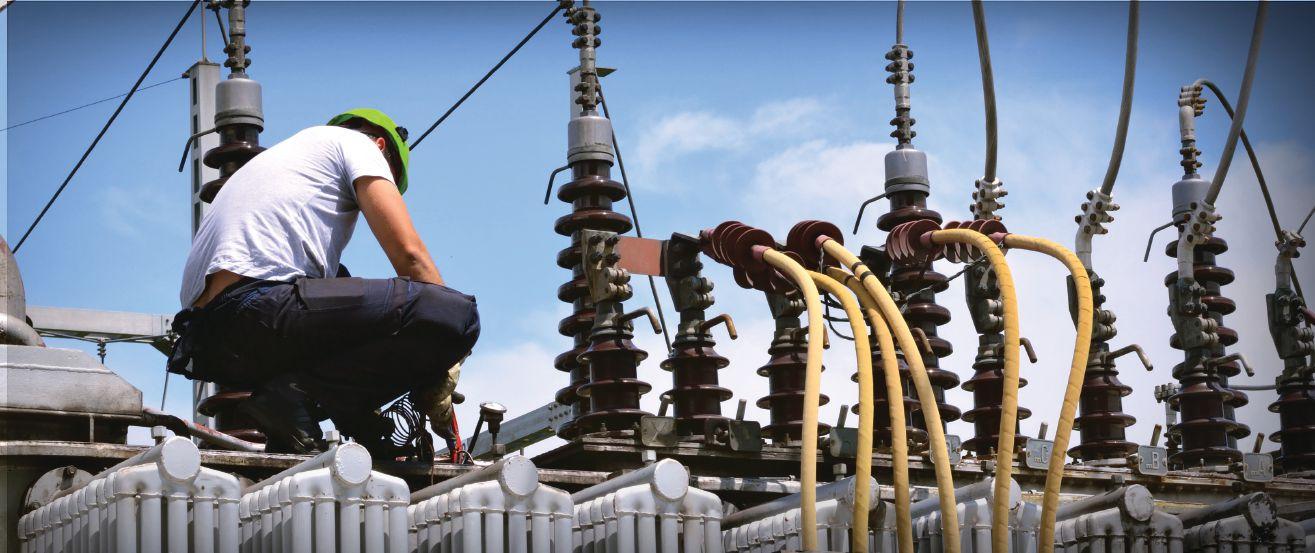
“ I got it at intellirent ”
easy to do business with technical support in selection and support of the job
functionally tested with all required and requested accessories upon shipment
expert logistics ensures it arrives when and where I need it largest fleet in the industry
DOBLE: ENSURING SAFE AND RELIABLE POWER FOR NEARLY A CENTURY
NETA Corporate Alliance Partners (CAPs) are a group of industry-leading companies that have joined forces with NETA to work together toward a common aim: improving quality, safety, and electrical system reliability.
In our CAP Spotlight series, we look at what makes CAPs special and highlight some of their successes. In this issue, NETA World interviews Alex Salinas, Doble’s Director of Vanguard Operations.
NW: What do people think when they hear Doble?
Salinas: Doble has historically been associated with transformer testing — but that’s certainly not all we do. The depth and breadth of our solutions and expertise address the full range of utilities’ needs: diagnostics and software for testing electrical apparatus and protective relays; data management, integration and analysis capabilities; security and NERC compliance consulting; and more.
For over 100 years, Doble has been a market leader, partnering with electric power companies to minimize risk, improve operations, and optimize system performance.
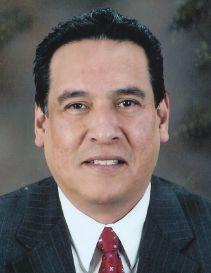
Our clients count on us to keep the lights on, regardless of the threats or issues they encounter. Although our products and services continue to evolve, Doble’s mission to help ensure all people have reliable, safe, and secure energy hasn’t wavered.
NW: Which recent company achievement or milestone are you particularly proud of?
Salinas: Doble’s acquisitions of Morgan Schaffer and Vanguard Instruments are both milestones that stand out because these additions to the Doble family significantly enhance our portfolio and value offering for clients. Morgan Schaffer, a leader in dissolved gas analysis, and Vanguard, with its wide range
110 • SPRING 2020 DOBLE: ENSURING SAFE AND RELIABLE POWER FOR NEARLY A CENTURY
INSIGHTS & OBSERVATIONS — NETA CAP SPOTLIGHT
ALEX SALINAS
of testing instruments, complement each other very well and bring in new, deeper expertise and capabilities for on-line and off-line testing.
Morgan Schaffer’s Calisto product line for on-line transformer DGA monitoring is a natural complement to Doble’s existing suite of on-line software and hardware solutions. Vanguard expands Doble’s extra-high-voltage (EHV) and transformer testing portfolio with winding turns-ratio testers, mega-ohm meters, circuit breaker testers, and more.
Beyond the technology, the highly regarded reputations and cultures of these companies have integrated seamlessly with Doble’s, and we’ve achieved greater results than we ever expected. We’re consistently looking for new ways to meet utilities’ varied needs, and the acquisitions of Morgan Schaffer and Vanguard are great examples of that commitment.
NW: What makes Doble stand out?
Salinas: Our global footprint is a key differentiator. Our diverse culture equips us to better serve our clients. We can apply this experience to help utilities world-wide address their unique challenges, as each country has its own environmental, regulatory, equipment shipping, and infrastructure concerns.
Although Doble has always had a presence in other markets, our partners, sister companies, and subsidiaries have really enabled us to deliver the level of local, on-the-ground support and logistical expertise needed to help our clients across the world thrive.
NW: What challenges do you see going forward for the industry?
Salinas: The past decade has arguably introduced more change than any other. Companies need to set themselves up to continue to adapt quickly, as the pace of change is only going to accelerate. As the power industry digitally transforms and smart grids and microgrids become even more common,
utilities need to master data management and understand the foundational role it plays in enabling these concepts to take off and be successful.
Having been around for over a century, power companies aren’t traditionally equipped to manage the high volumes of data now required in today’s digitally enabled world, but data management is quickly becoming a primary responsibility. Utilities need to integrate solutions and processes that enable them to quickly receive and analyze large amounts of data. This is the key to managing assets effectively and making informed, real-time decisions around health, maintenance, and more.
NW: What evolution do you see on the horizon that will have a positive impact on your work?
Salinas: As the industry transforms digitally, power companies are beginning to fully understand the criticality of cyber protection. As NERC and FERC continue to introduce new regulations, companies will be required to update their systems for better defense against the growing sophistication of modern cyber threats.
Taking advantage of automation and technology can help utilities through this transformative time because it lowers the risk of intrusion through around-the-clock system monitoring and reduces the potential operational and financial impact of breaches. Technology can also free up engineers’ time to focus on more value-add tasks like developing holistic and enterprise-wide cyber defense strategies. Making an investment in the right tools and capabilities today promises an even larger payout tomorrow.
In our digital world, the availability of data from numerous sources poses a growing number of challenges in terms of understanding, managing, integrating, and using the data. The goal is to obtain the value this data makes available.
NETAWORLD • 111 DOBLE: ENSURING SAFE AND RELIABLE POWER FOR NEARLY A CENTURY
& OBSERVATIONS — NETA CAP SPOTLIGHT
INSIGHTS
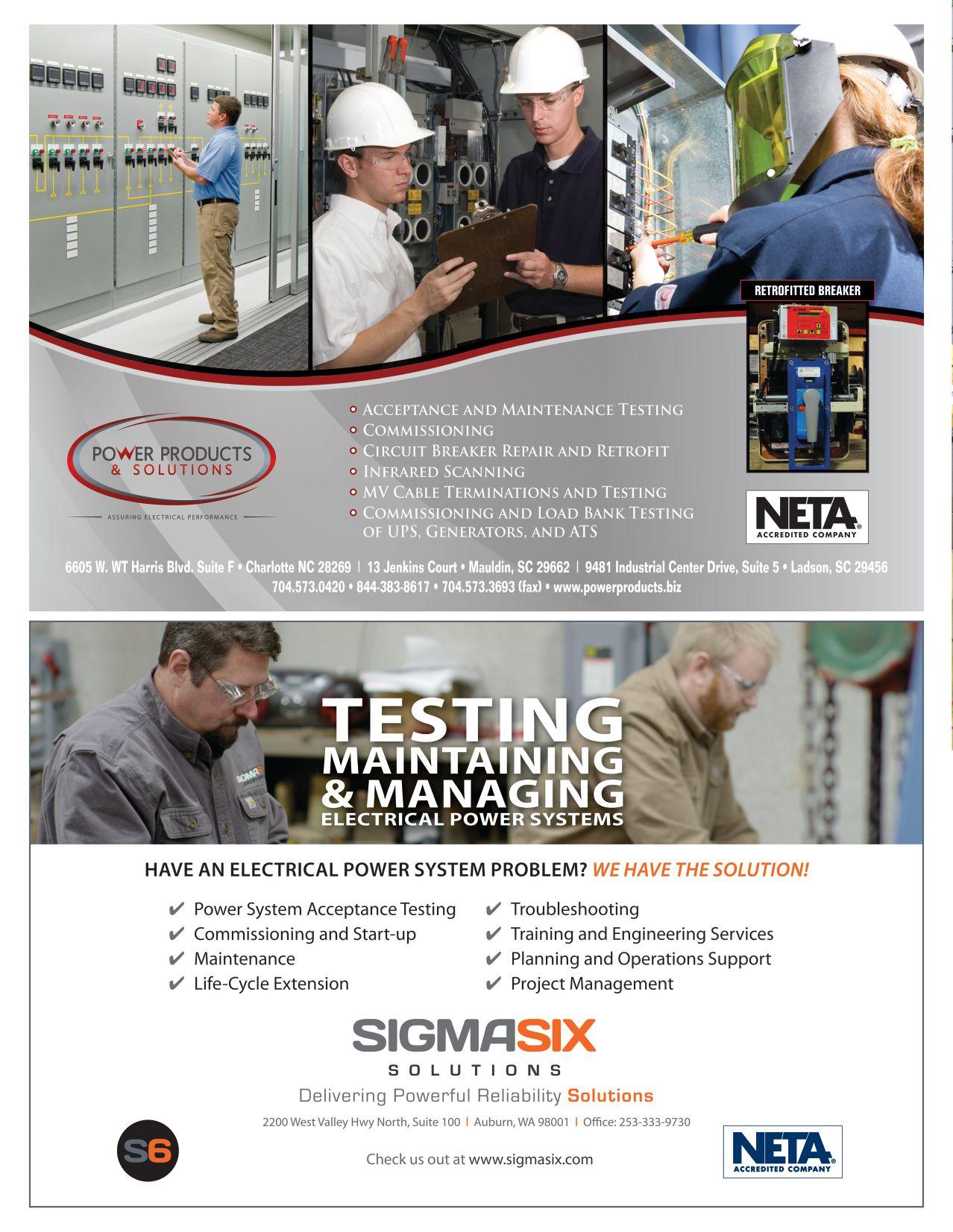
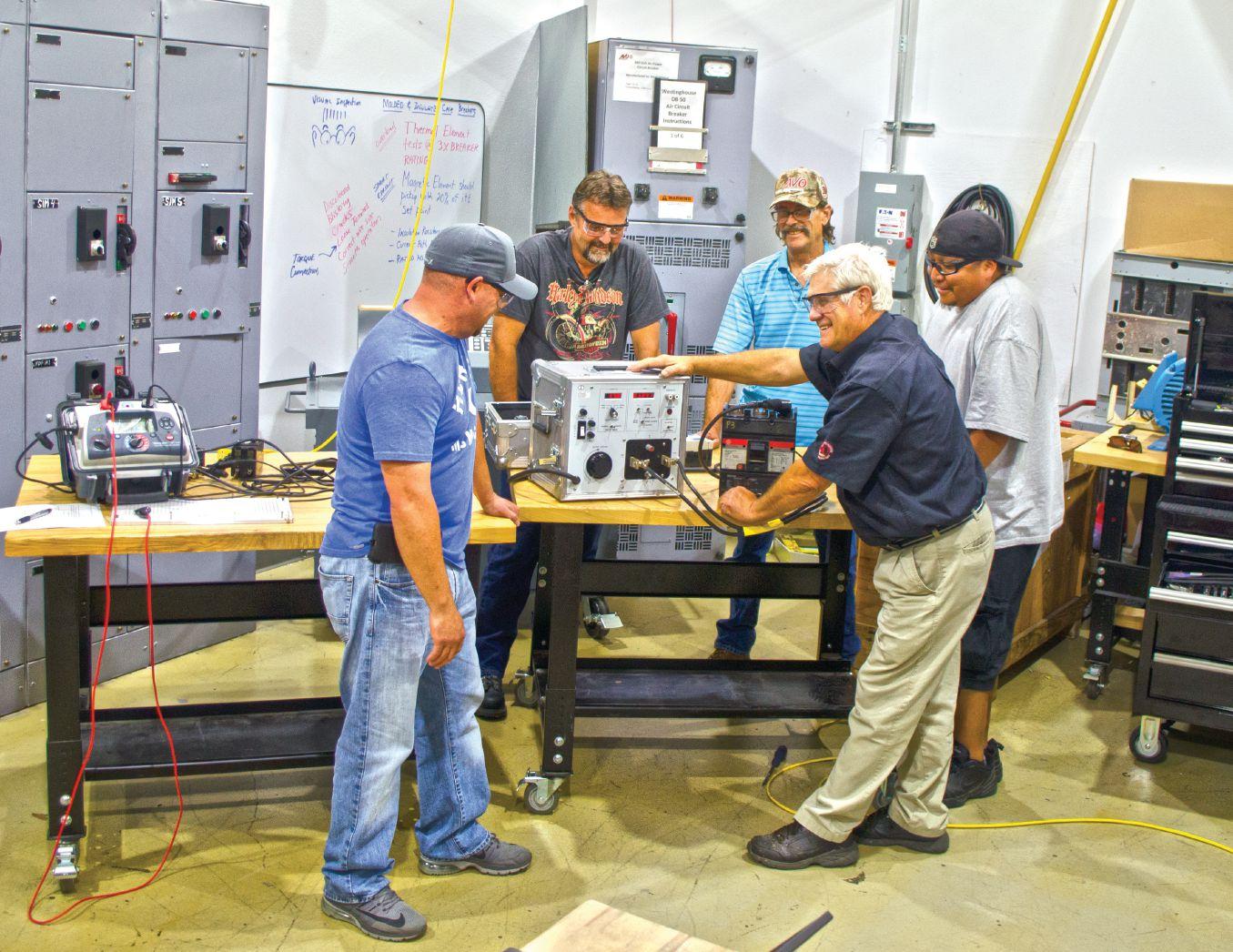





Many avo training courses are eligible for neta ctd’s By offering the broadest selection of electrical training in the industry, we have a training course for all things electrical. We train to NETA and other industry recognized standards to take your knowledge to the next level. A training course is only as good as the instructor teaching it. That’s why our instructors are some of the most qualified in the industry. To be the best, train with the best. Offering over 57 electrical safety & electrical maintenance training courses and certifications. WWW.AVOTRAINING.COM 877-594-3156 Let us bring the training to your location, call today for an on-site quote Hands-on training and NETA standards, together get you the most accurate field results. Training instructor nor contract instructor has any proprietary interest in any products, instruments, devices, services, or materials discussed.
ANSI/NETA STANDARDS UPDATE


















ANSI/NETA ECS–2020 REVISION COMPLETED
ANSI/NETA ECS, Standard for Electrical Commissioning of Electrical Power Equipment & Systems, 2020 Edition, completed the American National Standard revision process. ANSI administrative approval was received on September 9, 2019. ANSI/NETA ECS–2020 supersedes the 2015 Edition.
A project intent notification published in ANSI’s Standards Action on May 18, 2018, announced the intent to revise the standard. A 30-day initial ballot period and a 45-day public comment period began on April 26, 2019. A second ballot was issued July 5, 2019, and closed on August 5, 2019. The 45-day second ballot public comment period was scheduled to close on August 20, 2019. The revised edition of ANSI/ NETA ECS will be released in February 2020 at PowerTest in Chicago.































ANSI/NETA ECS describes the systematic process of documenting and placing into service newly installed or retrofitted electrical power equipment and systems. This document shall be used in conjunction with the most recent edition of ANSI/NETA ATS, Standard for Acceptance Testing
114 • SPRING 2020 SPECIFICATIONS AND STANDARDS ACTIVITY ANSI/NETA STANDARDS UPDATE
FORELECTRICALPOWEREQUIPMENT&SYSTEMS STANDARDFOR ACCEPTANCE TESTINGSPECIFICATIONS ANSI/NETA ATS-2017 ANSI/NETA STANDARD FOR ELECTRICAL COMMISSIONING SPECIFICATIONS ANSI/NETA ECS-2020 STANDARDS 20 2020 STANDARD FOR ELECTRICAL COMMISSIONING SPECIFICATIONS FOR ELECTRICAL POWER EQUIPMENT & SYSTEMS
NEW EDITION REVISION IN PROCESS
SPECIFICATIONS AND STANDARDS
Specifications for Electrical Power Equipment & Systems . The individual electrical components shall be subjected to factory and field tests, as required, to validate the individual components. It is not the intent of these specifications to provide comprehensive details on the commissioning of mechanical equipment, mechanical instrumentation systems, and related components.
The ANSI/NETA ECS–2020 Edition includes updates to the commissioning process, as well as inspection and commissioning procedures as it relates to low- and mediumvoltage systems.
Voltage classes addressed include:
• Low-voltage systems (less than 1,000 volts)
• Medium-voltage systems (greater than 1,000 volts and less than 100,000 volts)
• High-voltage and extra-high-voltage systems (greater than 100 kV and less than 1,000 kV)
References:
• ASHRAE, ANSI/NETA ATS, NECA, NFPA 70E, OSHA, GSA Building Commissioning Guide
ANSI/NETA ATS–2017 REVISION UNDERWAY
ANSI/NETA ATS–2017, Standard for Acceptance Testing Specifications for Electrical Power Equipment & Systems is scheduled to complete an American National Standard revision process in fall 2020.
A project intent notification published in ANSI’s Standards Action on January 3, 2020, announced the opening of a 45day public comment period. The initial ballot was issued on January 17, 2020, and closed on February 17, 2020. A second ballot is to be issued in July 2020. The revised edition of ANSI/NETA ATS is scheduled to debut at PowerTest 2021 in Orlando.
ANSI/NETA ATS covers suggested field tests and inspections for assessing the suitability for initial energization of electrical power equipment and systems. The purpose of these specifications is to assure that tested electrical equipment and systems are operational, are within applicable standards and manufacturers’ tolerances, and are installed in accordance with design specifications.
ANSI/NETA MTS–2019 LATEST EDITION
ANSI/NETA MTS, Standard for Maintenance Testing Specifications for Electrical Power Equipment & Systems, 2019 Edition, completed an American National Standard revision process and received ANSI approval on February 4, 2019. The revised edition of ANSI/NETA MTS was released in March 2019 and supersedes the 2015 Edition.
ANSI/NETA MTS contains specifications for suggested field tests and inspections to assess the suitability for continued service and reliability of electrical power equipment and systems. The purpose of these specifications is to assure that tested electrical equipment and systems are operational and within applicable standards and manufacturers’ tolerances, and that the equipment and systems are suitable for continued service. ANSI/NETA MTS–2019 revisions include online partial discharge survey for switchgear, frequency of power systems studies, frequency of maintenance matrix, and more. ANSI/NETA MTS–2019 is available for purchase at the NETA Bookstore at www.netaworld.org
ANSI/NETA ETT–2018 LATEST EDITION
ANSI/NETA ETT, Standard for Certification of Electrical Testing Technicians, 2018 Edition, was approved by ANSI as an American National Standard on February 22, 2018. It is available now in the NETA Bookstore at www.netaworld.org, where a complimentary PDF copy can be downloaded or a printed copy ordered.
ANSI/NETA ETT establishes minimum requirements for qualifications, certification, training, and experience for the electrical testing technician. It provides criteria for documenting qualifications for certification and details the minimum qualifications for an independent and impartial certifying body to certify electrical testing technicians.
PARTICIPATION
Comments and suggestions on any of the standards are always welcome and should be directed to NETA. To learn more about the NETA standards review and revision process, to purchase these standards, or to get involved, please visit www.netaworld.org or contact the NETA office at 888-300-6382.
ANSI/NETA
NETAWORLD • 115
ACTIVITY
STANDARDS UPDATE


















ORDER NOW Visit NETAWORLD.ORG or call 888.300.6382 NEW EDITION










NFPA 70B COMMITTEE REPORT
BY DAVID HUFFMAN, Power Systems Testing Company
The NFPA Committee met in Boston in September. The meeting began with confirmation that the 70B maintenance guide would be rewritten into a maintenance standard. There had been previous discussion regarding whether to make it a recommended practice, using the word “should” in the verbiage, or to make it a standard, using the word “shall.”
There are differences between a recommended practice and a standard, namely enforceability. NETA’s testing specifications, as a standard, provide the electrical testing industry with a comprehensive resource on what “shall” be done to assure the safety and reliability of electrical power equipment and systems. NFPA is in the process of converting their longstanding NFPA 70B from a recommended practice to a standard.
This is great move forward by the NFPA, as it will put the electrical trifecta — NFPA 70, National Electrical Code; NFPA 70E, Standard for Electrical Safety in the Workplace; and NFPA 70B, Recommended Practice for Electrical Equipment Maintenance — all working handin-hand to create a more cohesive interaction between the documents.
NETA’s Standards Review Council spent a great deal of time at their October meeting in collaboration with other NFPA 70B committee members to craft language within certain 70B
chapters that address testing and maintenance of various pieces of electrical equipment. This was an extremely productive meeting, and the results were well received by the 70B committee at large during the regularly scheduled conference calls. These conference calls resume in January in an ongoing effort to move the document to a designation of “standard.”
The next in-person meeting will take place in San Antonio, Texas, from March 30–April 2, 2020.

David Huffman has been with Power Systems Testing, a NETA Accredited Company, since January 1988 and is currently CEO. He graduated from California State University, Fresno, and is a licensed Professional Electrical Engineer in the state of California as well as a NETA Level IV Certified Technician. David is a NETA board member, NETA’s Principal Representative to the NFPA 70B Committee, and serves as a member of various NETA committees.
118 • SPRING 2020 SPECIFICATIONS AND STANDARDS ACTIVITY NFPA 70B COMMITTEE REPORT


CIRCUIT BREAKER TESTING l SERVICE l REPAIR info@ampteks.com PATENT PENDING CIRCUIT BREAKER TESTING ELECTRODES info@electrolinkusa.com


ANSWERS



ANSWERS

1. c. The Y coil (also known as the anti-pump coil) is a seal-in coil that prevents the spring release coil (SRC) from operating more than one time if a close signal is maintained. When the circuit breaker is moved to the connected position, control power is applied. Note that the spring charging motor will charge the springs when control power is applied and the circuit breaker is moved to the TEST or CONNECTED position. At this point (see Figure 1), the circuit breaker is still open. The charging motor limit switches (LS) operate:
•52LS-1 opens when the springs are charged.





NFPA Disclaimer:
Although Jim White is a member of the NFPA Technical Committee for both NFPA 70E, Standard for Electrical Safety in the Workplace, andNFPA 70B, Recommended Practice for Electrical Equipment Maintenance, the views and opinions expressed in this column are purely the author’s and shall not be considered an official position of the NFPA or any of its technical committees and shall not be considered, nor be relied upon, as a formal interpretation or promotion of the NFPA. Readers are encouraged to refer to the entire text of all referenced documents.
•52LS-2 closes when the springs are charged.
•52LS-3 will close when the breaker closes, energizing 52Y.
•52 IS is mechanically-operated and closes when the circuit breaker is in the TEST and CONNECTED positions.
When control power is applied to the circuit breaker, the charging motor operates and completes the motor charging, and the circuit breaker is ready to close. Closing the closing switch (CS) energizes the SRC, closing the circuit breaker. At the same time, the Y coil energizes. The control switch must be moved to the open position manually in order to de-energize the Y coil and allow another close operation of the circuit breaker.
In Figure 2, the 52LS contacts that change position are shown with red circles. The circuit breaker is still open in Figure 2. Because the motor has charged, 52LS-1 opens again, 52LS-2 closes completing the closing

circuit. All that is needed is to close the CS to complete the closing of the circuit breaker.
In Figure 3, the control switch (CS) has been initiated, 52LS-1 and 52LS-2 have changed position, and the motor re-energizes. The
TECH QUIZ
No. 129
TECH QUIZ ANSWERS
120 • SPRING 2020
Figure 2: Circuit Breaker Just Before Closure
Figure 3: Circuit Breaker After Closure
52Y coil is energized through 52LS-3 and will stay energized until the CS is opened. When the motor recharges, 52LS-1 will open, de-energizing the motor. Note that the 52a contacts in the tripping circuit are now closed, because the circuit breaker has closed. This enables the trip circuit. The 52b contact connected to the green lamp is opened, because the circuit breaker is closed. This extinguishes the green light.
2. b. The 52a contact prevents or allows the trip coil from operating. It closes when the circuit breaker closes and de-energizes the trip coil when the breaker is opened. 52a or 52b are both mechanically operated contacts. This throws a lot of technicians off, as they are used to contacts being operated by a coil.
3. a. The 52b contact allows or prevents the closing coil from operating. It closes when the circuit breaker opens. The 52b contact is always closed when the circuit breaker is open. It has no choice, as it is mechanically operated. A second 52b contact in the figure energizes the green light signifying the breaker is open and control power is available to close it.
4. b. We already answered this one. The 52 contacts are connected to the circuit breaker main operating mechanism. 52a is open when the circuit breaker is open, and 52b is closed when the circuit breaker is open.

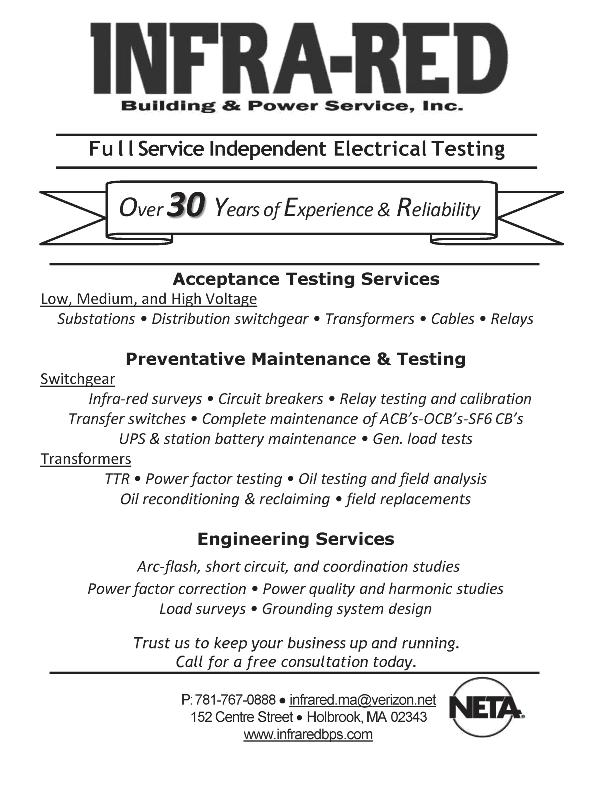
TECH QUIZ ANSWERS
2020 – NEW PRODUCT FORUM
A–RENT TEST EQUIPMENT
www.a-rent.com
SmartFleet
A-Rent is a new provider of electrical test equipment rental started in 2019. Our multi-million-dollar fleet is the youngest in the industry. We offer typical short-term and long-term rentals, plus we’re launching an innovative new service called SmartFleet. SmartFleet combines the convenience and flexibility of rental with the tax and financial benefits of owning equipment. Talk with us about SmartFleet and learn how to access a large, shared fleet of equipment while still getting the benefit of equipment depreciation expense to maximize your EBITDA.
AEMC INSTRUMENTS
www.aemc.com
AEMC® Introduces Ten NEW
Simple Logger® Data Loggers
AEMC’s data loggers are small, single-channel recording devices powered by two AA batteries or through an USB port. These loggers can be ready to go in minutes with just a few parameters to set up. Models are available for logging AC voltage, DC voltage, DC current, temperature, pulse, and events. Application software is included with the unit. Scaling units of measure and recording length can be set through the software. Real-time graphs can be displayed and downloaded data can be analyzed, and reports printed. The main advantage of the logger is its ability to begin recording with a simple, onebutton operation. The front panel LED alerts the operator of the logger’s status.
AVO TRAINING INSTITUTE, INC.
www.avotraining.com
Updated Training Experiences
While the 57-year history of AVO Training Institute is impressive, the future holds amazing opportunities of progression for AVO’s electrical safety and maintenance training programs. With the purchase of a larger headquarters facility in Dallas by our parent company, Megger, we are taking this opportunity to improve the overall experience for our students. AVO Training is researching more interactive classrooms and modern training facilities to vastly improve our capabilities and our students’ experience within our Dallas
facility. We also plan to update lab equipment and bring our lab/hands-on experience up-to-date in order to be directly relatable for technicians returning to work.
With strategic partners such as Circuit Breaker Sales (CBS), AVO Training has added an additional learning center outside of Chicago with plans for another in Florida. These training facilities hosted through CBS give AVO Training access to the most current as well as older equipment for students to view and interact with.
Since 1963, AVO Training Institute has been dedicated to providing electrical trades workers with an unforgettable learning experience. For the coming years, we will continuously improve to uphold our mission and goals for our students.
BRAH ELECTRIC MANUFACTURING
www.brahelectric.com
BRV, BUV, and BIP Products for Universal Bus Plugs
BRAH Electric has developed three new product families to complement the universal bus plug line. BRAH is the exclusive manufacturer of direct replacement bus plugs, designed with a modular rear assembly and adaptation kits allowing for direct fit and function with all major brands of OEM industrial busway. New families include BRV (installs into Siemens XL-X busway), BUV (installs into Siemens XL-Universal busway), and BIP (installs into Cutler Hammer POW-R-WAY I & II). Each line features optional integration of wireless power monitoring and BRAH’s three-phase switch with patented technology.
The universal bus plug line by BRAH is being utilized among numerous industries across North America.
CE POWER ENGINEERED SERVICES
www.cepower.net
Life Extension Department Expansion
CE Power has expanded its Life Extension Department and is working to preserve existing equipment in the power grid. CE Power’s life extension team provides partial or complete repair on LV or MV breakers, as well as on-site switchgear upgrade services. Our breaker shop is a PEARL certified organization with over 80 years of experience working with large electrical apparatus. Certifi ed NETA Technicians and Professional Engineers ensure that your life extension project works to your scope, budget, and timeline.
122 • SPRING 2020 NEW PRODUCT FORUM
DV POWER
www.progusa.net
Handheld Test Sets
ProgUSA—DV Power gets portable! New handheld test sets
300A micro-ohmmeter you can use all day without re-charge; three-channel circuit breaker and coil timer with great PC software; battery Ohmic tester under $2.5K; and for 2020, a handheld, combo WRT and TTR, and all fit in the palm of a NETA Tech’s hand. Most accurate and reliable SF6 3-in-1 analyser is also on display.
ELECTROSWITCH
www.electroswitch-psr.com
Portable Battery Monitor
Monitor your substation battery system using the new Electroswitch portable battery monitor. The unit monitors station battery voltage and provides alarms for high/low voltage, positive and negative ground faults, corrosion, and open cell detection. An optional handheld unit used with the monitor’s internal pulse generator provides an assist in locating ground faults. The battery monitor is powered directly by the DC battery system and packaged in a rugged case, making it ideal for field use. Its standard DNP communication output allows the unit to be left on site for long-term monitoring when required.
HIGH VOLTAGE, INC.
www.hvinc.com
Parallel Resonant AC Test Sets
High Voltage, Inc. is known for high-quality, easy-to-use, portable field-test equipment. We are happy to announce the expansion of our product line to include much larger models to be used in a factory or mounted on a utility trailer. Our PAR (parallel AC resonant) line of ac dielectric testers is designed to allow power frequency testing of power factor capacitors, bushings, instrument transformers, rotating machinery, transformers, power cables, shunt reactors, and other electrical apparatus. AC resonant technology (a tuneable core reactor) allows testing loads that require up to 250 kVA with an input of only 20 kVA.
2020 – NEW PRODUCT FORUM
HIPOTRONICS, INC.
www.hipotronics.com
700-
DI Series of AC Dielectric Test Systems
The HIPOTRONICS 700-DI Series of AC dielectric test systems are designed to perform high-voltage AC dielectric tests on electrical apparatus in accordance with IEC60, IEEE 4, IEC 270, and other national test standards. AC dielectric test sets are available in a wide range of voltage and power ratings with exceptional reliability, durability, and functionality. The new user interface is modern, fast, and easy to use. The 700DI is also simple to integrate into existing testing facilities. No matter what your requirements are, HIPOTRONICS has a modern, affordably priced, and highly reliable test solution to meet your needs.
HV TECHNOLOGIES, INC.
www.hvtechnologies.com
Portable Partial Discharge Detector (PPDD)
The PPDD allows for quick testing and evaluation of switchgear, cables, and other HV equipment with integrated transient earth voltages (TEV) and non-contact ultrasonic (AA) sensors. The handheld detector is also equipped with a BNC interface to connect an external HFCT sensor for PD testing of cables. A large integrated LCD display shows the real-time measurement results as a function of amplitude, pulse number, severity, phase-resolved PD pattern, and phase-resolved pulse sequence. Waveform recording can be activated automatically or manually with the ability to save onto a flash drive and export the results via USB or WIFI connection.
INTELLIRENT, A DIVISION OF ELECTRORENT
www.intellirentco.com
Photovoltaic Installation Test Equipment
Intellirent, a division of Electrorent, introduces an additional inventory of test equipment to meet the requirements at photovoltaic installations. With the onset of IEEE 1547 2018, PV installations throughout distribution systems are becoming more and more prevalent. The National Electrical Code’s (NEC) NFPA 70 governs the requirements for most non-utility electrical installations in the United States, including solar photovoltaic (PV) systems. When adopted into the building codes by states or local jurisdictions, the NEC
NETAWORLD • 123 NEW PRODUCT FORUM
2020 – NEW PRODUCT FORUM
becomes the basis for inspections and approvals of electrical installations. Come check out our latest inventory of available testing products required to meet these needs.
MADDOX INDUSTRIAL TRANSFORMERS
www.maddoxtransformer.com
2020 Facility Expansions
Maddox Industrial Transformer has been recognized as an Inc 500 Company for expansive growth over the past five years and is announcing two new facility expansion projects in 2020.
MEGGER
www.megger.com
ICMsystem
In mid-2019, Megger acquired Power Diagnostix (PDIX) of Aachen, Germany, a leader in the development and manufacturing of partial discharge detection equipment, offering diagnostic services for high voltage installations.
The ICMsystem is PDIX’s high-end solution for performing partial discharge measurements in various applications with the highest level of modularity and versatility. Measurements can be taken from various types of sensors and in combination with a broad range of frequency selective preamplifi ers and signal converters. The strength of this technology is its adaptability and capability to perform in-depth analysis of partial discharge activity detected in high-voltage apparatus.
NDB TECHNOLOGIES
www.ndbtech.com
PD-LT, PD Annunciator, and ART-3D
PD-LT is a partial discharge tester designed to detect insulation deterioration in overhead equipment. The wireless display offers PD readings and trending for easy reporting.
PD Annunciator is a low-cost, multichannel, PD alarm/ monitoring system that can be set up as a local PD alarm triggering output contacts or integrated in monitoring platforms by connecting to Scada via modbus or alternatively set up as a PD data logger when paired with a compatible modbus logger.
ART-3D is a real three-phase ratio tester with added vector group detection, auto cable check features, and 1V test output for CT testing.
OMICRON ELECTRONICS CORP. USA
www.omicronenergy.com
Station Scout Commission Testing for SCADA Communication of IEC 61850 & New Updates PTM Update
IEC 61850: New Station Scout Commission Testing for SCADA Communication of IEC 61850 tests the SCADA communication through the SCL file.
TESTRANO Smart Campaign/ ROTM Testing: New Updates PTM Update. One button starts all transformer testing and rotating machinery testing workflow in PTM.
PHENIX TECHNOLOGIES, INC.
www.phenixtech.com
Automated Touch Screen Controls
Automated touch screen controls are now available on Phenix Technologies’ line of portable field testing equipment. The B-series controls feature a rich, high-resolution, touchscreen operating display, high accuracy, auto-ranging meters, automated operation, and data acquisition. Visit Phenix Technologies at Booth 342 to discuss your high-voltage, highcurrent, and high-power testing requirements
POWER GRID ENGINEERING
www.powergridengineering.com
Pillars of Business
Power Grid Engineering, LLC (PGE) promotes a human performance culture where people are encouraged to do the right thing, share lessons learned when unexpected results occur, and thrive in an environment with opportunities for improvement. To assess the health and effectiveness of our human performance culture, we’ve established four core areas of focus, also known as pillars of our business. These pillars include leadership, management and accountability (LMA); employee training and qualifications; systems and tools; and core processes.
124 • SPRING 2020 NEW PRODUCT FORUM
SCHWEITZER ENGINEERING LABORATORIES, INC.
www.selinc.com
SEL-T401L Ultra-High-Speed Line Relay
Visit with SEL professionals in Booth 415 to learn about the soon-to-release SEL-T401L ultra-high-speed line relay that combines fast time-domain protection with dependable phasor-based protection. Additionally, you can hear about the latest developments from SEL that are making power systems all over the world safer, more reliable, and more economical. We look forward to seeing you at our booth!
SMC
www.smcint.com
Three-Phase Timer, 200A Prime 600, and Relay Test Set
SMC has three new products on deck for 2020 — two requested by our valued end users.
Bridging the gap between our single-phase timer and CB analyzer, we’re releasing a three-phase timer that is simple and efficient without all the added extras!
Next is a 200A version of our popular Prime 600.
Saving the best for last is our new relay test set. SMC introduces power and flexibility in a whole new way! Go beyond laptops into notebooks and smartphones to control locally or across the nation with full control for automated or manual testing.
UTILITY RELAY COMPANY
www.utilityrelay.com
Sluggish Breaker® by URC
Be confident that your circuit breaker is operating as intended with Sluggish Breaker® by URC. Compatible with AC-PROII®, AC-PRO-MP®, AC-PRO-MP-II®, and SAFE-T-TRIP®, the patented Sluggish Breaker® feature captures the breaker mechanism time and lets you know if it is opening slower than intended, indicating that servicing may be required. The breaker mechanism time is accurately measured and recorded using either the zero-current method or newly installed limit switches. A warning message will be displayed if the opening time is slow, and you can even trigger an alarm relay if so desired. With so much depending on proper breaker operation, be sure to operate safely and efficiently with Sluggish Breaker®.
WEIDMANN ELECTRICAL TECHNOLOGY
www.weidmann-electrical.com
InsuLogix® RFM
The Weidmann InsuLogix® brand of transformer monitoring products provides cost-effective integrated solutions for delivering actionable information. The newest InsuLogix® RFM is a retrofittable fault detector for distribution transformers.
• Provides clear visual indication of internal failure
• Installs easily
• Withstands vibration for improved reliability
• Calibrated for low- or high-energy arcs
• Fire mitigation tool in wooded areas
• Improves crew safety
When combined with InsuLogix® DTM, the RFM can transmit failure information remotely. Recognizing and reporting failures reduces service restoration time and cost, improves operational safety, and reduces the risk of collateral damage associated with tank rupture.
NETAWORLD • 125 NEW PRODUCT FORUM
NEW PRODUCT FORUM
2020 –



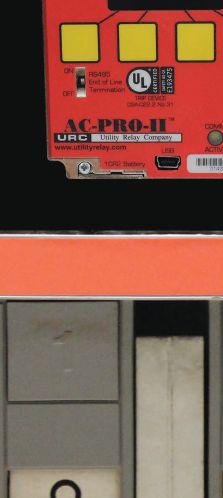


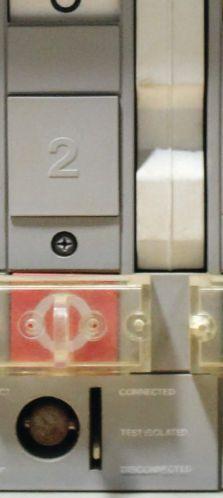


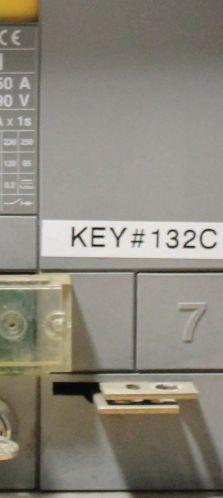

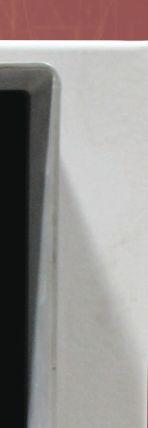


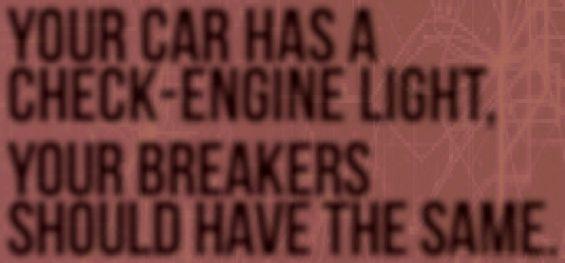
Be confident that your circuit breaker is operating as intended with URC’s patented Sluggish Breaker® detection.
A warning message will be displayed on the trip unit or remote display if the opening time is slow – and trigger an optional alarm relay.
Measures breaker mechanism time and lets you know if it is opening slower than it should, indicating that servicing may be required
Provides before and after values for service test reporting •


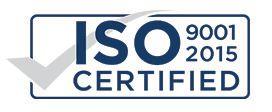

With so much depending on proper breaker operation, be sure to operate safely and efficiently with Sluggish Breaker® from URC.
Compatible with:






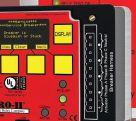

UTILITYRELAY.COM | 888.289.2864 | URCSALES@UTILITYRELAY.COM
Your
Check-Engine Light,
The Same.
Car Has A
Your Breakers Should Have
AC-PRO-II ® AC-PRO-MP ® AC-PRO-MP-II ® SAFE-T-TRIP ®
•
A&F Electrical Testing, Inc.
80 Lake Ave S Ste 10 Nesconset, NY 11767-1017 (631) 584-5625 http://www.afelectricaltesting.com
A&F Electrical Testing, Inc.
80 Broad St Fl 5 New York, NY 10004-2257 (631) 584-5625
ABM Electrical Power Services, LLC
720 S Rochester Ste A Ontario, CA 91761-8177 (301) 397-3500 abm.com/Electrical
ABM Electrical Power Services, LLC
6541 Meridien Dr Suite 113 Raleigh, NC 27616 (919) 877-1008
ABM Electrical Power Services, LLC
2631 S. Roosevelt St Tempe, AZ 85282 (602) 722-2423
ABM Electrical Power Services, LLC
3600 Woodpark Blvd Ste G Charlotte, NC 28206-4210 (704) 273-6257
ABM Electrical Power Services, LLC
6940 Koll Center Pkwy Suite# 100 Pleasanton, CA 94566 (408) 466-6920
ABM Electrical Power Services, LLC
9800 E Geddes Ave Unit A-150 Englewood, CO 80112-9306 (303) 524-6560
ABM Electrical Power Services, LLC
3585 Corporate Court San Diego, CA 92123-1844 (858) 754-7963
ABM Electrical Power Services, LLC
1005 Windward Ridge Pkwy Alpharetta, GA 30005 (770) 521-7550
ABM Electrical Power Services, LLC 4221 Freidrich Lane Suite 170 Austin, TX 78744 (210) 347-9481
ABM Electrical Power Solutions
4390 Parliament Place Suite S Lanham, MD 20706 (301) 967-3500
ABM Electrical Power Solutions
3700 Commerce Dr # 901-903 Baltimore, MD 21227-1642 (410) 247-3300
ABM Electrical Power Solutions
NETA ACCREDITED COMPANIES
317 Commerce Park Drive Cranberry Township, PA 16066-6407 (724) 772-4638
ABM Electrical Power Solutions
814 Greenbrier Cir Ste E Chesapeake, VA 23320-2643 (757) 364-6145
ABM Electrical Power Solutions 1817 O’Brien Road Columbus, OH 43228 (724) 772-4638
Absolute Testing Services, Inc.
8100 West Little York Houston, TX 77040 (832) 467-4446 http://www.absolutetesting.com
Accessible Consulting Engineers, Inc. 1269 Pomona Rd Ste 111 Corona, CA 92882-7158 (951) 808-1040 www.acetesting.com
Advanced Electrical Services 4999 - 43rd St. NE Unit 143 Calgary, AB T2B 3N4 (403) 697-3747
Advanced Testing Systems 15 Trowbridge Dr Bethel, CT 06801-2858 (203) 743-2001 http://www.advtest.com
American Electrical Testing Co., LLC 25 Forbes Boulevard Suite 1 Foxboro, MA 02035 (781) 821-0121 http://www.aetco.us
American Electrical Testing Co., LLC Green Hills Commerce Center 5925 Tilghman St Ste 200 Allentown, PA 18104-9158 (484) 538-2272
American Electrical Testing Co., LLC 34 Clover Dr South Windsor, CT 06074-2931 (860) 648-1013
American Electrical Testing Co., LLC 76 Cain Dr Brentwood, NY 11717-1265 (631) 617-5330
American Electrical Testing Co., LLC 91 Fulton St., Unit 4 Boonton, NJ 07005-1060 (973) 316-1180
AMP Quality Energy Services, LLC
352 Turney Ridge Rd Somerville, AL 35670 (256) 513-8255
Apparatus Testing and Engineering
11300 Sanders Dr Ste 29 Rancho Cordova, CA 95742-6822 (916) 853-6280 http://www.apparatustesting.com
Apparatus Testing and Engineering 7083 Commerce Cir Ste H Pleasanton, CA 94588-8017 (916) 853-6280
Applied Engineering Concepts 894 N Fair Oaks Ave. Pasadena, CA 91103 (626) 389-2108 http://www.aec-us.com
Applied Engineering Concepts 8160 Miramar Road San Diego, CA 92126 (619) 822-1106
BEC Testing
50 Gazza Blvd Farmingdale, NY 11735-1402 (631) 393-6800 www.bectesting.com
Burlington Electrical Testing Co., Inc.
300 Cedar Ave Croydon, PA 19021-6051 (215) 826-9400 http://www.betest.com
Burlington Electrical Testing Co., Inc. 846 Waterford Drive Delran, NJ 08075 (609) 267-4126
C.E. Testing, Inc. 6148 Tim Crews Rd Macclenny, FL 32063-4036 (904) 653-1900 http://www.cetestinginc.com/
CE Power Engineered Services, LLC 4040 Rev Drive Cincinnati, OH 45232 (800) 434-0415
CE Power Engineered Services, LLC 480 Cave Rd Nashville, TN 37210-2302 (615) 882-9455
CE Power Engineered Services, LLC 40 Washington St Westborough, MA 01581-1088 (508) 881-3911
CE Power Engineered Services, LLC 9200 75th Avenue N Brooklyn Park, MN 55428 (877) 968-0281
CE Power Engineered Services, LLC 72 Sanford Drive Gorham, ME 04038 (800) 649-6314
CE Power Engineered Services, LLC 8490 Seward Rd. Fairfield, OH 45011 (800) 434-0415
CE Power Engineered Services, LLC 1803 Taylor Ave. Louisville, KY 40213 (800) 434-0415
CE Power Engineered Services, LLC 10338 Citation Drive Suite 300 Brighton, MI 48116 (810) 229-6628
CE Power Engineered Services, LLC 10840 Murdock Drive Knoxville, TN 37932 (800) 434-0415
CE Power Engineered Services, LLC 3496 E. 83rd Place Merrillville, IN 46410 (219) 942-2346
CE Power Engineered Services, LLC 1260 Industrial Park Eveleth, MN 55734 (218) 744-4200
CE Power Solutions of Florida, LLC 3502 Riga Blvd., Suite C Tampa, FL 33619 (866) 439-2992 www.cepowersol.com
CE Power Solutions of Florida, LLC 3801 SW 47th Avenue Suite 505 Davie, FL 33314 (866) 439-2992
Control Power Concepts 3750 Las Vegas Blvd S. Unit 3303 Las Vegas, NV 89158 (702) 448-7833 www.controlpowerconcepts.com
Dude Electrical Testing, LLC 145 Tower Drive, Unit 9 Burr Ridge, IL 60527-7840 (815) 293-3388 http://www.dudetesting.com
Eastern High Voltage, Inc. 11A S Gold Dr Robbinsville, NJ 08691-1685 (609) 890-8300 http://www.easternhighvoltage.com
NETAWORLD • 127 NETA ACCREDITED COMPANIES
Setting the Standard
NETA ACCREDITED COMPANIES Setting the Standard
ELECT, P.C.
375 E. Third Street Wendell, NC 27591 (919) 365-9775
http://www.elect-pc.com
Electek Power Services, Inc.
870 Confederation Street Sarnia, ON N7T2E5 (519) 383-0333
Electric Power Systems, Inc.
21 Millpark Ct Maryland Heights, MO 63043-3536 (314) 890-9999 http://www.epsii.com
Electric Power Systems, Inc.
11211 E. Arapahoe Rd Ste 108 Centennial, CO 80112 (720) 857-7273
Electric Power Systems, Inc. 120 Turner Road Salem, VA 24153-5120 (540) 375-0084
Electric Power Systems, Inc.
1090 Montour West Ind Park Coraopolis, PA 15108-9307 (412) 276-4559
Electric Power Systems, Inc.
6141 E Connecticut Ave Kansas City, MO 64120-1346 (816) 241-9990
Electric Power Systems, Inc.
1230 N Hobson St. Suite 101 Gilbert, AZ 85233 (480) 633-1490
Electric Power Systems, Inc. 915 Holt Ave Unit 9 Manchester, NH 03109-5606 (603) 657-7371
Electric Power Systems, Inc.
3806 Caboose Place Sanford, FL 32771 (407) 578-6424
Electric Power Systems, Inc. 1129 E Highway 30 Gonzales, LA 70737-4759 (225) 644-0150
Electric Power Systems, Inc.
684 Melrose Avenue Nashville, TN 37211-3121 (615) 834-0999
Electric Power Systems, Inc.
2888 Nationwide Parkway 2nd Floor Brunswick, OH 44212 (330) 460-3706
Electric Power Systems, Inc.
54 Eisenhower Lane North Lombard, IL 60148 (815) 577-9515
Electric Power Systems, Inc.
1330 Industrial Blvd. Suite 300
Sugar Land, TX 77478 (713) 644-5400
Electric Power Systems, Inc.
56 Bibber Pkwy # 1 Brunswick, ME 04011-7357 (207) 837-6527
Electric Power Systems, Inc. 11861 Longsdorf St Riverview, MI 48193-4250 (734) 282-3311
Electric Power Systems, Inc.
8515 Calle Alameda NE Ste A Albuquerque, NM 87113 (505) 792-7761
Electric Power Systems, Inc.
3209 Gresham Lake Rd. Suite 155 Raleigh, NC 27615 (919) 210-5405
Electric Power Systems, Inc.
5850 Polaris Ave., Suite 1600 Las Vegas, NV 89118 (702) 815-1342
Electric Power Systems, Inc.
7925 Dunbrook Rd. Suite G
San Diego, CA 92126 (858) 566-6317
Electric Power Systems, Inc. 6679 Peachtree Industrial Dr. Suite H Norcross, GA 30092 (770) 416-0684
Electric Power Systems, Inc.
306 Ashcake Road suite A Ashland, VA 23005 (804) 526-6794
Electric Power Systems, Inc. 7169 East 87th St. Indianapolis, IN 46256 (317) 941-7502
Electric Power Systems, Inc.
7308 Aspen Lane North Suite 160 Brooklyn Park, MN 55428 (763) 315-3520
Electric Power Systems, Inc.
140 Lakefront Drive Cockeysville, MD 21030 (443) 689-2220
Electric Power Systems, Inc.
783 N. Grove Rd Suite 101 Richardson, TX 75081 (214) 821-3311
Electrical & Electronic Controls
6149 Hunter Rd Ooltewah, TN 37363-8762 (423) 344-7666
Electrical Energy Experts, LLC W129N10818 Washington Dr Germantown, WI 53022-4446 (262) 255-5222
http://www.electricalenergyexperts.com
Electrical Engineering & Service Co., Inc.
289 Centre St. Holbrook, MA 02343 (781) 767-9988
www.eescousa.com
Electrical Maintenance & Testing, Inc. 12342 Hancock St Carmel, IN 46032-5807 (317) 853-6795 http://www.emtesting.com
Electrical Reliability Services
610 Executive Campus Dr Westerville, OH 43082-8870 (877) 468-6384 http://www.electricalreliability.com
Electrical Reliability Services
5909 Sea Lion Pl Ste C Carlsbad, CA 92010-6634 (858) 695-9551
Electrical Reliability Services 1057 Doniphan Park Cir Ste A El Paso, TX 79922-1329 (915) 587-9440
Electrical Reliability Services
6900 Koll Center Pkwy Ste 415 Pleasanton, CA 94566-3119 (925) 485-3400
Electrical Reliability Services
8500 Washington St NE Ste A6 Albuquerque, NM 87113-1861 (505) 822-0237
Electrical Reliability Services 2275 Northwest Pkwy SE Ste 180 Marietta, GA 30067-9319 (770) 541-6600
Electrical Reliability Services 10606 Bloomfield Ave Santa Fe Springs, CA 90670-3912 (562) 236-9555
Electrical Reliability Services
400 NW Capital Dr Lees Summit, MO 64086-4723 (816) 525-7156
Electrical Reliability Services
7100 Broadway Ste 7E Denver, CO 80221-2900 (303) 427-8809
Electrical Reliability Services
2222 W Valley Hwy N Ste 160 Auburn, WA 98001-1655 (253) 736-6010
Electrical Reliability Services
221 E. Willis Road, Suite 3 Chandler, AZ 85286 (480) 966-4568
Electrical Reliability Services
1380 Greg St. Ste. 216 Sparks, NV 89431-6070 (775) 746-8484
Electrical Reliability Services
11000 Metro Pkwy Ste 30 Fort Myers, FL 33966-1244 (239) 693-7100
Electrical Reliability Services
245 Hood Road Sulphur, LA 70665-8747 (337) 583-2411
Electrical Reliability Services
9736 South Sandy Pkwy 500 West Sandy, UT 84070 (801) 975-6461
Electrical Reliability Services
6351 Hinson Street, Suite A Las Vegas, NV 89118-6851 (702) 597-0020
Electrical Reliability Services
3535 Emerson Pkwy Suite A Gonzales, LA 70737 (225) 755-0530
Electrical Reliability Services
9636 Saint Vincent Ave Unit A Shreveport, LA 71106-7127 (318) 869-4244
Electrical Reliability Services
1426 Sens Rd. Ste. #5 La Porte, TX 77571-9656 (281) 241-2800
Electrical Reliability Services
4099 SE International Way Ste 201 Milwaukie, OR 97222-8853 (503) 653-6781
128 • SPRING 2020 NETA ACCREDITED COMPANIES
NETA ACCREDITED COMPANIES Setting
Electrical Testing and Maintenance Corp.
3673 Cherry Rd Ste 101 Memphis, TN 38118-6313 (901) 566-5557 www.etmcorp.net
Electrical Testing Solutions
2909 Greenhill Ct Oshkosh, WI 54904-9769 (920) 420-2986
http://www.electricaltestingsolutions.com/
Electrical Testing, Inc.
2671 Cedartown Hwy SE Rome, GA 30161-3894 (706) 234-7623
http://www.electricaltestinginc.com
Elemco Services, Inc.
228 Merrick Rd Lynbrook, NY 11563-2622 (631) 589-6343 http://www.elemco.com
EnerG Test, LLC
206 Gale Lane Kennett Square, PA 19348 (484) 731-0200 http://www.energtest.com
Energis High Voltage Resources 1361 Glory Rd Green Bay, WI 54304-5640 (920) 632-7929 http://www.energisinc.com
EPS Technology
37 Ozick Dr. Durham, CT 06422 (203) 679-0145 http://www.eps-technology.com
Giga Electrical & Technical Services, Inc. 2743A N. San Fernando Road Los Angeles, CA 90065 (323) 255-5894 http://www.gigaelectrical-ca.com/
Grubb Engineering, Inc.
2727 North Saint Mary’s St. San Antonio, TX 78212 (210) 658-7250 http://www.grubbengineering.com
Halco Testing Services 5773 Venice Boulevard Los Angeles, CA 90019 (323) 933-9431 www.halcotestingservices.com
Hampton Tedder Technical Services 4563 State St Montclair, CA 91763-6129 (909) 628-1256 x271 http://www.hamptontedder.com
Hampton Tedder Technical Services 3747 W Roanoke Ave Phoenix, AZ 85009-1359 (480) 967-7765
Hampton Tedder Technical Services 4113 Wagon Trail Ave. Las Vegas, NV 89118 (702) 452-9200
Harford Electrical Testing Co., Inc. 1108 Clayton Rd Joppa, MD 21085-3409 (410) 679-4477 www.harfordtesting.com
High Energy Electrical Testing, Inc. 5042 Industrial Road, Unit D Farmingdale, NJ 07727 (732) 938-2275 http://www.highenergyelectric.com
High Voltage Maintenance Corp. 5100 Energy Dr Dayton, OH 45414-3525 (937) 278-0811 http://www.hvmcorp.com
High Voltage Maintenance Corp. 24 Walpole Park S Walpole, MA 02081-2541 (508) 668-9205
High Voltage Maintenance Corp. 1052 Greenwood Springs Rd. Suite E Greenwood, IN 46143
High Voltage Maintenance Corp. 355 Vista Park Dr Pittsburgh, PA 15205-1206 (412) 747-0550
High Voltage Maintenance Corp. 8787 Tyler Blvd. Mentor, IN 44061 (440) 951-2706
High Voltage Maintenance Corp. 24371 Catherine Industrial Dr Ste 207 Novi, MI 48375-2422 (248) 305-5596
High Voltage Maintenance Corp. 3000 S Calhoun Rd New Berlin, WI 53151-3549 (262) 784-3660
High Voltage Maintenance Corp. 1 Penn Plaza Suite 500 New York, NY 10119 (718) 239-0359
High Voltage Maintenance Corp. 29 Diana Court Cheshire, CT 06410 (203) 949-2650
High Voltage Maintenance Corp. 941 Busse Rd Elk Grove Village, IL 60007-2400 (847) 640-0005
High Voltage Maintenance Corp. 14300 Cherry Lane Court Suite 115 Laurel, MD 20707 (410) 279-0798
High Voltage Maintenance Corp. 10704 Electron Drive Louisville, KY 40299 (859) 371-5355
HMT, Inc.
6268 State Route 31 Cicero, NY 13039-9217 (315) 699-5563 http://www.hmt-electric.com
Industrial Electric Testing, Inc. 11321 Distribution Ave W Jacksonville, FL 32256-2746 (904) 260-8378 http://www.industrialelectrictesting.com
Industrial Electric Testing, Inc. 201 NW 1st Ave Hallandale Beach, FL 33009-4029 (954) 456-7020
Industrial Tests, Inc. 4021 Alvis Ct Ste 1 Rocklin, CA 95677-4031 (916) 296-1200 http://www.industrialtests.com
Infra-Red Building and Power Service, Inc.
152 Centre St Holbrook, MA 02343-1011 (781) 767-0888 http://www.infraredbps.com
J.G. Electrical Testing Corporation 3092 Shafto Road Suite 13 Tinton Falls, NJ 07753 (732) 217-1908 www.jgelectricaltesting.com
M&L Power Systems, Inc. 109 White Oak Ln Ste 82 Old Bridge, NJ 08857-1980 (732) 679-1800 http://www.mlpower.com
Magna IV Engineering 1103 Parsons Rd. SW Edmonton, AB T6X 0X2 (780) 462-3111 http://www.magnaiv.com
Magna IV Engineering 141 Fox Cresent Fort McMurray, AB T9K 0C1 (780) 791-3122
Magna IV Engineering 3124 Millar Ave. Saskatoon, SK S7K 5Y2 (306) 713-2167
Magna IV Engineering 96 Inverness Dr E Ste R Englewood, CO 80112-5311 (303) 799-1273
Magna IV Engineering Avenida del Condor sur #590 Oficina 601 Huechuraba 8580676 +(56) -2-26552600
Magna IV Engineering 106, 4268 Lozells Ave Burnaby, BC VSA 0C6 (604) 421-8020
Magna IV Engineering Suite 200, 688 Heritage Dr. SE Calgary, AB T2H 1M6 (403) 723-0575
Magna IV Engineering 4407 Halik Street Building E Suite 300 Pearland, TX 77581 (346) 221-2165
Midwest Engineering Consultants, Ltd. 2500 36th Ave Moline, IL 61265-6954 (309) 764-1561 www.Midwestengr.com
MTA Electrical Engineers 350 Pauma Place Escondido, CA 92029 (760) 658-6098
National Field Services 651 Franklin Lewisville, TX 75057-2301 (972) 420-0157 http://www.natlfield.com
National Field Services 1890 A South Hwy 35 Alvin, TX 77511 (800) 420-0157
National Field Services 1405 United Drive Suite 113-115 San Marcos, TX 78666 (800) 420-0157
National Field Services 3711 Regulus Ave. Las Vegas, NV 89102 (888) 296-0625
NETAWORLD • 129 NETA ACCREDITED COMPANIES
the Standard
NETA ACCREDITED COMPANIES Setting the Standard
National Field Services
2900 Vassar St. #114 Reno, NV 89502 (775) 410-0430
Nationwide Electrical Testing, Inc.
6050 Southard Trce Cumming, GA 30040-6343 (770) 667-1875 http://www.n-e-t-inc.com
North Central Electric, Inc.
69 Midway Ave Hulmeville, PA 19047-5827 (215) 945-7632 www.ncetest.com
Northern Electrical Testing, Inc. 1991 Woodslee Dr Troy, MI 48083-2236 (248) 689-8980 http://www.northerntesting.com
Orbis Engineering Field Services Ltd. #300, 9404 - 41st Ave. Edmonton, AB T6E 6G8 (780) 988-1455 http://www.orbisengineering.net
Orbis Engineering Field Services Ltd.
#228 - 18 Royal Vista Link NW Calgary, AB T3R 0K4 (403) 374-0051
Orbis Engineering Field Services Ltd.
Badajoz #45, Piso 17 Las Condes Santiago +56 2 29402343
Pace Technologies, Inc. 9604 - 41 Avenue NW Edmonton, AB T6E 6G9 (780) 450-0404 www.pacetechnologies.com
Pace Technologies, Inc. #10, 883 McCurdy Place Kelowna, BC V1X 8C8 (250) 712-0091
Pacific Power Testing, Inc. 14280 Doolittle Dr San Leandro, CA 94577-5542 (510) 351-8811
http://www.pacificpowertesting.com
Pacific Powertech Inc.
#110, 2071 Kingsway Ave. Port Coquitlam, BC V3C 6N2 (604) 944-6697
http://www.pacificpowertech.ca
Phasor Engineering
Sabaneta Industrial Park #216 Mercedita, PR 00715 (787) 844-9366
http://www.phasorinc.com
Potomac Testing, Inc. 1610 Professional Blvd Ste A Crofton, MD 21114-2051 (301) 352-1930
http://www.potomactesting.com
Power Products & Solutions, LLC 6605 W WT Harris Blvd Suite F Charlotte, NC 28269 (704) 573-0420 x12 http://www.powerproducts.biz
Power Products & Solutions, LLC 13 Jenkins Ct Mauldin, SC 29662-2414 (800) 328-7382
Power Products & Solutions, LLC 9481 Industrial Center Dr. Unit 5 Ladson, SC 29456 (844) 383-8617
Power Solutions Group, Ltd.
425 W Kerr Rd Tipp City, OH 45371-2843 (937) 506-8444
http://www.powersolutionsgroup.com
Power Solutions Group, Ltd. 2739 Sawbury Blvd. Columbus, OH 43235 (614) 310-8018
Power Solutions Group, Ltd. 5115 Old Greenville Highway Liberty, SC 29657 (864) 540-8434
Power Solutions Group, Ltd. 172 B-Industrial Dr. Clarksville, TN 37040 (931) 572-8591
Power Systems Professionals, Inc. 429 Clinton Ave Roseville, CA 95661 (866) 642-3129
Power Systems Testing Co.
4688 W Jennifer Ave Ste 108 Fresno, CA 93722-6418 (559) 275-2171 ext 15 http://www.powersystemstesting.com
Power Systems Testing Co.
600 S Grand Ave Ste 113 Santa Ana, CA 92705-4152 (714) 542-6089
Power Systems Testing Co. 6736 Preston Ave Ste E Livermore, CA 94551-8521 (510) 783-5096
Power Test, Inc. 2200 Highway 49 S Harrisburg, NC 28075-7506 (704) 200-8311 http://www.powertestinc.com
POWER Testing and Energization, Inc. 14006 NW 3rd Ct Ste 101 Vancouver, WA 98685-5793 (360) 597-2800 http://www.powerte.com
POWER Testing and Energization, Inc. 303 US Route One Freeport, ME 04032 (207) 869-1200
POWER Testing and Energization, Inc. 4100 International Plaza, Suite 320 Fort Worth, TX 76109 (817) 882-1900
POWER Testing and Energization, Inc. 12755 Olive Blvd., Suite 100 Saint Louis, MO 63141 (314) 851-4065
POWER Testing and Energization, Inc. 1041 Red Ventures Dr. Suite 105 Fort Mill, SC 29707 (803) 835-5900
Powertech Services, Inc. 4095 Dye Rd Swartz Creek, MI 48473-1570 (810) 720-2280
Precision Testing Group 5475 Highway 86 Unit 1 Elizabeth, CO 80107-7451 (303) 621-2776 www.precisiontestinggroup.com
Premier Power Maintenance Corporation 4035 Championship Drive Indianapolis, IN 46268 (317) 879-0660
Premier Power Maintenance Corporation 2725 Jason Rd Ashland, KY 41102-7756 (606) 929-5969
Premier Power Maintenance Corporation 3066 Finley Island Cir NW Decatur, AL 35601-8800 (256) 355-1444
Premier Power Maintenance Corporation 4301 Iverson Blvd Ste H Trinity, AL 35673-6641 (256) 355-3006
Premier Power Maintenance Corporation 7301 E County Road 142 Blytheville, AR 72315-6917 (870) 762-2100
Premier Power Maintenance Corporation 7262 Kensington Rd. Brighton, MI 48116 (517) 715-9997
Premier Power Maintenance Corporation 4537 S Nucor Rd. Crawfordsville, IN 47933 (317) 879-0660
Premier Power Maintenance Corporation 1901 Oakcrest Ave., Suite 6 Saint Paul, MN 55113 (612) 616-4236
Premier Power Maintenance Corporation 119 Rochester Dr. Louisville, KY 40214 (256) 200-6833
RESA Power Service
46918 Liberty Dr Wixom, MI 48393-3600 (248) 313-6868 www.resapower.com
RESA Power Service
3890 Pheasant Ridge Dr. NE Suite 170 Blaine, MN 55449 (763) 784-4040
RESA Power Service
4540 Boyce Parkway Stow, OH 44224 (800) 264-1549
RESA Power Service
47119 Cartier Court Wixom, MI 48393-2872 (248) 896-0200
RESA Power Service
19621 Solar Circle, 101 Parker, CO 80134 (303) 781-2560
RESA Power Service
40 Oliver Terrace Shelton, CT 06484-5336 (800) 272-7711
RESA Power Service
13837 Bettencourt Street Cerritos, CA 90703 (800) 996-9975
RESA Power Service
2390 Zanker Road San Jose, CA 95131 (800) 576-7372
RESA Power Service
1401 Mercantile Court Plant City, FL 33563 (813) 752-6550
130 • SPRING 2020 NETA ACCREDITED COMPANIES
Reuter & Hanney, Inc., a CE Power Company
Northampton Industrial Park 149 Railroad Dr Ivyland, PA 18974-1448 (215) 364-5333 http://www.reuterhanney.com
Reuter & Hanney, Inc., a CE Power Company
11620 Crossroads Cir Middle River, MD 21220-2874 (410) 344-0300
REV Engineering Ltd.
3236 - 50 Avenue SE Calgary, AB T2B 3A3 (403) 287-0156 http://www.reveng.ca
Rondar Inc.
333 Centennial Parkway North Hamilton, ON L8E2X6 (905) 561-2808 www.rondar.com
Rondar Inc.
9-160 Konrad Crescent Markham, ON L3R9T9 (905) 943-7640
Saber Power Services, LLC
9841 Saber Power Ln Rosharon, TX 77583-5188 (713) 222-9102 http://www.saberpower.com
Saber Power Services, LLC 14617 Perkins Road Baton Rouge, LA 70810 (225) 726-7793
Saber Power Services, LLC 9006 Western View Helotes, TX 78023 (210) 267-7282
Saber Power Services, LLC 1908 Lone Star Rd. Mansfield, TX 76063 (210) 296-9970
Scott Testing, Inc. 245 Whitehead Rd Hamilton, NJ 08619 (609) 689-3400 http://www.scotttesting.com
Sentinel Field Services, LLC 7517 E Pine St Tulsa, OK 74115-5729 (918) 359-0350 www.sentinelpowerservices.com
Shermco Industries 2425 E Pioneer Dr Irving, TX 75061-8919 (972) 793-5523 http://www.shermco.com
Shermco Industries 112 Industrial Drive Minooka, IL 60447-9557 (815) 467-5577
Shermco Industries 2231 E Jones Ave Ste A Phoenix, AZ 85040-1475 (602) 438-7500
Shermco Industries 1711 Hawkeye Dr. Hiawatha, IA 52233 (319) 377-3377
Shermco Industries
1705 Hur Industrial Blvd Cedar Park, TX 78613-7229 (512) 267-4800
Shermco Industries
Boulevard Saint-Michel 47 1040 Brussels Brussels
+32 (0)2 400 00 54
Shermco Industries 2100 Dixon Street Suite C Des Moines, IA 50316-2174 (515) 263-8482
Shermco Industries 4510 South 86th East Ave. Tulsa, OK 74145 (918) 234-2300
Shermco Industries 33002 FM 2004 Angleton, TX 77515-8157 (979) 848-1406
Shermco Industries 12000 Network Blvd Buidling D, Suite 410 San Antonio, TX 78249-3354 (210) 877-9090
Shermco Industries 417 Commerce Street Tallmadge, OH 44278 (614) 836-8556
Shermco Industries
3807 S Sam Houston Pkwy W Houston, TX 77056 (281) 835-3633
Shermco Industries 4670 G. Street Omaha, NE 68117 (402) 933-8988
Shermco Industries 1301 Hailey St. Sweetwater, TX 79556 (325) 236-9900
Shermco Industries 2901 Turtle Creek Dr. Port Arthur, TX 77642 (409) 853-4316
Shermco Industries 5145 NW Beaver Dr. Johnston, IA 50131 (515) 265-3377
Shermco Industries 998 E. Berwood Ave. Saint Paul, MN 55110 (651) 484-5533
Shermco Industries 12796 Currie Court Livonia, MI 48150 (734) 469-4050
Shermco Industries 1720 S. Sonny Ave. Gonzales, LA 70737 (225) 647-9301
Shermco Industries
501 Union West Blvd. Matthews, NC 28104 (910) 568-1053
Shermco Industries 5805 Hwy 43 Satsuma, AL 36507 (251) 679-3224
Shermco Industries 5211 Linbar Dr. Suite 507 Nashville, TN 37211 (615) 928-1182
Shermco Industries Canada 1033 Kearns Crescent RM of Sherwood, SK S4K 0A2 (306) 949-8131
Shermco Industries Canada 233 Faithfull Cr. Saskatoon, SK S7K 8H7 (306) 955-8131
Shermco Industries Canada 3434 25th Street NE Calgary, AB T1Y 6C1 (403) 769-9300
Shermco Industries Canada 1375 Church Avenue Winnipeg, MB R2X 2T7 (204) 925-4022
Shermco Industries Canada 3731 - 98 Street Edmonton, AB T6E 5N2 (780) 436-8831
Sigma Six Solutions, Inc. 2200 W Valley Hwy N Ste 100 Auburn, WA 98001-1654 (253) 333-9730 http://www.sigmasix.com
Sigma Six Solutions, Inc. www.sigmasix.com Quincy, WA 98848 (253) 333-9730
Southern New England Electrical Testing, LLC 3 Buel St Ste 4 Wallingford, CT 06492-2395 (203) 269-8778 http://www.sneet.org
Star Electrical Services & General Supplies, Inc. PO Box 814 Las Piedras, PR 00771 (787) 716-0925 www.starelectricalpr.com
Taurus Power & Controls, Inc. 9999 SW Avery St Tualatin, OR 97062-9517 (503) 692-9004 http://www.tauruspower.com
Taurus Power & Controls, Inc. 19226 66th Ave S. #L102 Kent, WA 98032-2197 (425) 656-4170
Tidal Power Services, LLC 4211 Chance Ln Rosharon, TX 77583-4384 (281) 710-9150 http://www.tidalpowerservices.com
Tidal Power Services, LLC 8184 Highway 44 Ste 105 Gonzales, LA 70737-8183 (225) 644-8170
Tidal Power Services, LLC 1056 Mosswood Dr Sulphur, LA 70665-9508 (337) 558-5457
Titan Quality Power Services, LLC 1501 S Dobson Street Burleson, TX 76028 (866) 918-4826 www.titanqps.com
NETAWORLD • 131 NETA ACCREDITED COMPANIES
COMPANIES Setting the Standard
NETA ACCREDITED
NETA ACCREDITED COMPANIES Setting the Standard
Titan Quality Power Services, LLC 7630 Ikes Tree Drive Spring, TX 77389 (281) 826-3781
Titan Quality Power Services, LLC 7000 Meany Ave. Bakersfield, CA 93308 (661) 589-0400
Tony Demaria Electric, Inc. 131 W F St Wilmington, CA 90744-5533 (310) 816-3130 http://www.tdeinc.com
Utilities Instrumentation Service - Ohio, LLC 998 Dimco Way Centerville, OH 45458 (937) 439-9660 www.uiscorp.com
Utilities Instrumentation Service, Inc. 2290 Bishop Cir E Dexter, MI 48130-1564 (734) 424-1200 http://www.uiscorp.com
Utility Service Corporation PO Box 1471 Huntsville, AL 35807 (256) 837-8400 http://www.utilserv.com
Western Electrical Services, Inc. 14311 29th St E Sumner, WA 98390-9690 (253) 891-1995 http://www.westernelectricalservices.com
Western Electrical Services, Inc. 5680 S 32nd St Phoenix, AZ 85040-3832 (602) 426-1667
Western Electrical Services, Inc. 3676 W California Ave Ste C106 Salt Lake City, UT 84104-6533 (888) 395-2021
Western Electrical Services, Inc. 4510 NE 68th Dr Unit 122 Vancouver, WA 98661-1261 (888) 395-2021
Western Electrical Services, Inc. 5505 Daniels St. Chino, CA 91710 (619) 672-5217
Western Electrical Services, Inc. 620 Meadow Ln. Los Alamos, NM 87547 (505) 469-1661
132 • SPRING 2020 NETA ACCREDITED COMPANIES

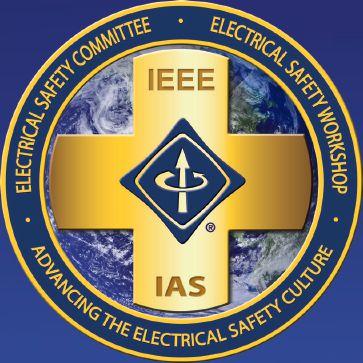
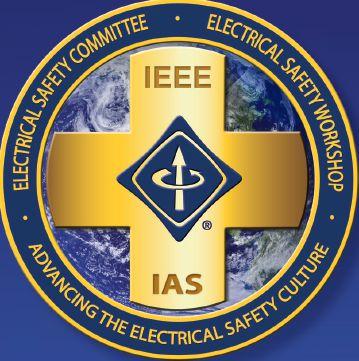


This issue’s advertisers are identified below. Please thank these advertisers by telling them you saw their advertisement in NETA World.

MANUFACTURERS




134 • SPRING 2020 ADVERTISERS
NETA ACCREDITED COMPANIES
Testing Services, Inc. ......................31
Electrical Testing Co., LLC ...............36
Testing and Engineering ..................62
Electrical Testing Co. ....................94 Eastern High Voltage...............................81
Energy Experts, Inc. .......................94
Reliability Services (Vertiv) ................29
Testing Co., Inc. ............................62
Test .......................................100 Hampton Tedder .................................117 Harford Electrical Testing Co. .......................6 High Voltage Maintenance Corp. ...................15 Industrial Electric Testing, Inc. .....................108 Infra-Red Building and Power Service, Inc. ..........121 Nationwide Electrical Testing, Inc. ..................30 North Central Electric, Inc. .........................20 Orbis Engineering Field Services LTD ...............26
Testing, Inc. ..............................63 Power Products & Solutions, Inc. ...................112 Power Systems Testing Co. .........................119 Scott Testing Inc. .................................121 Shermco Industries ..................................9 Sigma Six Solutions, Inc. ...........................112 Taurus Power & Controls, Inc. .....................100 Tony Demaria Electric, Inc. ........................101 Utilities Instrumentation Service .....................6
INDEPENDENT
Absolute
American
Apparatus
Burlington
Electrical
Electrical
Elemco
EnerG
Potomac
AND OTHER SERVICE PROVIDERS Advanced Test Equipment Rentals (ATE Corp) ..............27 AEAMC ..................................................82 AEMC ...................................................15 Aero Tech Laboratories .....................................26 Ampteks .................................................119 AVO Training ............................................113 BCS Switchgear .....................................8, 70–71 Belyea Company ...........................................43 Bullock Breakers ...........................................69 Burlington Safety Laboratory, Inc. ...........................54 CBS ArcSafe ..............................................21 Circuit Breaker Sales Co., Inc................................42 Doble Engineering .........................................53 Dranetz ...................................................43 ECP Solutions .............................................55 Electrical Safety Workshop 2020 ...........................133 High Voltage Inc. ..........................................20 High Voltage Electric Service, Inc. ...........................54 HV Diagnostics, Inc. .......................................93 Intellirent ................................................109 Megger ....................................Inside Front Cover National Switchgear ........................................83 NETA ANSI/NETA ECS ................................116 NETA PowerTest 2020 Thank You Sponsors .................19 NETA PowerTest 2021 Call for Exhibitors ...................37 NETA PowerTest 2021 Call for Sponsors ....................95 NETA PowerTest 2021 Call for Speakers ...................107 OMICRON electronics Corp. USA.................Back Cover Phenix Technologies, Inc. ...................................54 Protec Equipment Resources .................................5 Quality Switchgear.........................................30 Raytech .....................................Inside Back Cover Sertec .....................................................20 Solid State Exchange .......................................16 Southland Electrical ......................................108 Technitrol, Inc. ............................................26 Thyritronics, Inc............................................94 Utility Relay Company ....................................126 Vacuum Interrupters, Inc. ..................................82
ADVERTISERS


CAPO 12



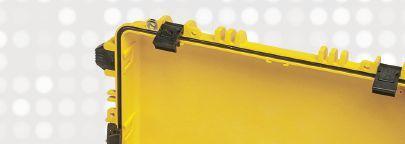




Raytech’s CAPO 12 offers features that allow you to take advantage of the current and future testing methods.




• • • • • •


































































 Scott A. Blizard, President International Electrical Testing Association
Scott A. Blizard, President International Electrical Testing Association






 BY RON WIDUP and JIM WHITE, Shermco Industries
BY RON WIDUP and JIM WHITE, Shermco Industries













































































































































































































 PHOTO: © ISTOCKPHOTO.COM/PORTFOLIO/MILANVIRIJEVIC
PHOTO: © ISTOCKPHOTO.COM/PORTFOLIO/MILANVIRIJEVIC

































 BY JEFF JOWETT, Megger
BY JEFF JOWETT, Megger































 BY RICK YOUNGBLOOD, EM Testing
BY RICK YOUNGBLOOD, EM Testing





































 BY RANDY COX, GE Grid Solutions
BY RANDY COX, GE Grid Solutions































 BY DANIEL CARREÑO, ABEL GONZÁLEZ GÓMEZ, and VOLNEY NARANJO, Megger
BY DANIEL CARREÑO, ABEL GONZÁLEZ GÓMEZ, and VOLNEY NARANJO, Megger
















































 BY OLEG ROIZMAN, Intellpower Pty. Ltd, and JAMES J. DUKARM, Delta-X Research Inc.
BY OLEG ROIZMAN, Intellpower Pty. Ltd, and JAMES J. DUKARM, Delta-X Research Inc.






































































































































































































